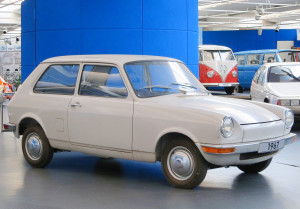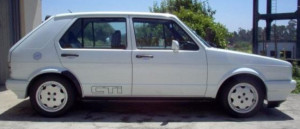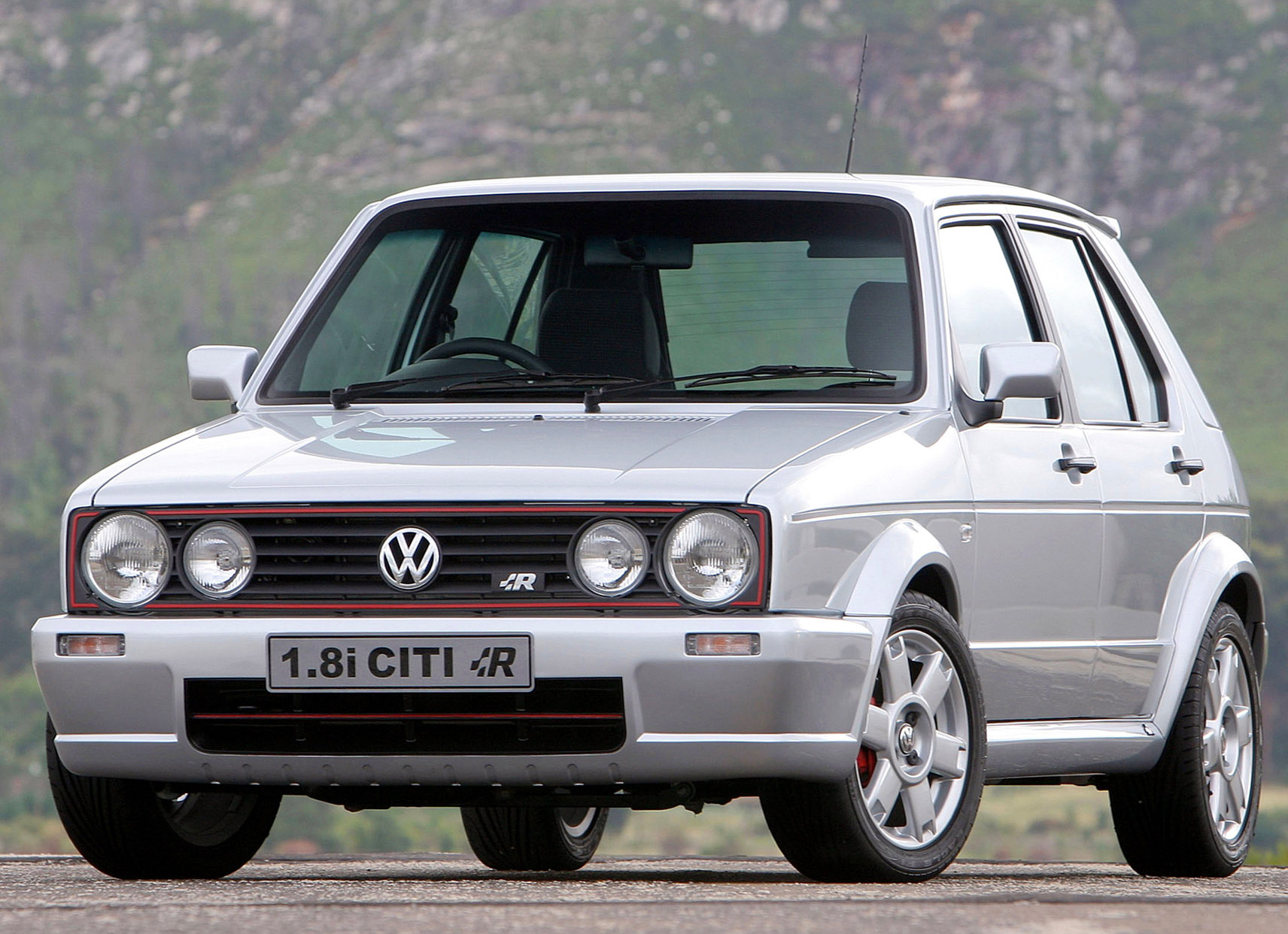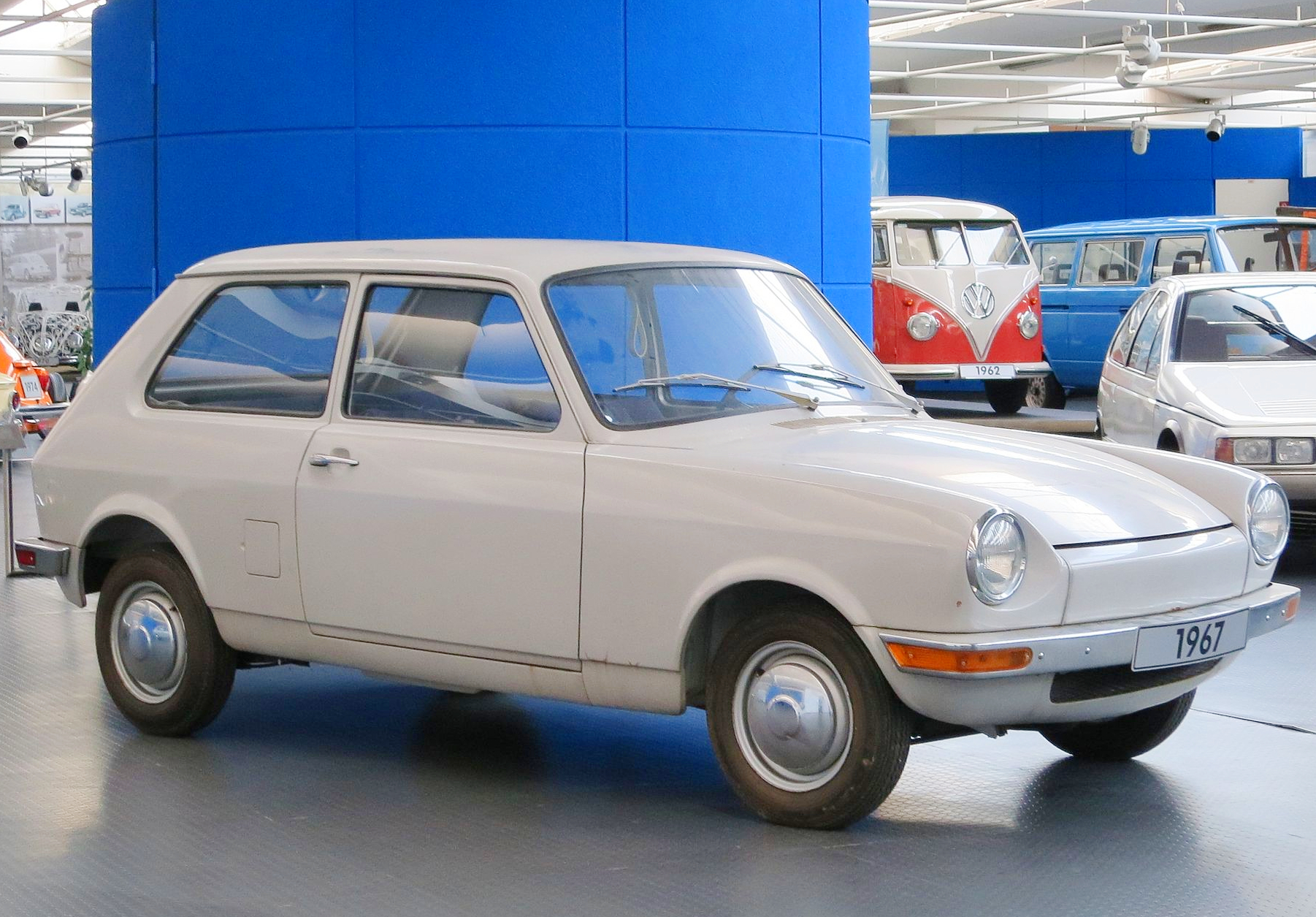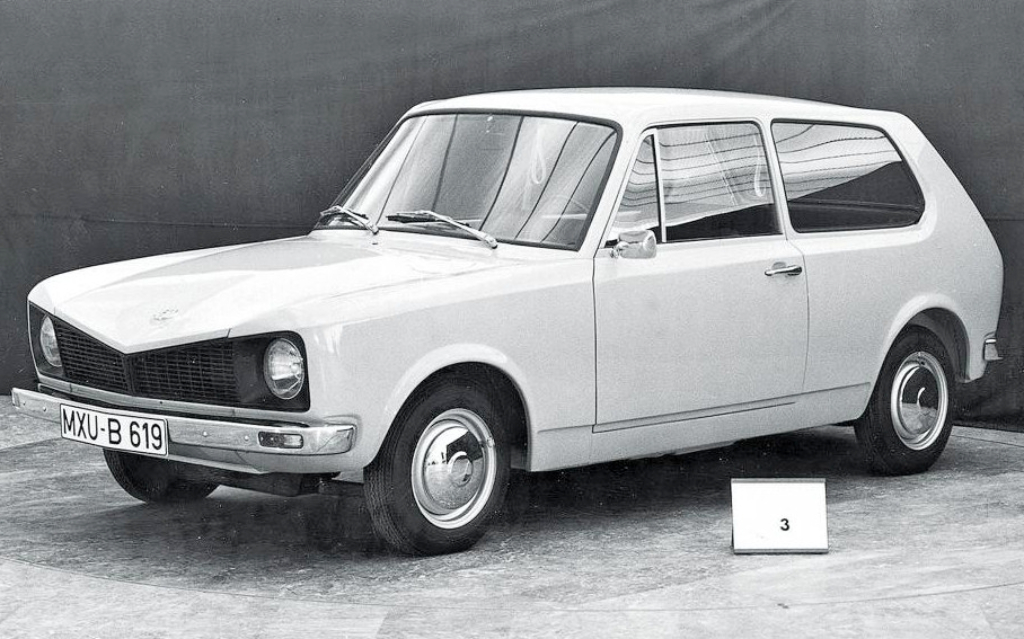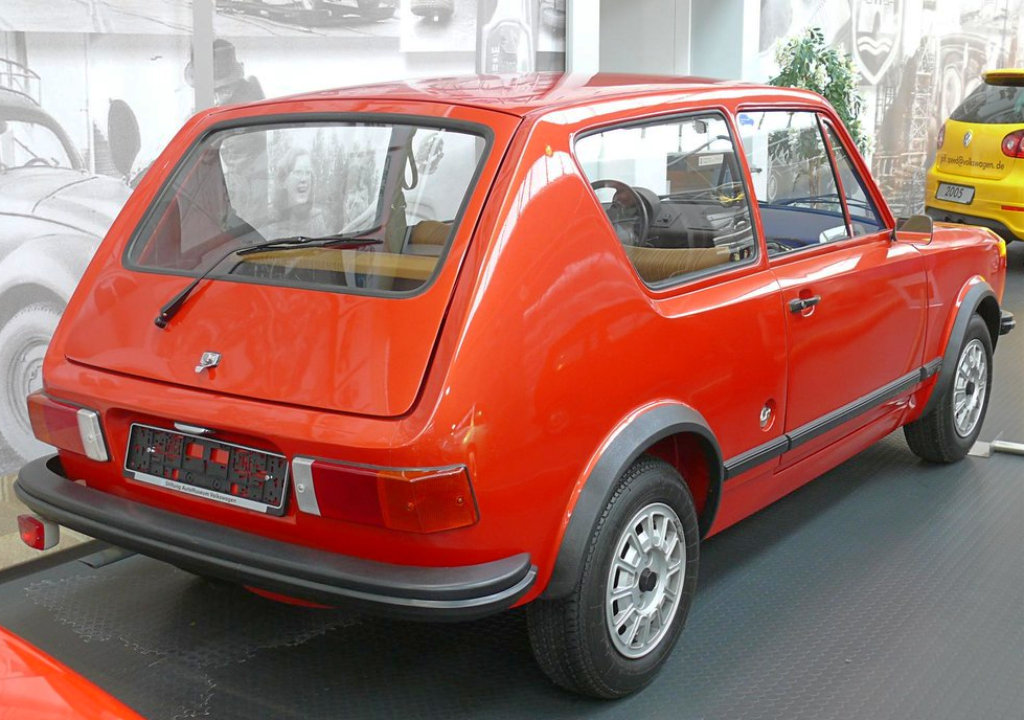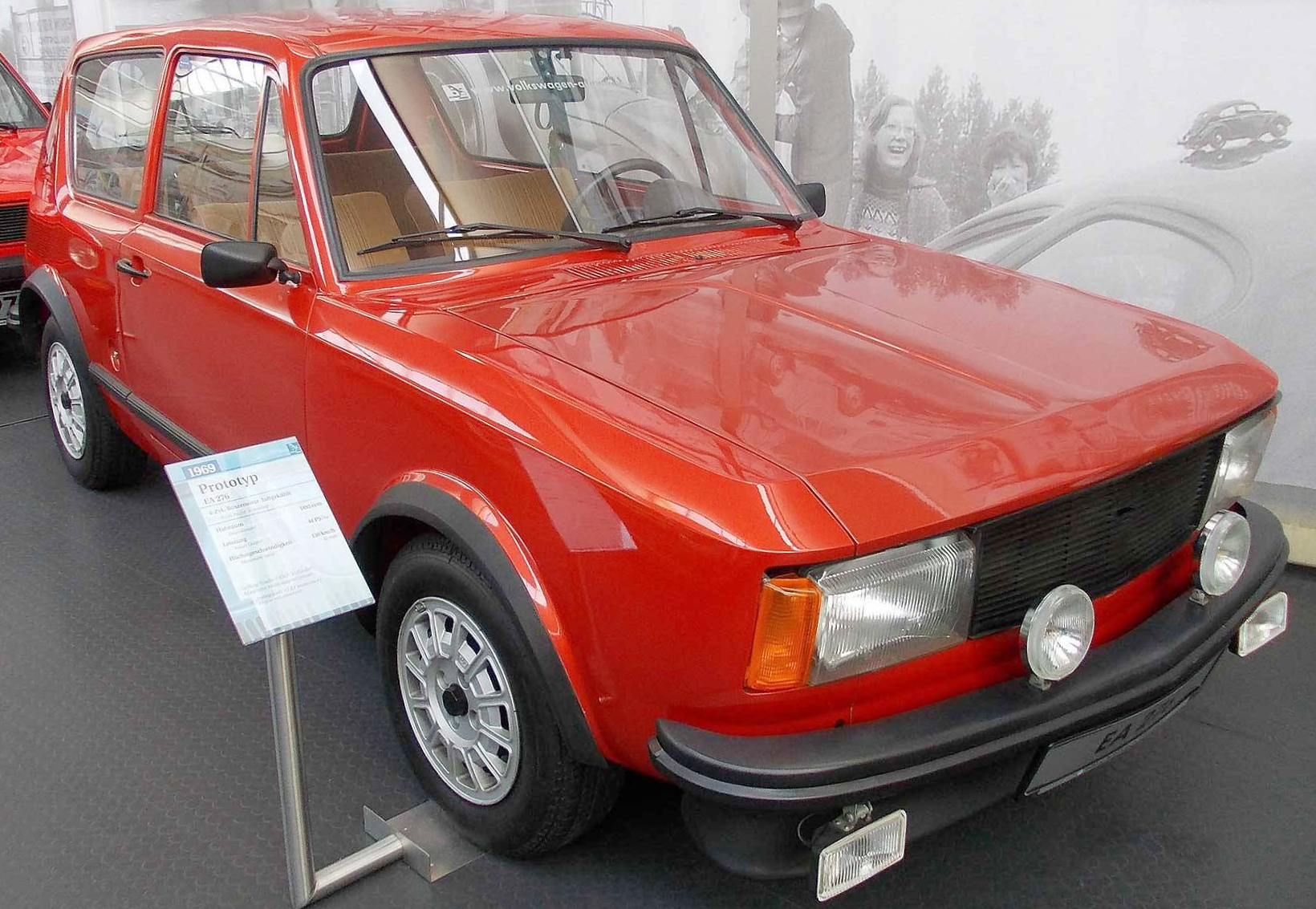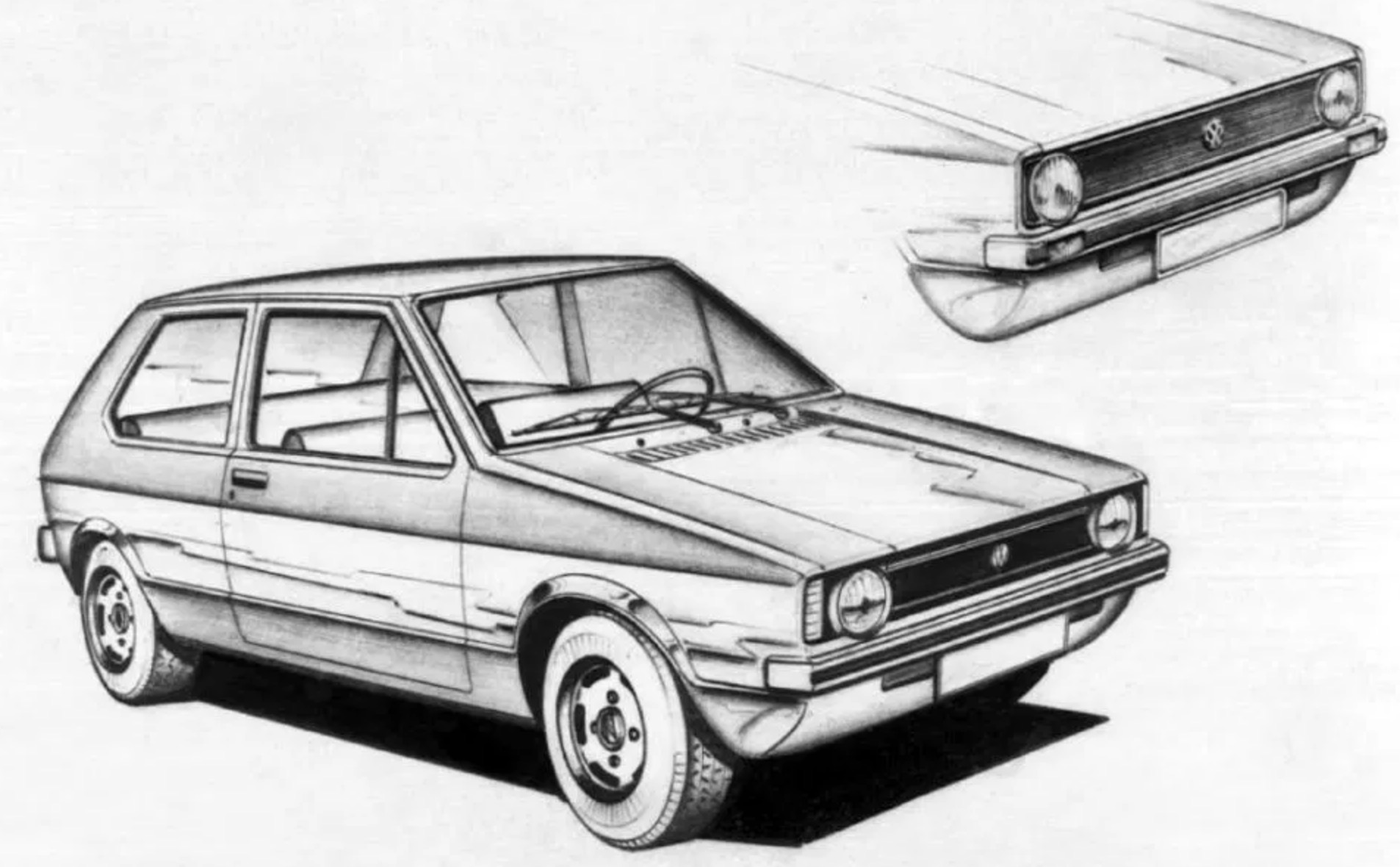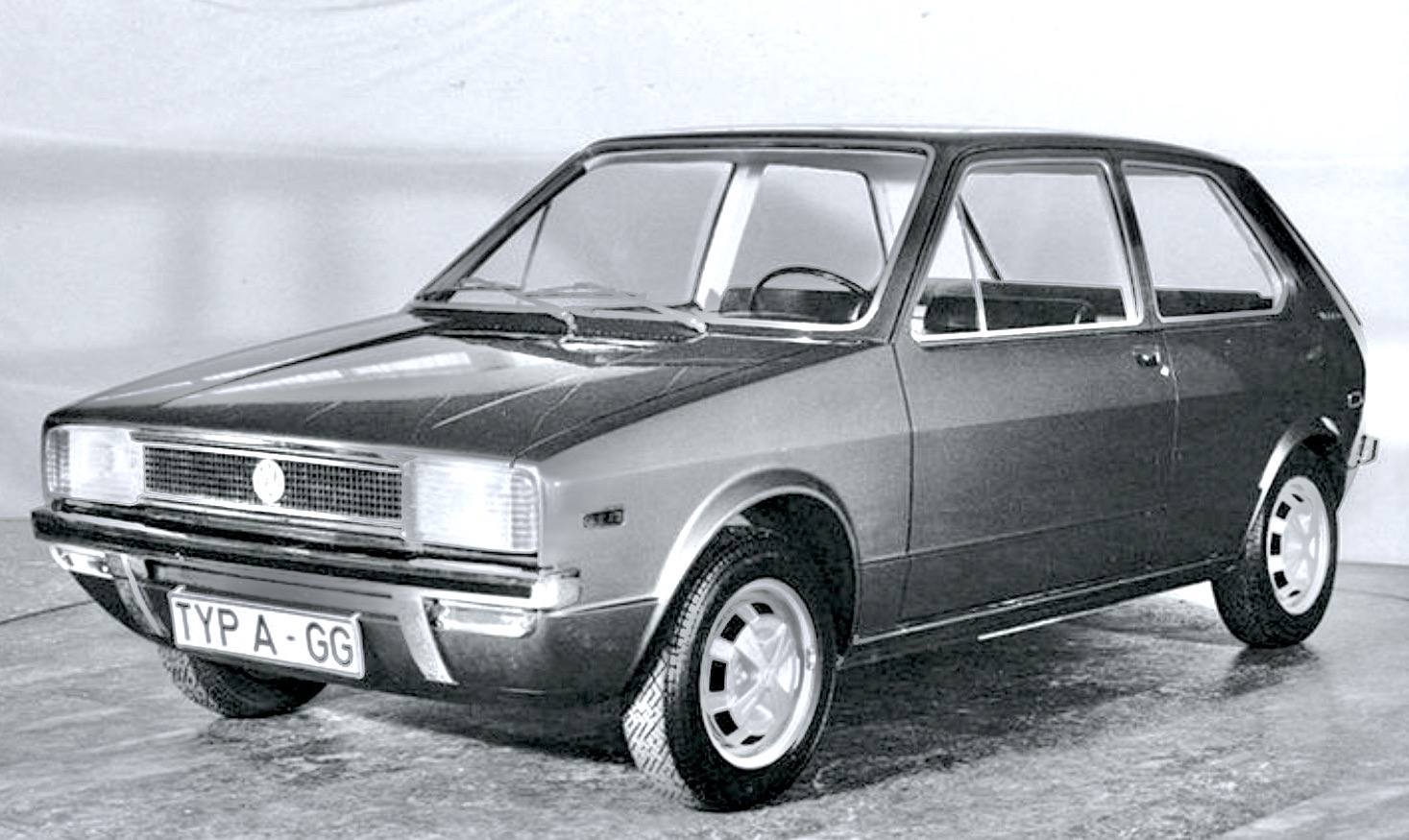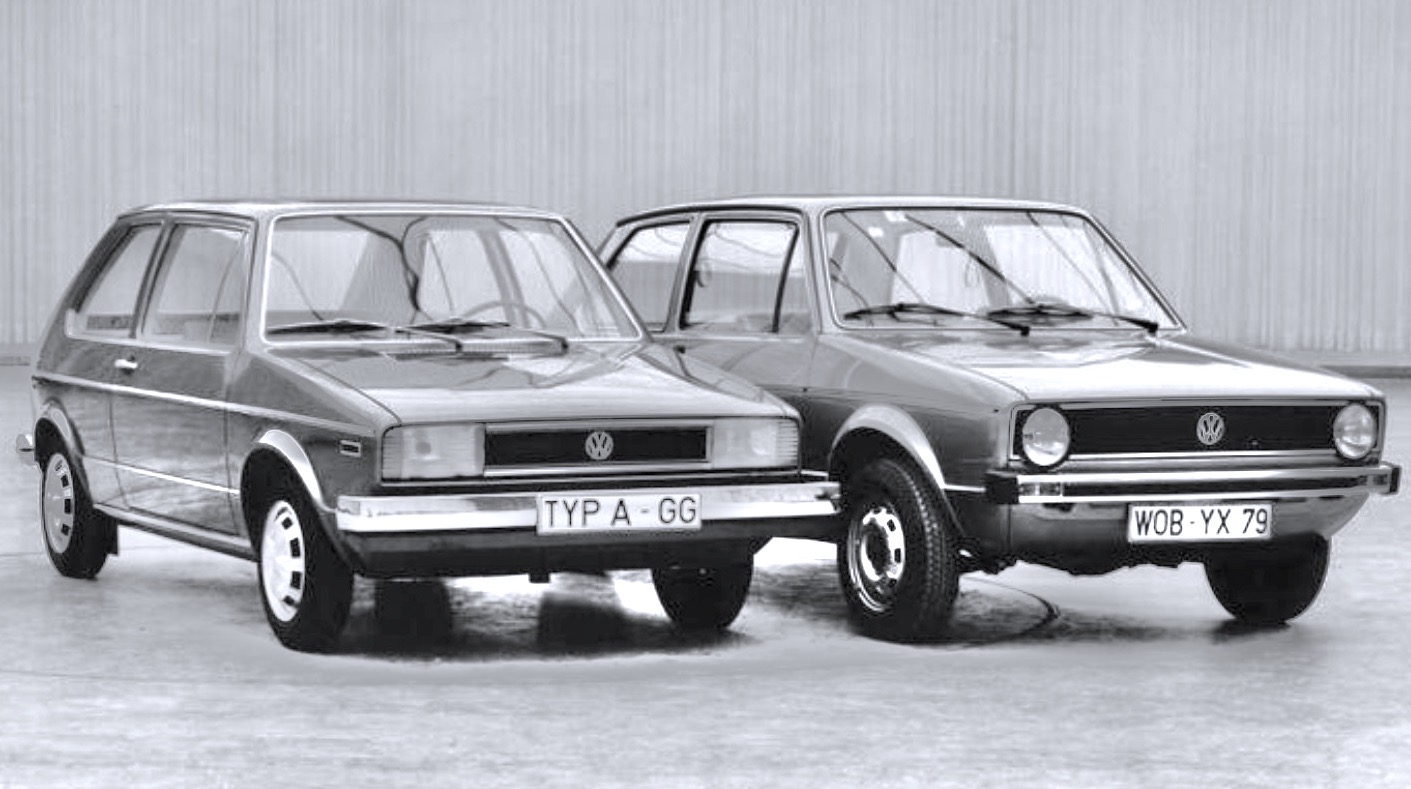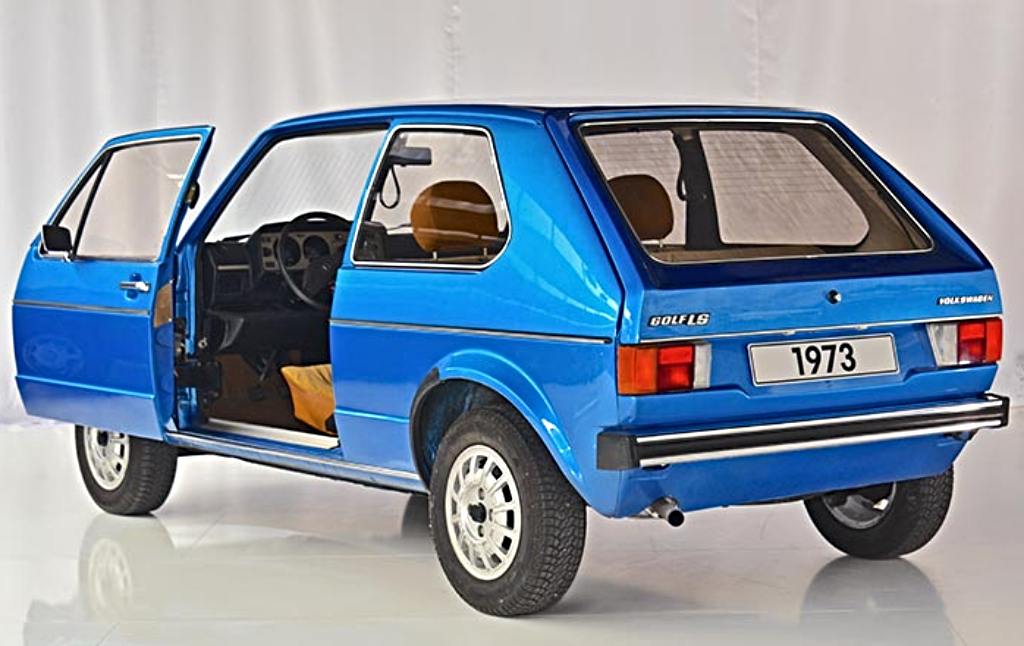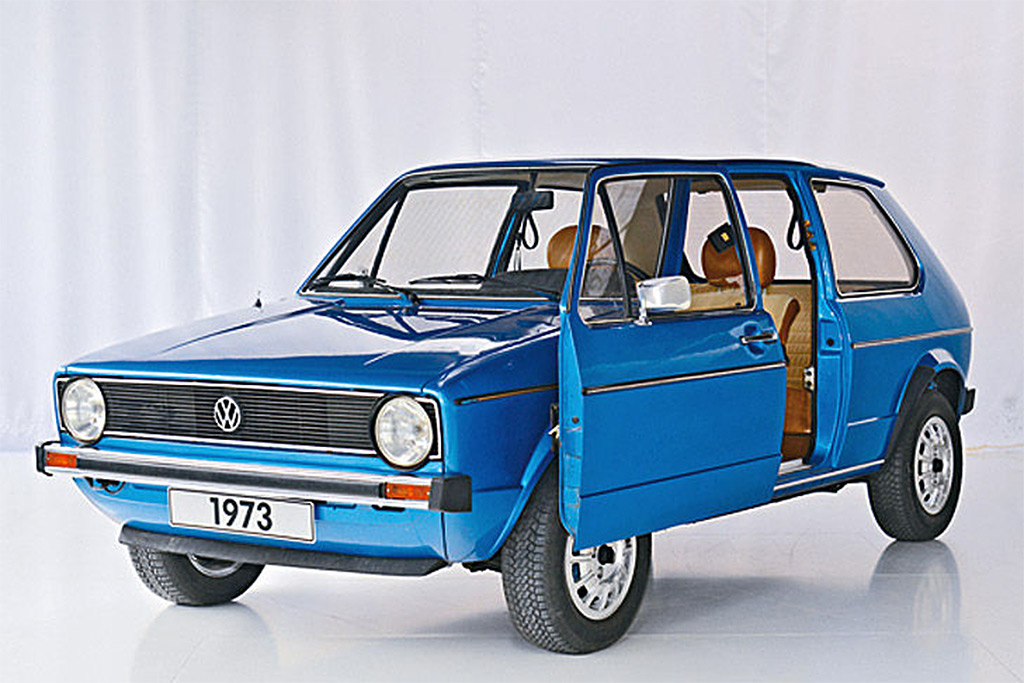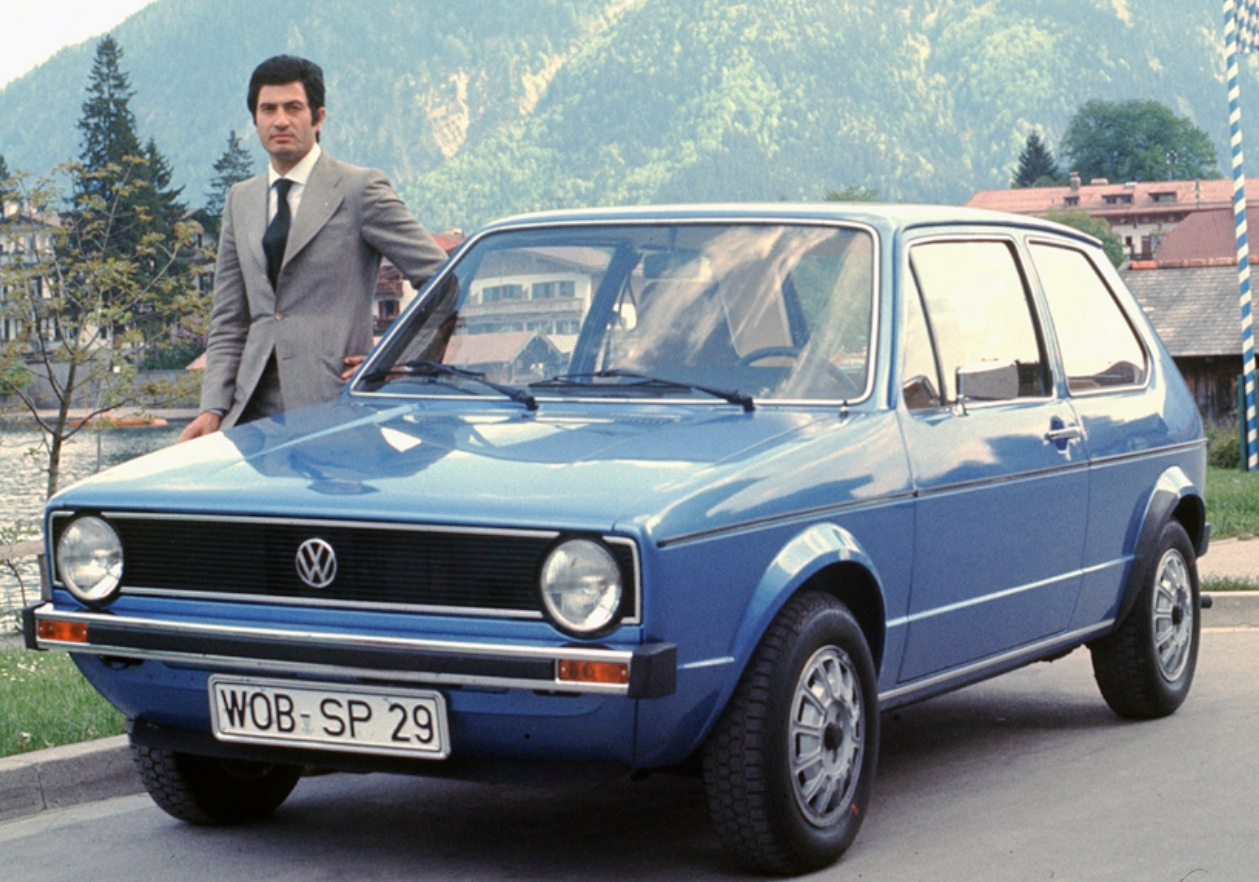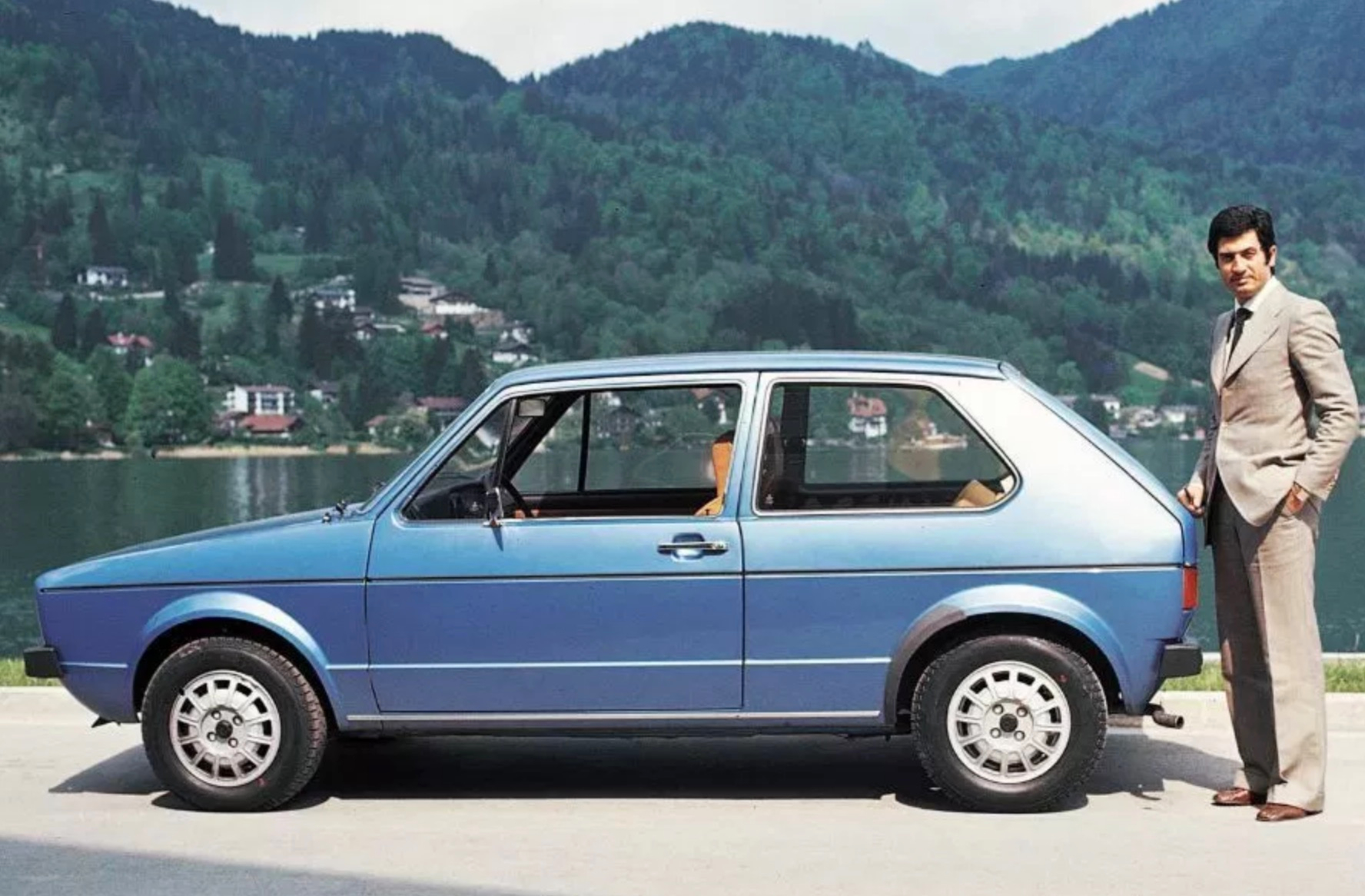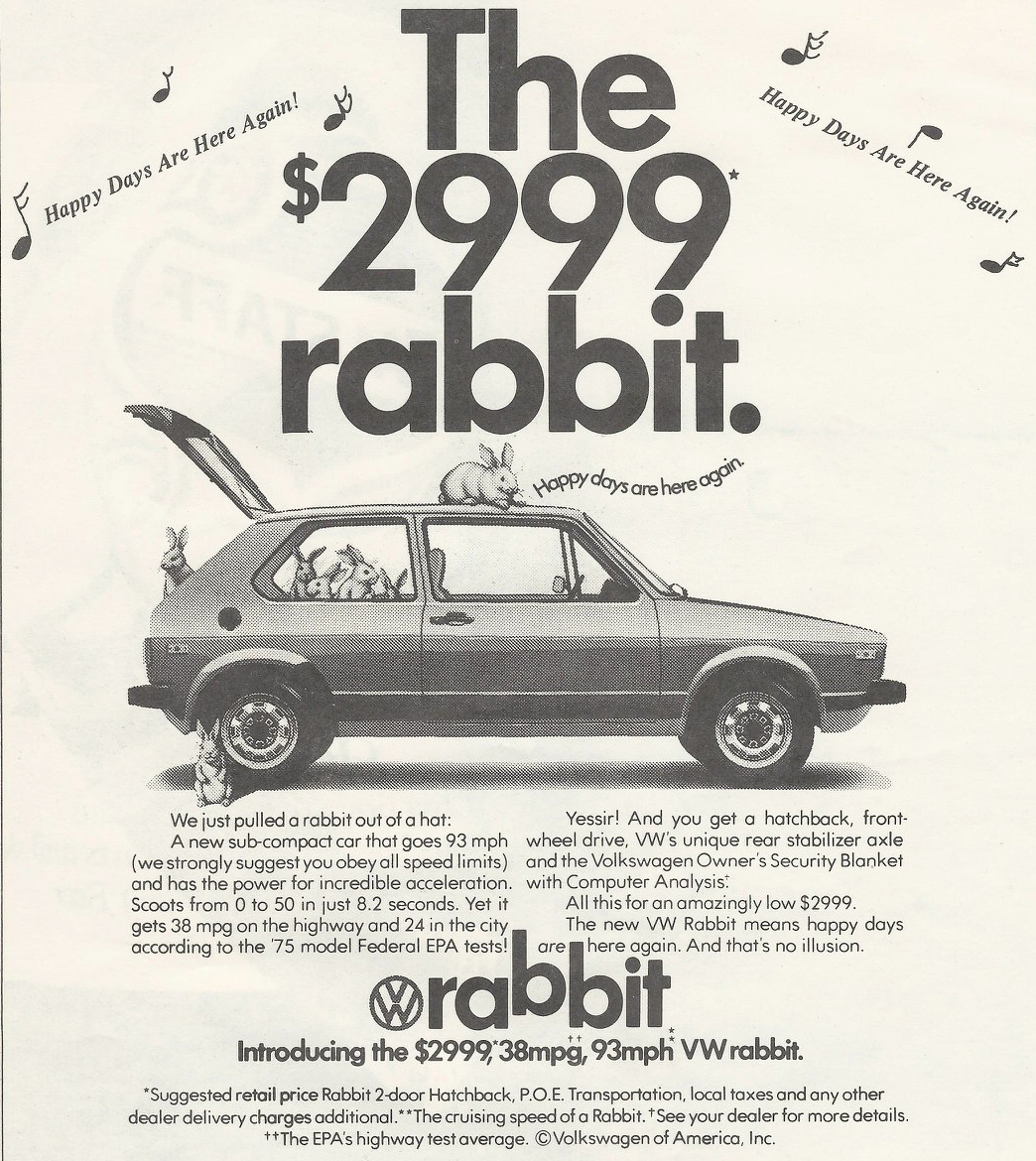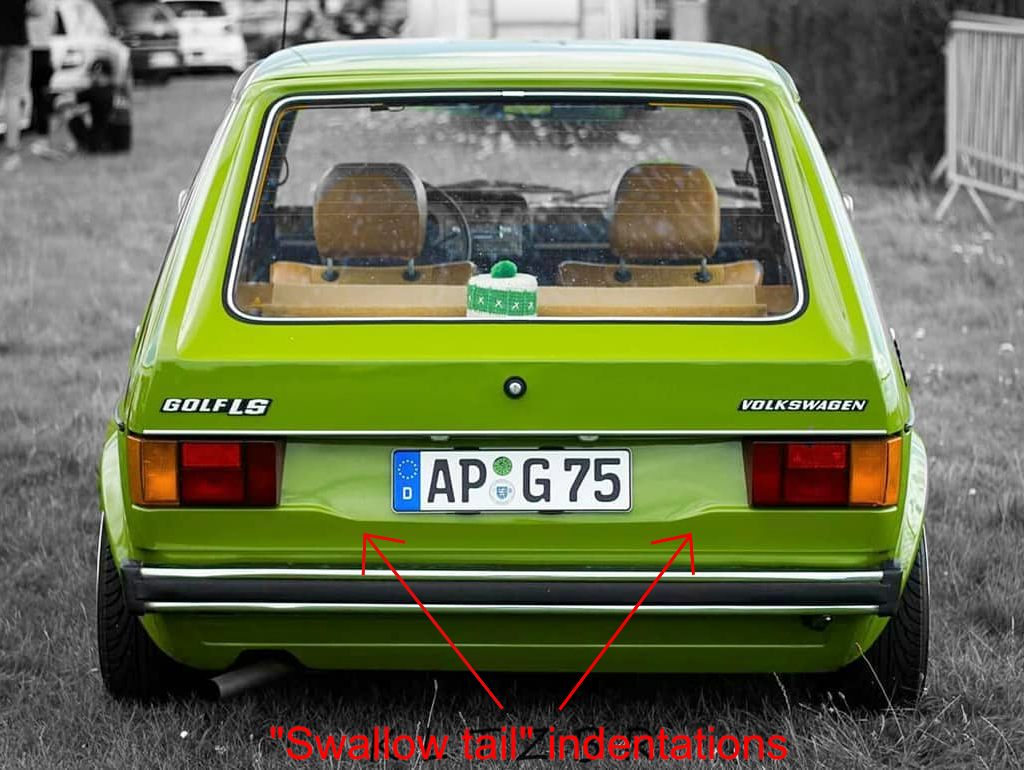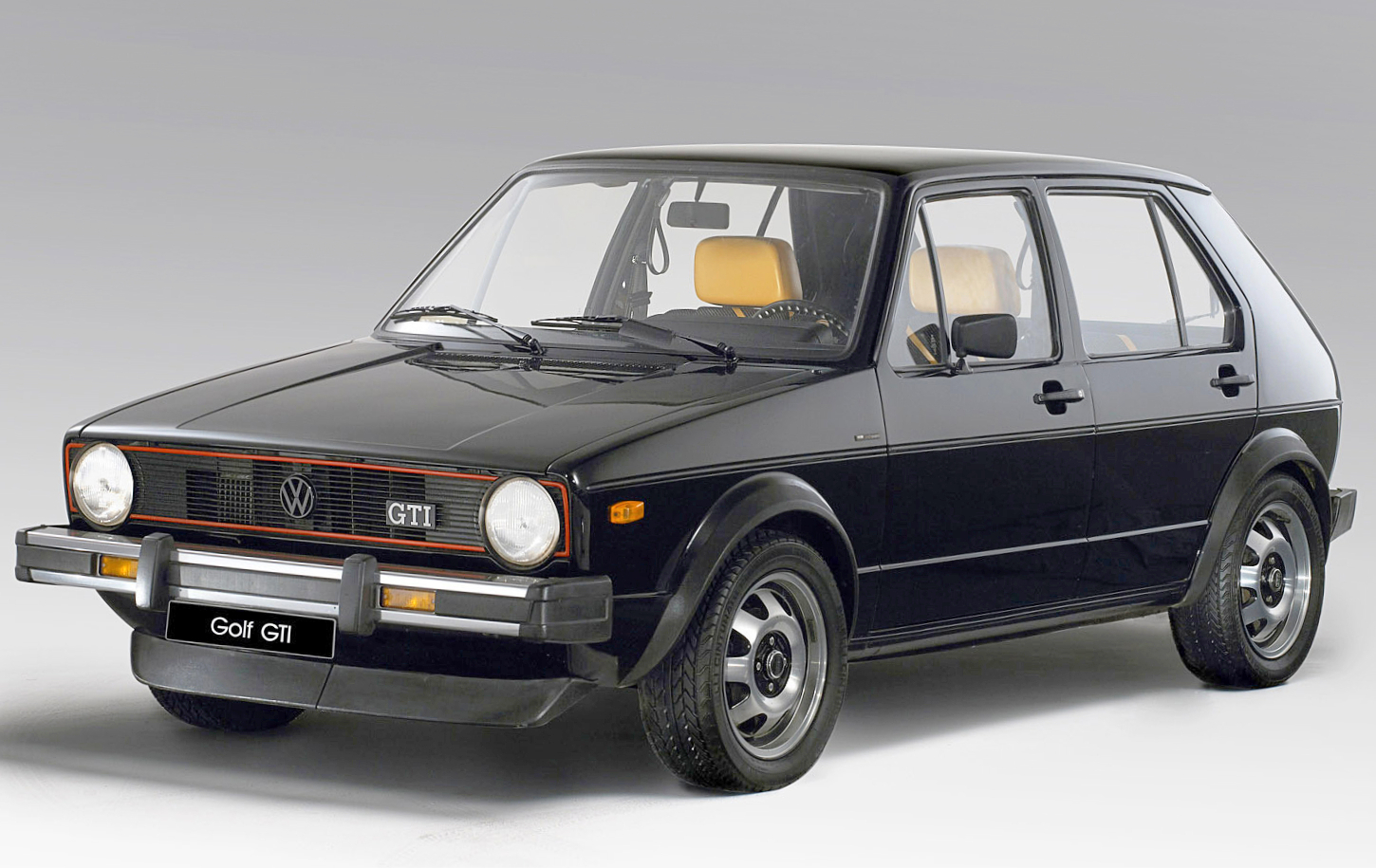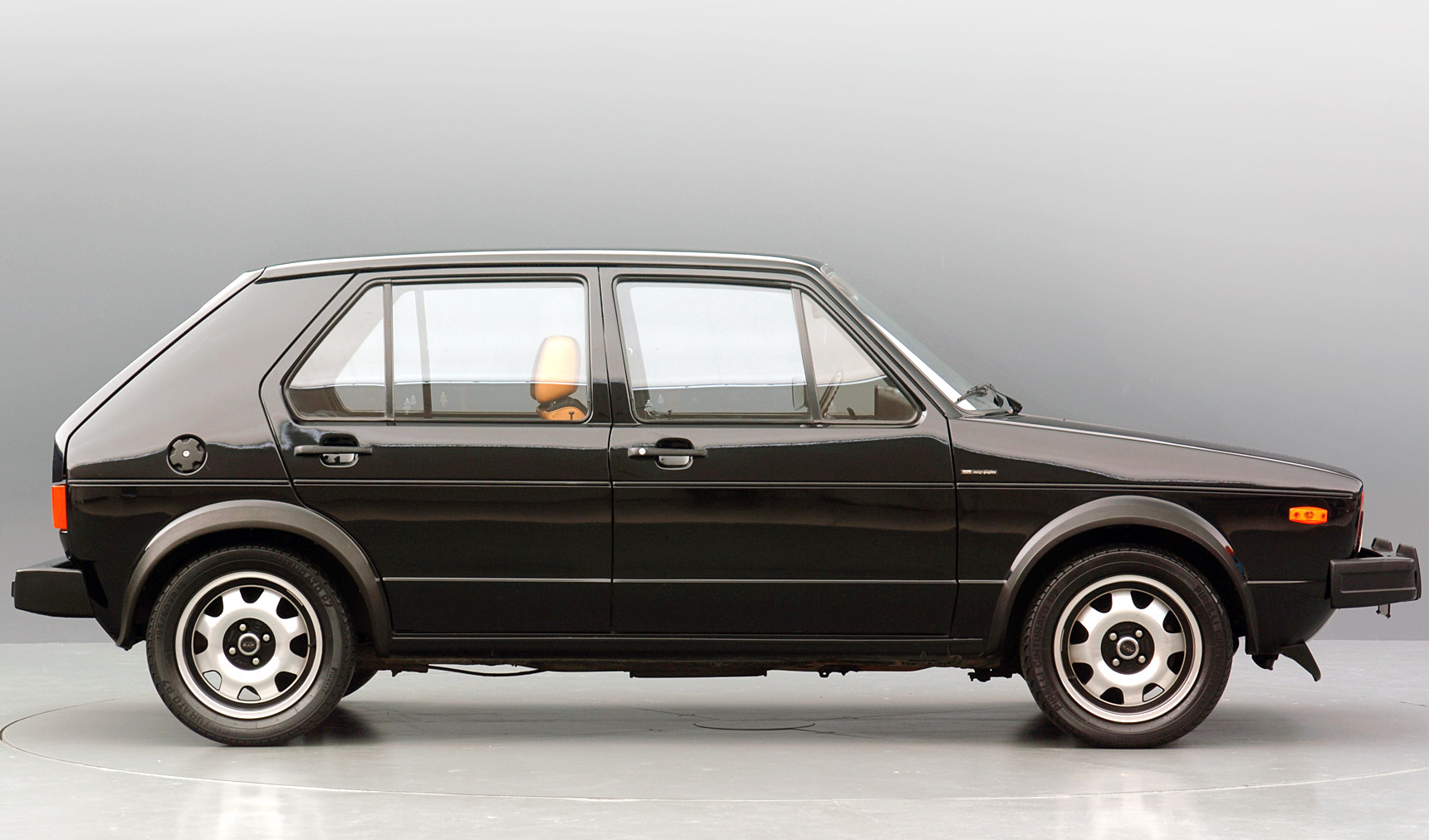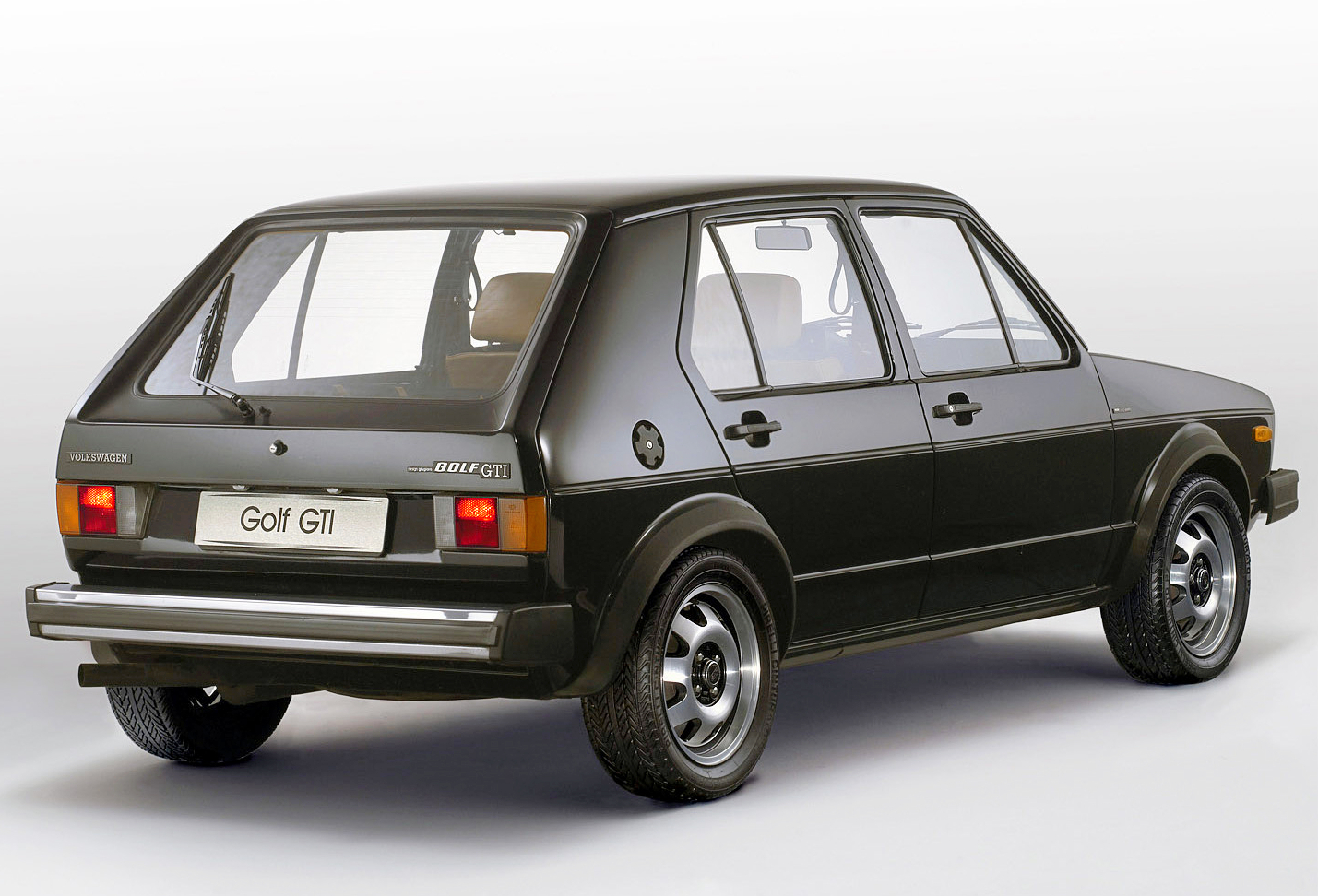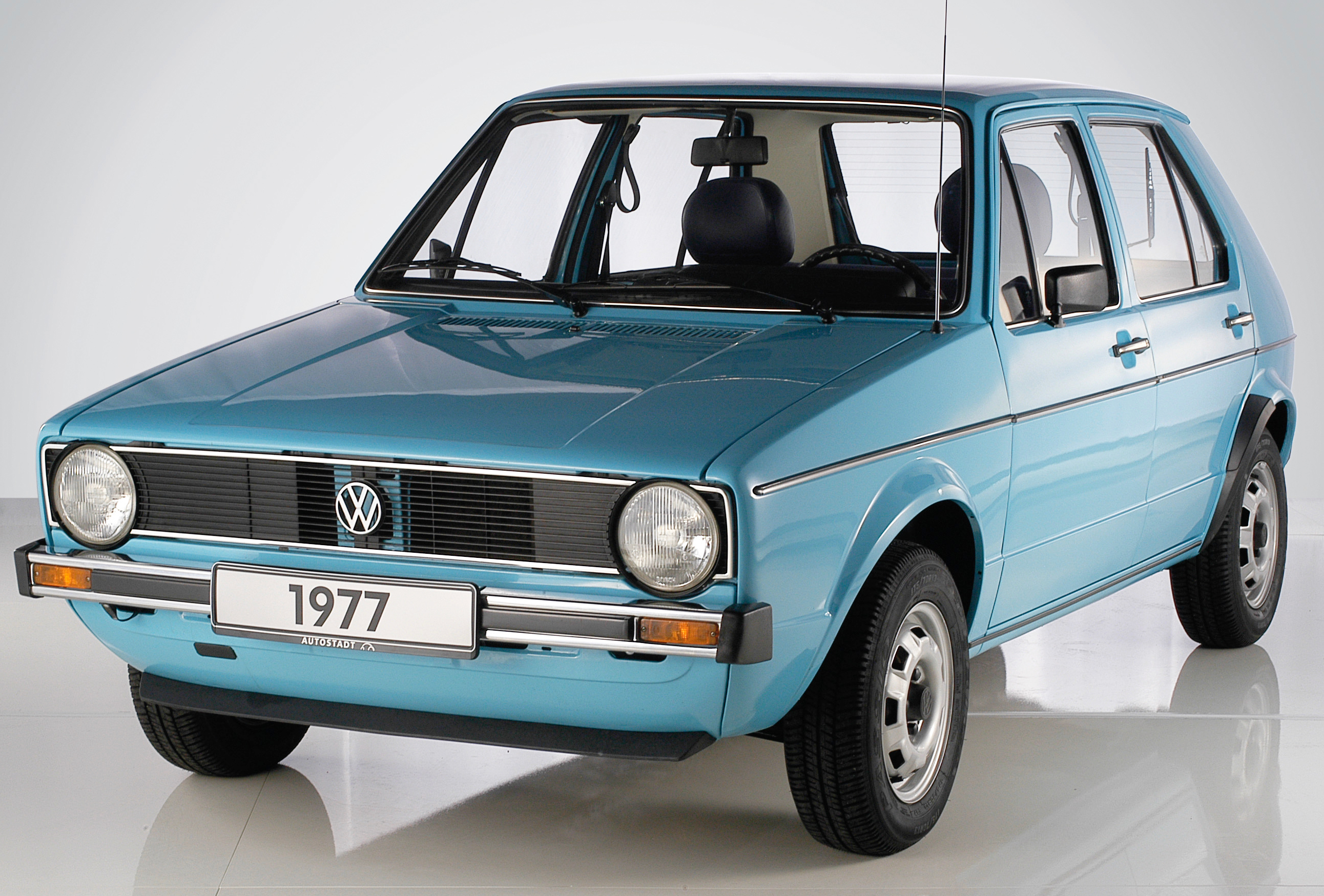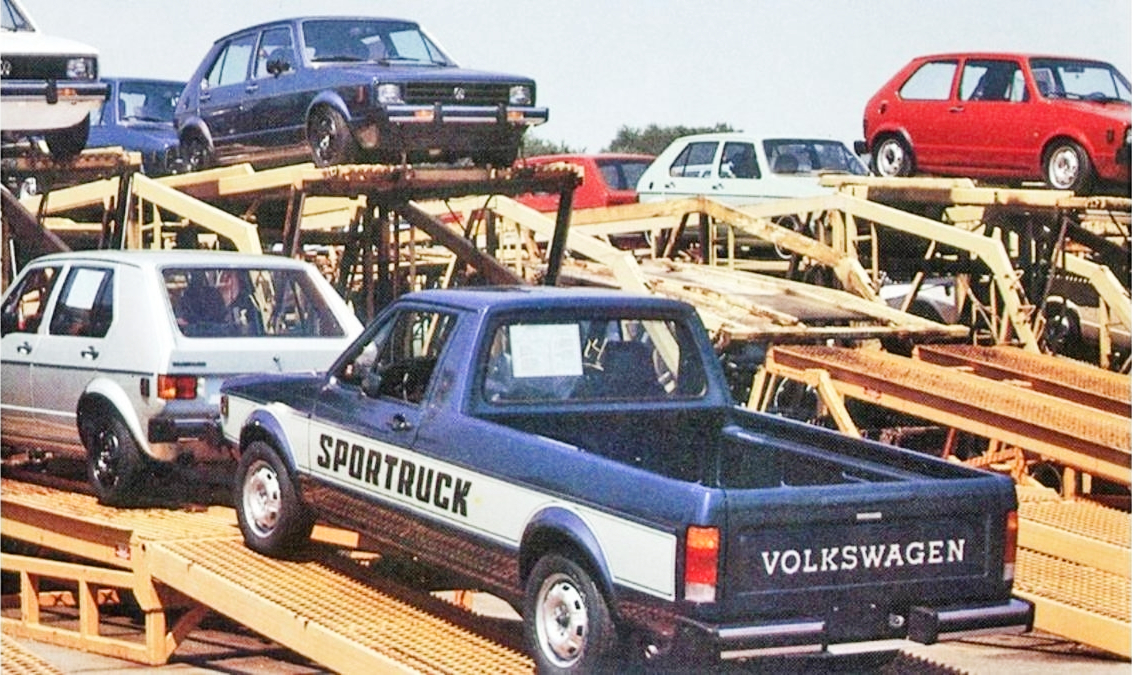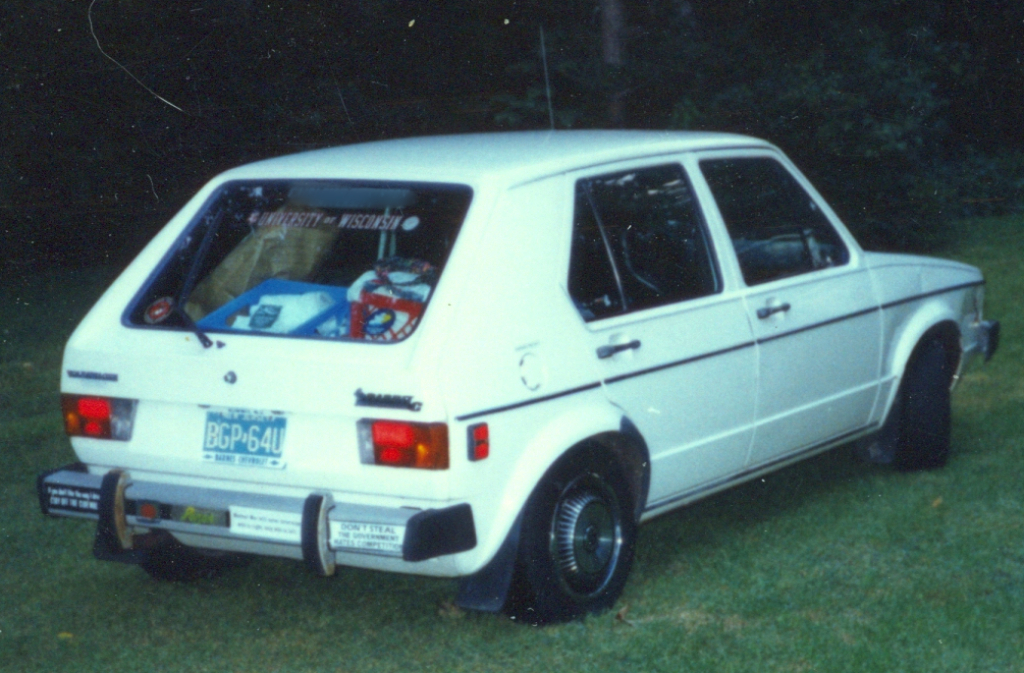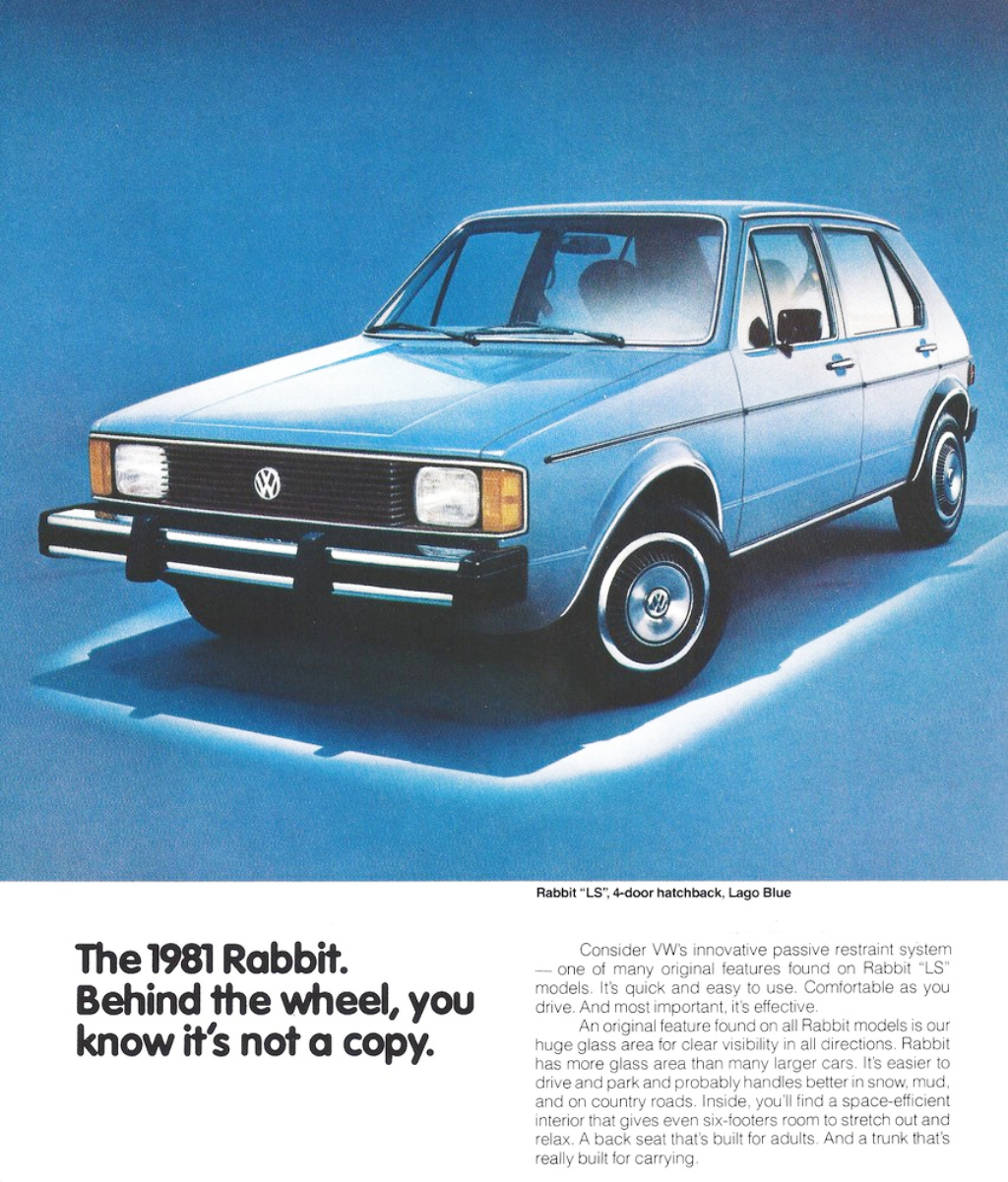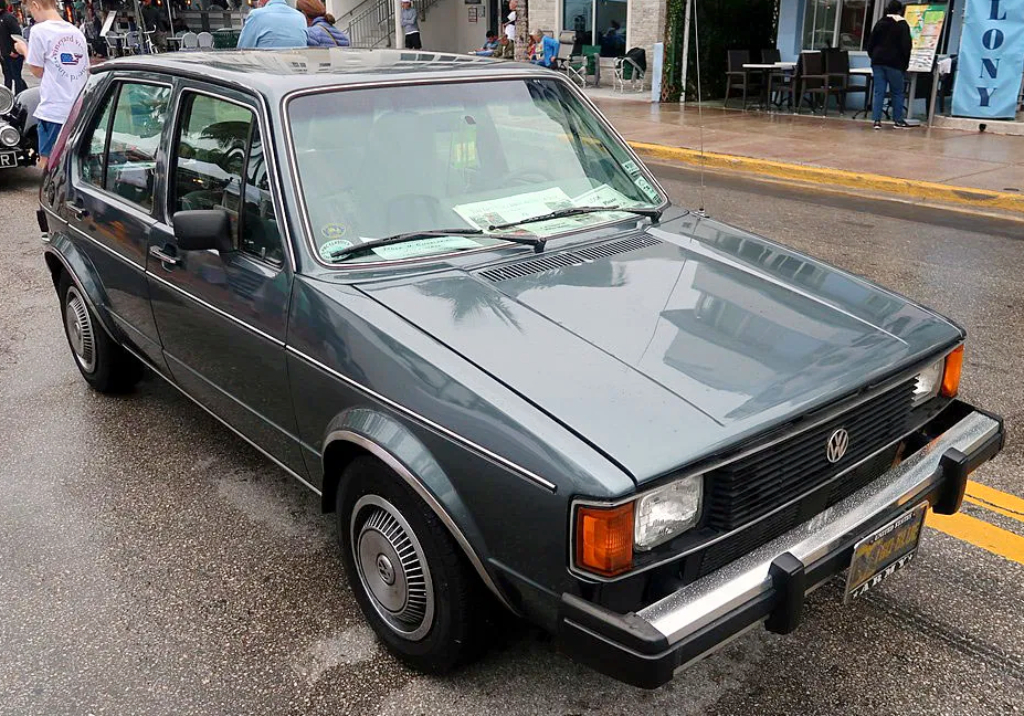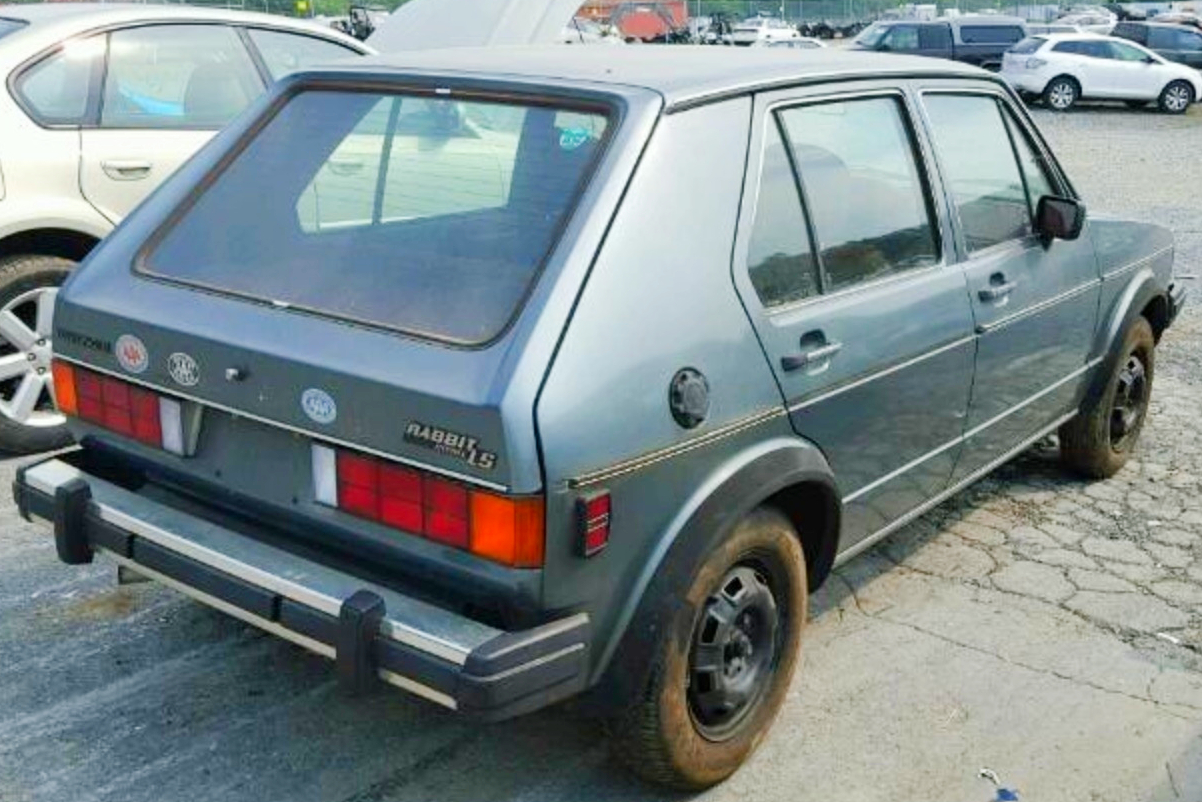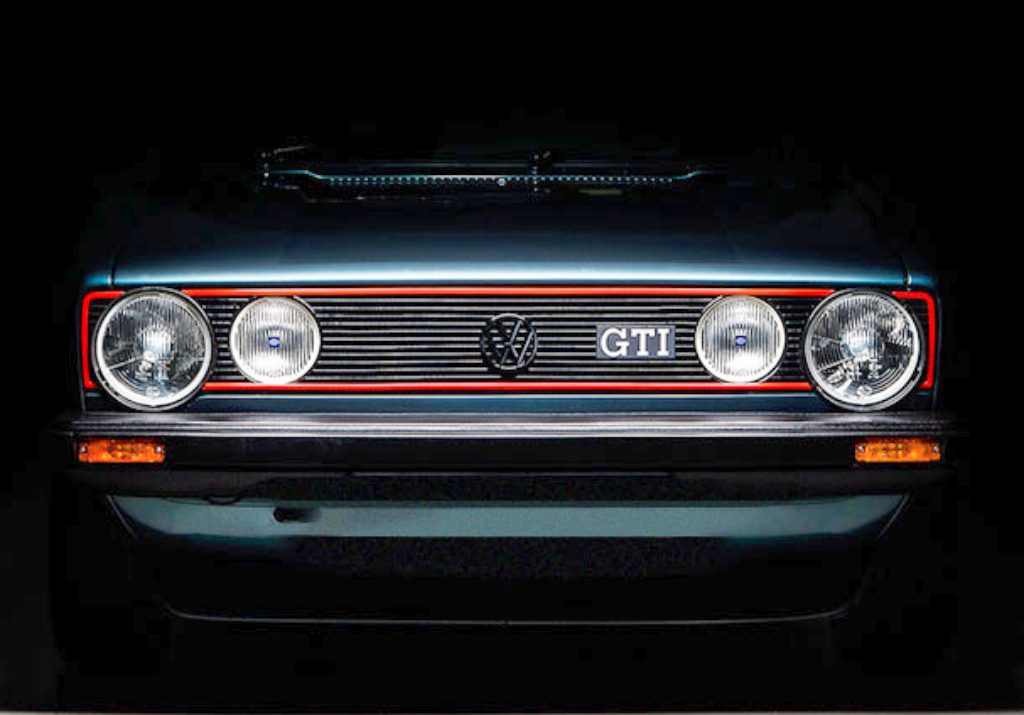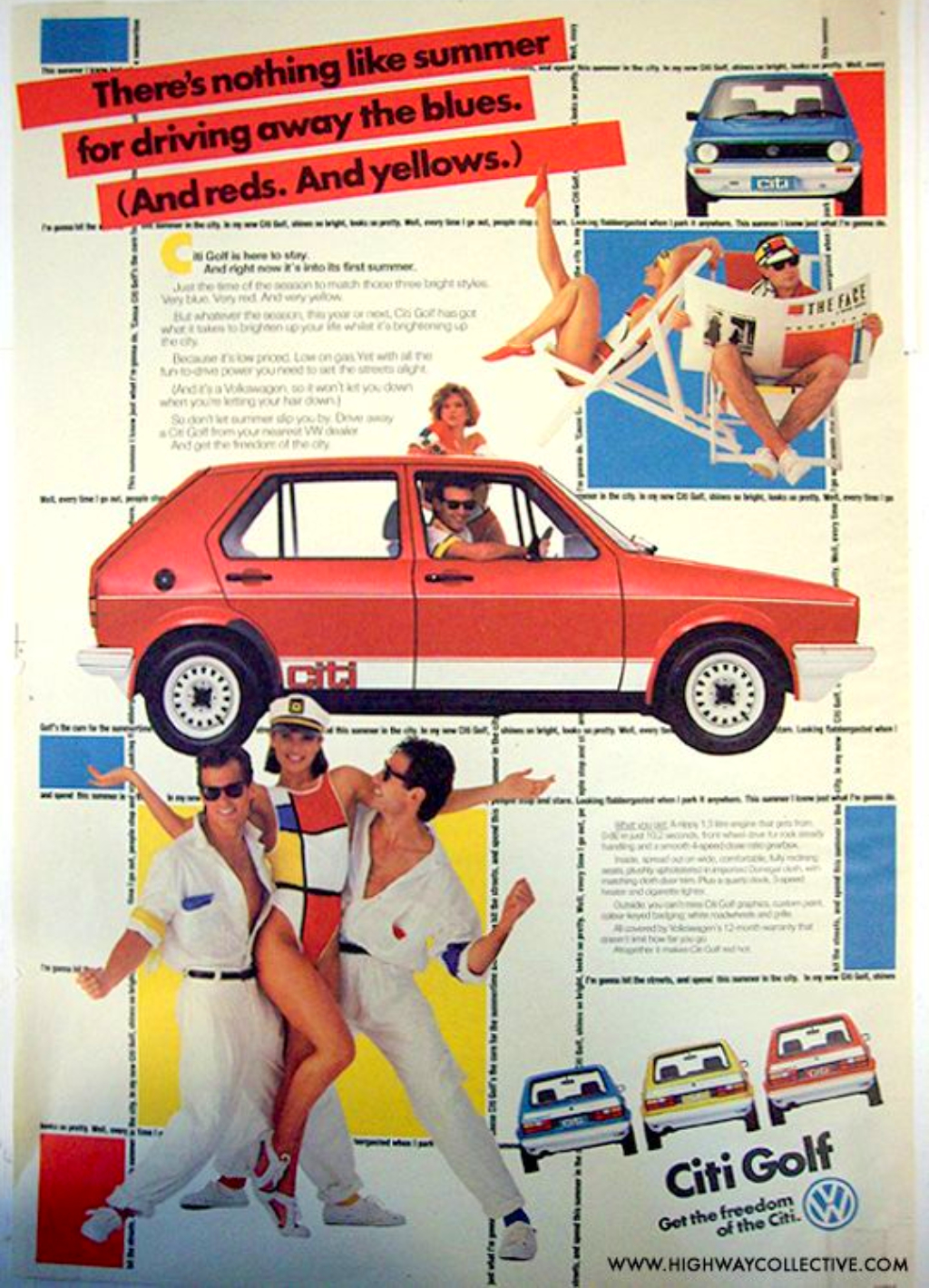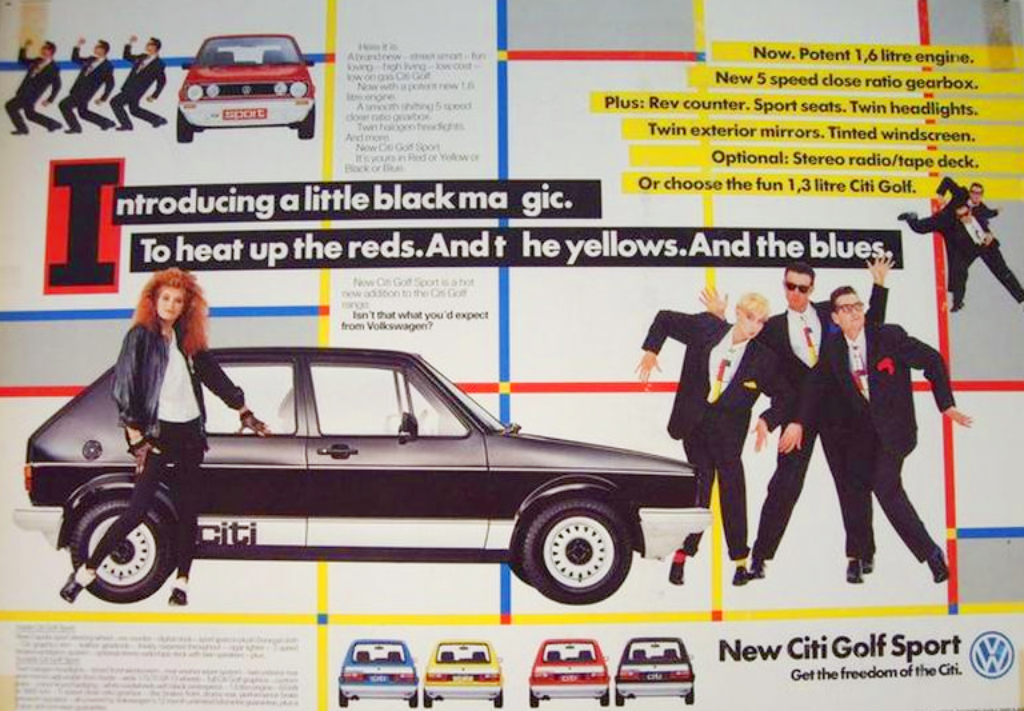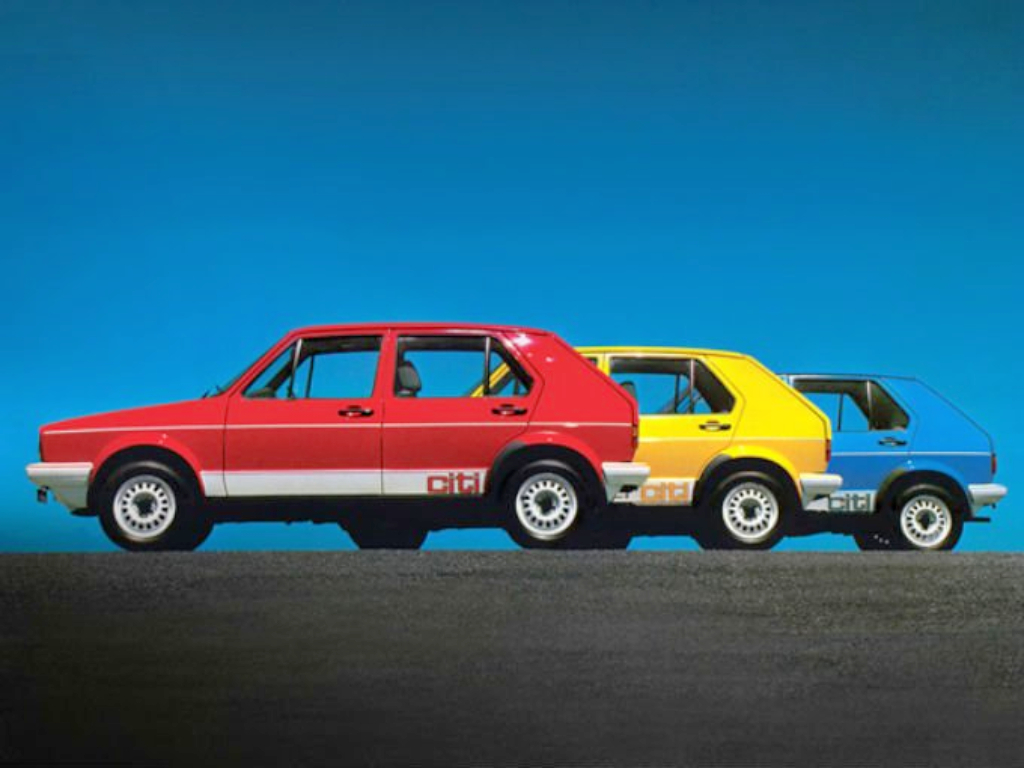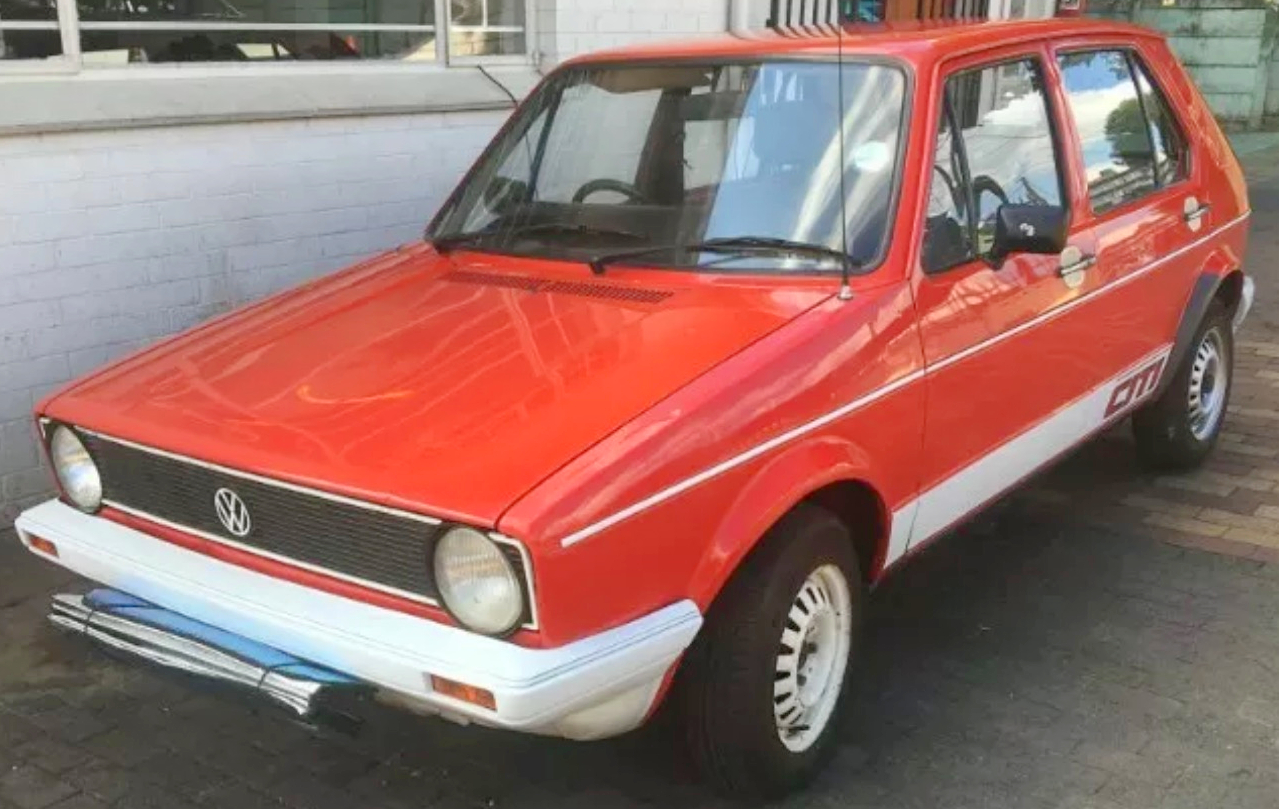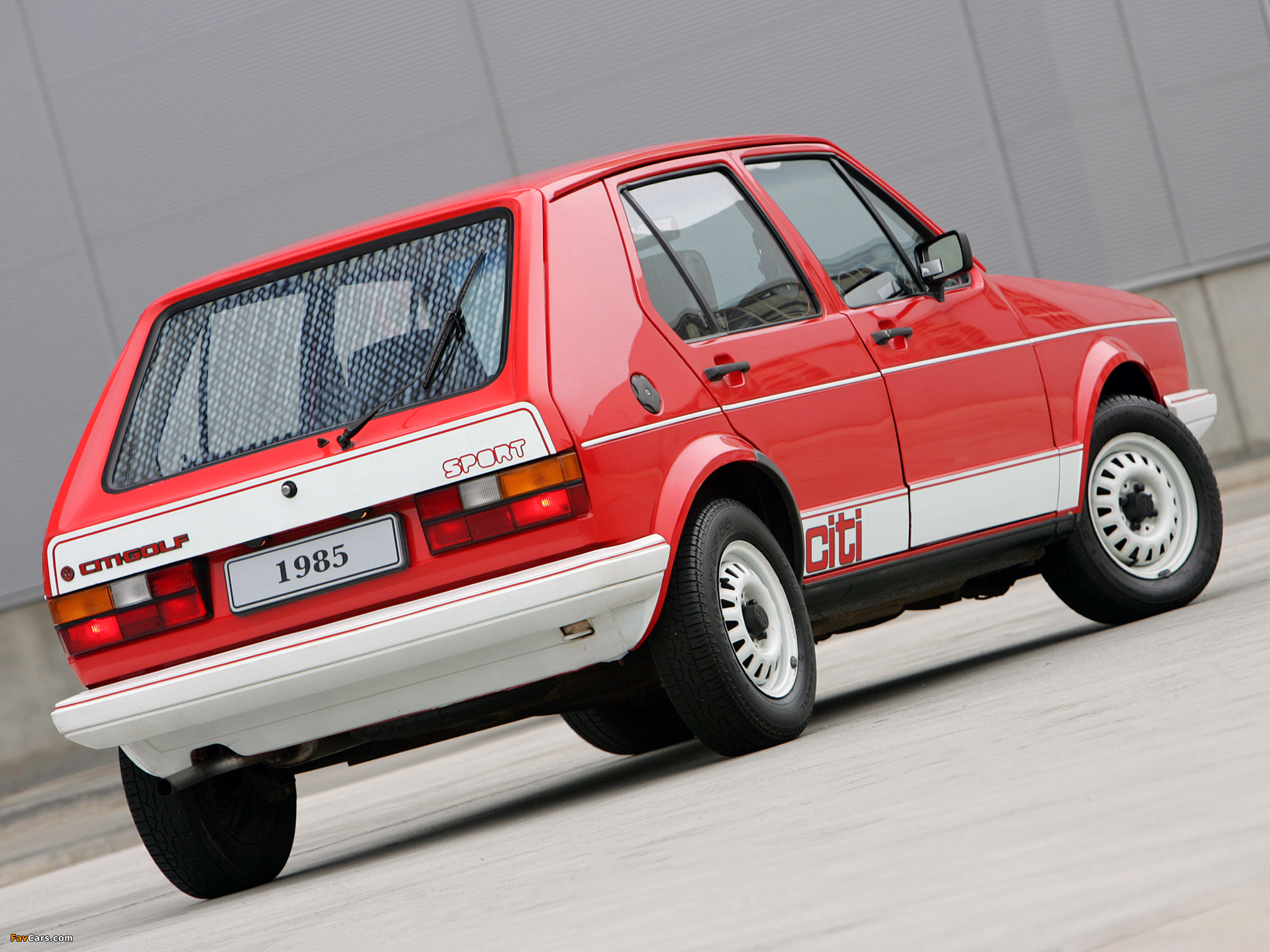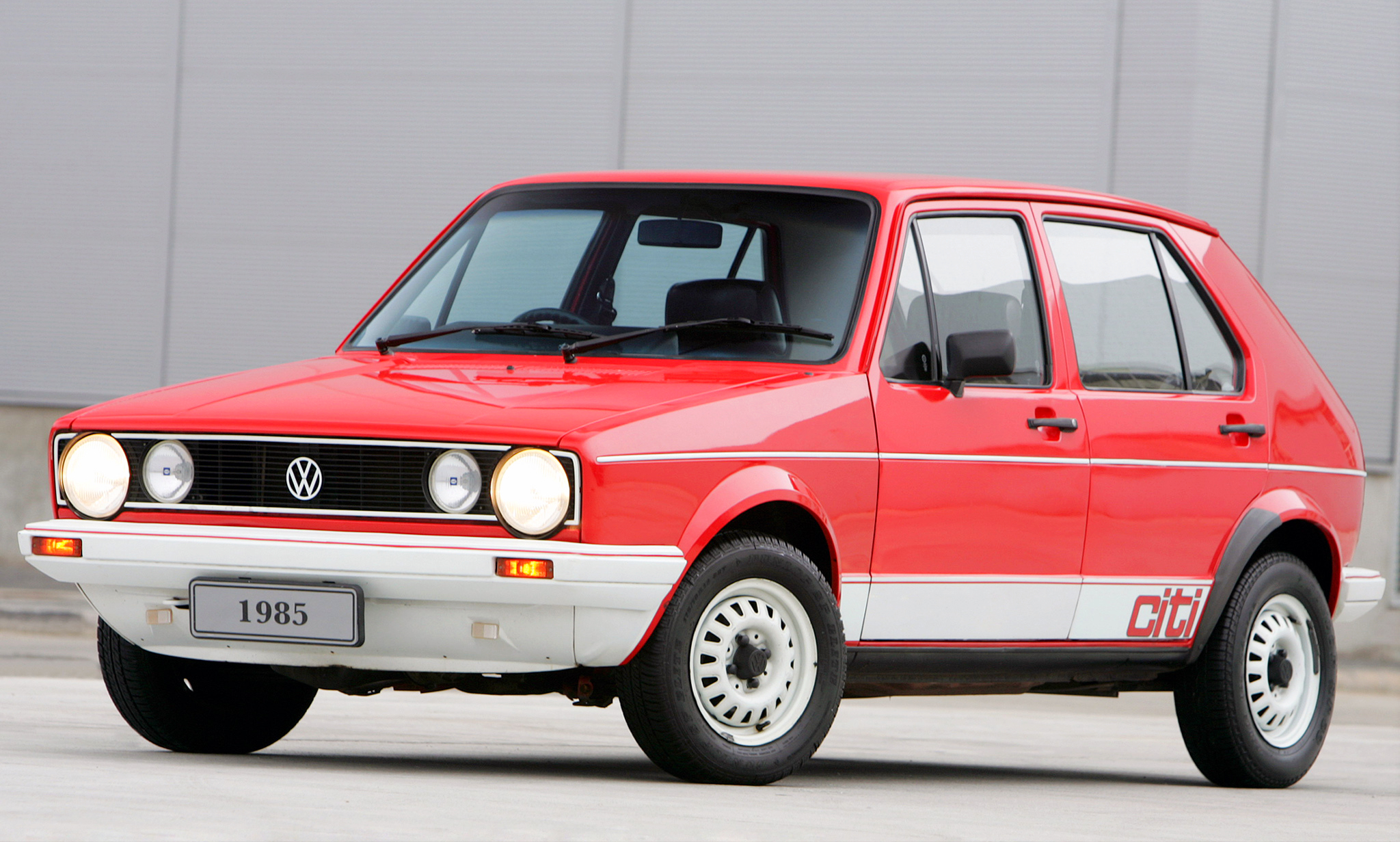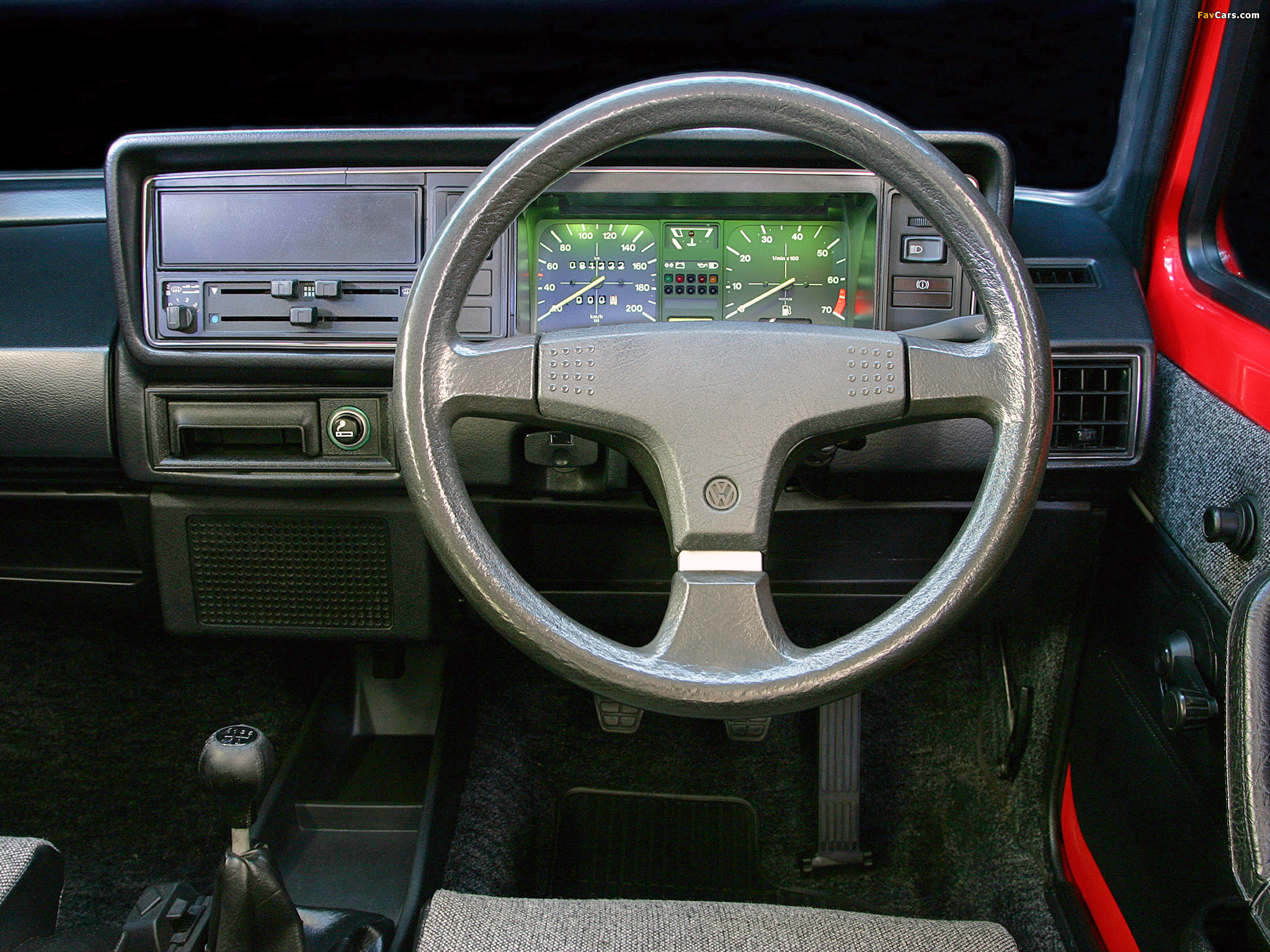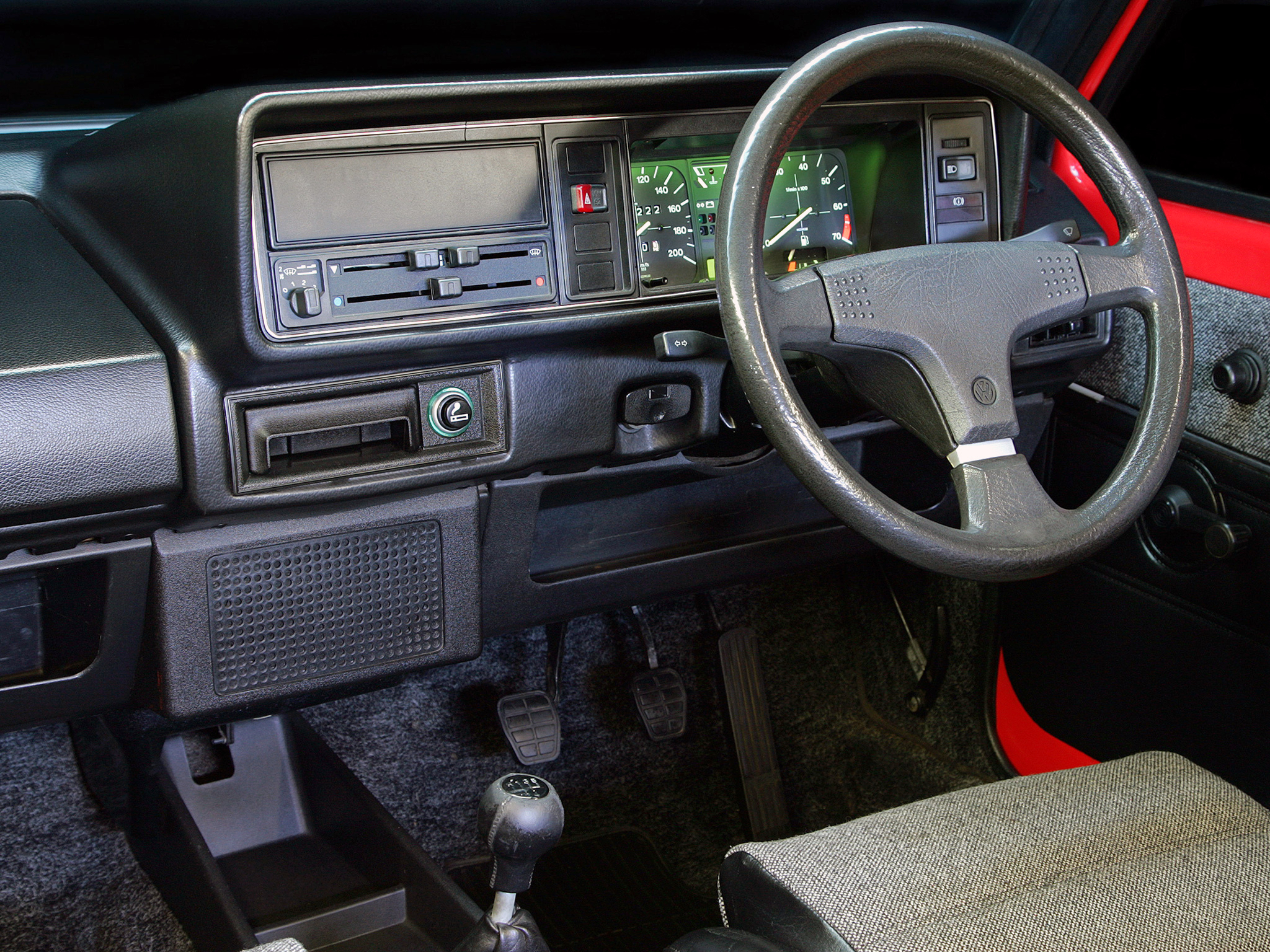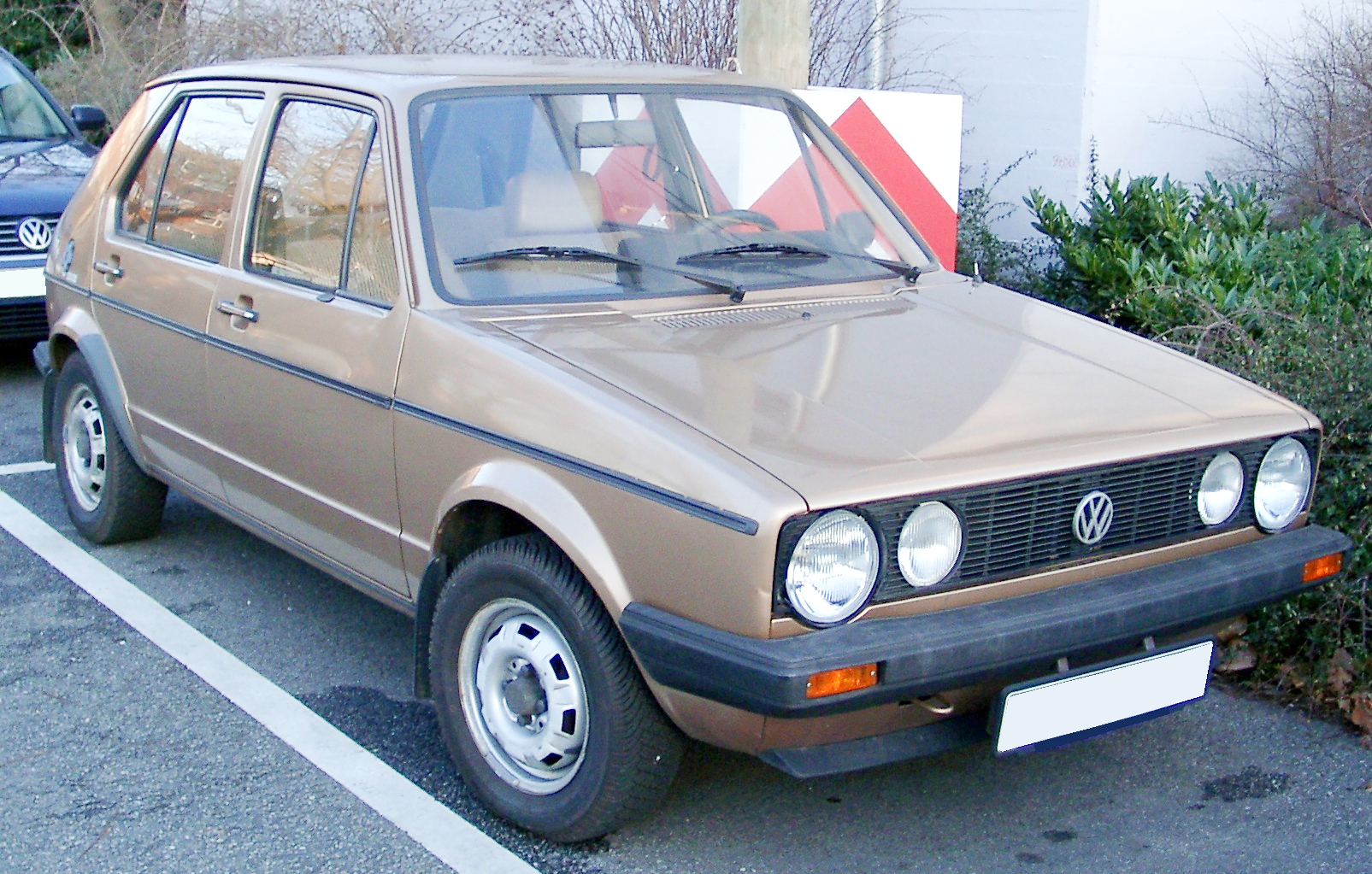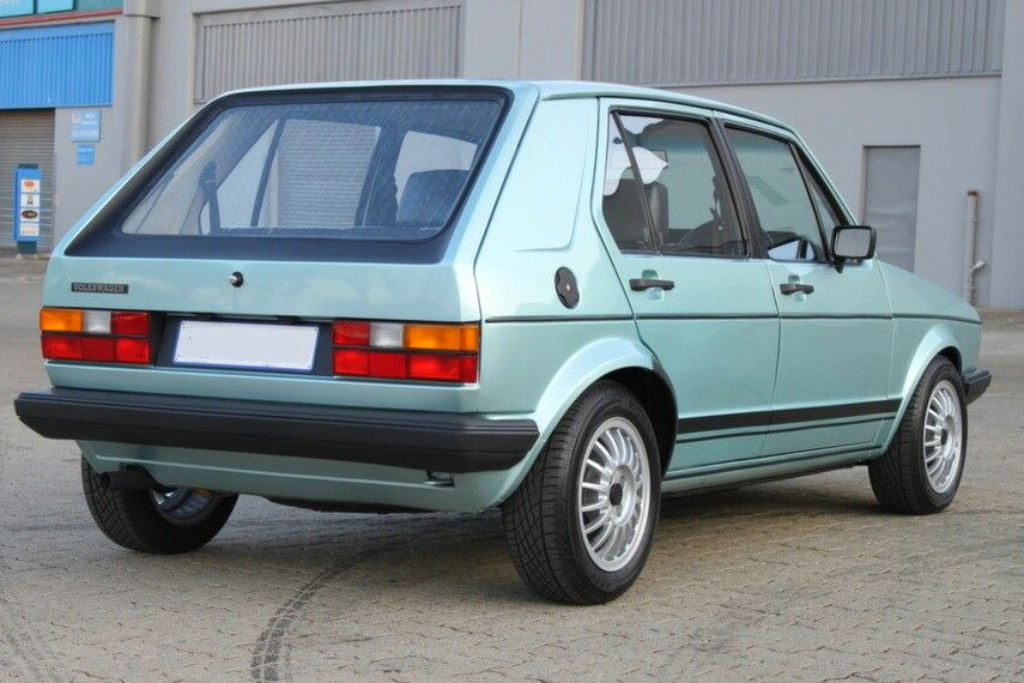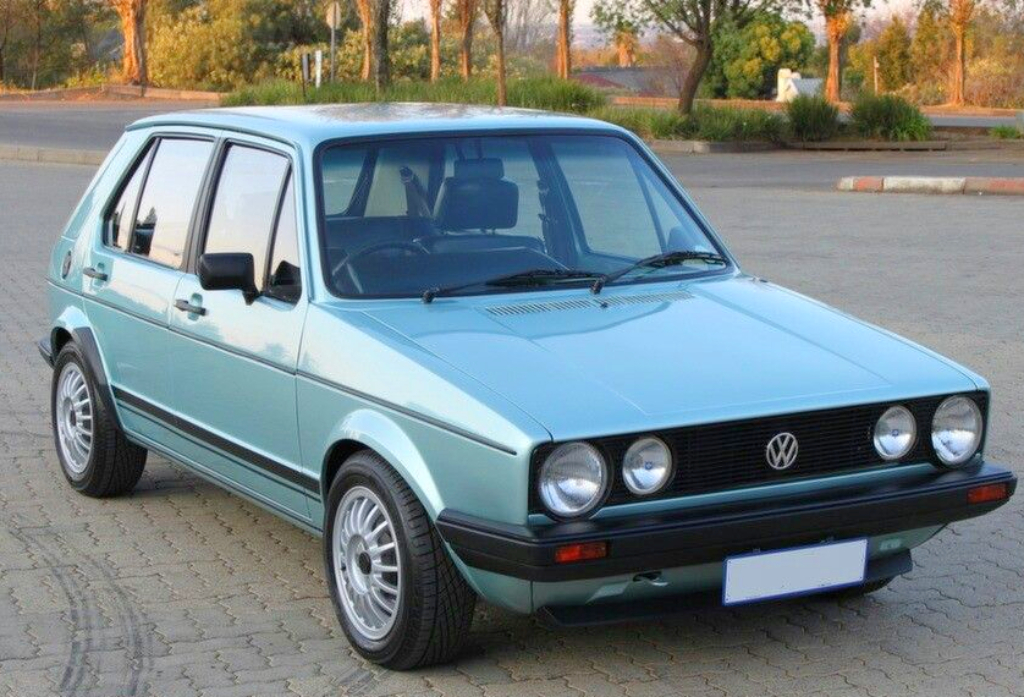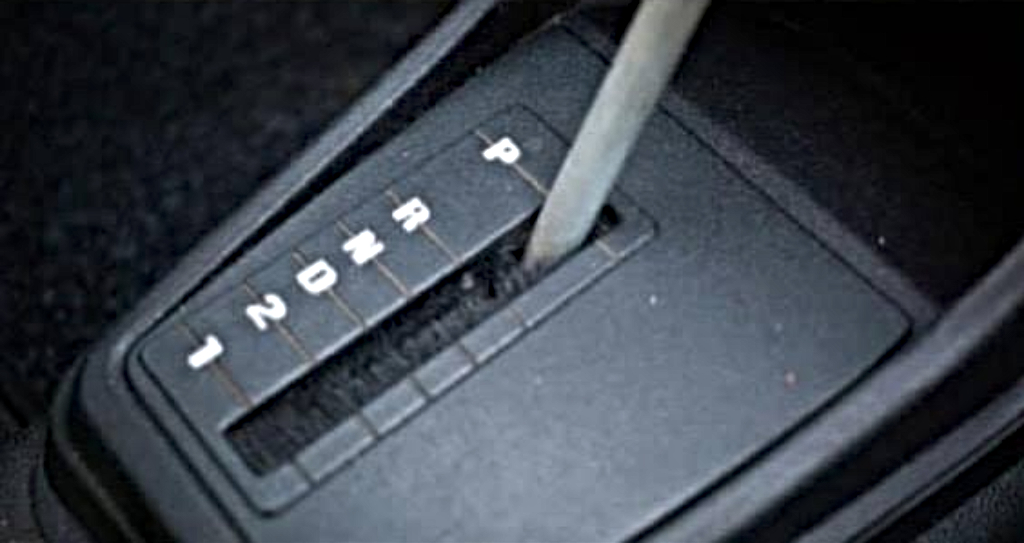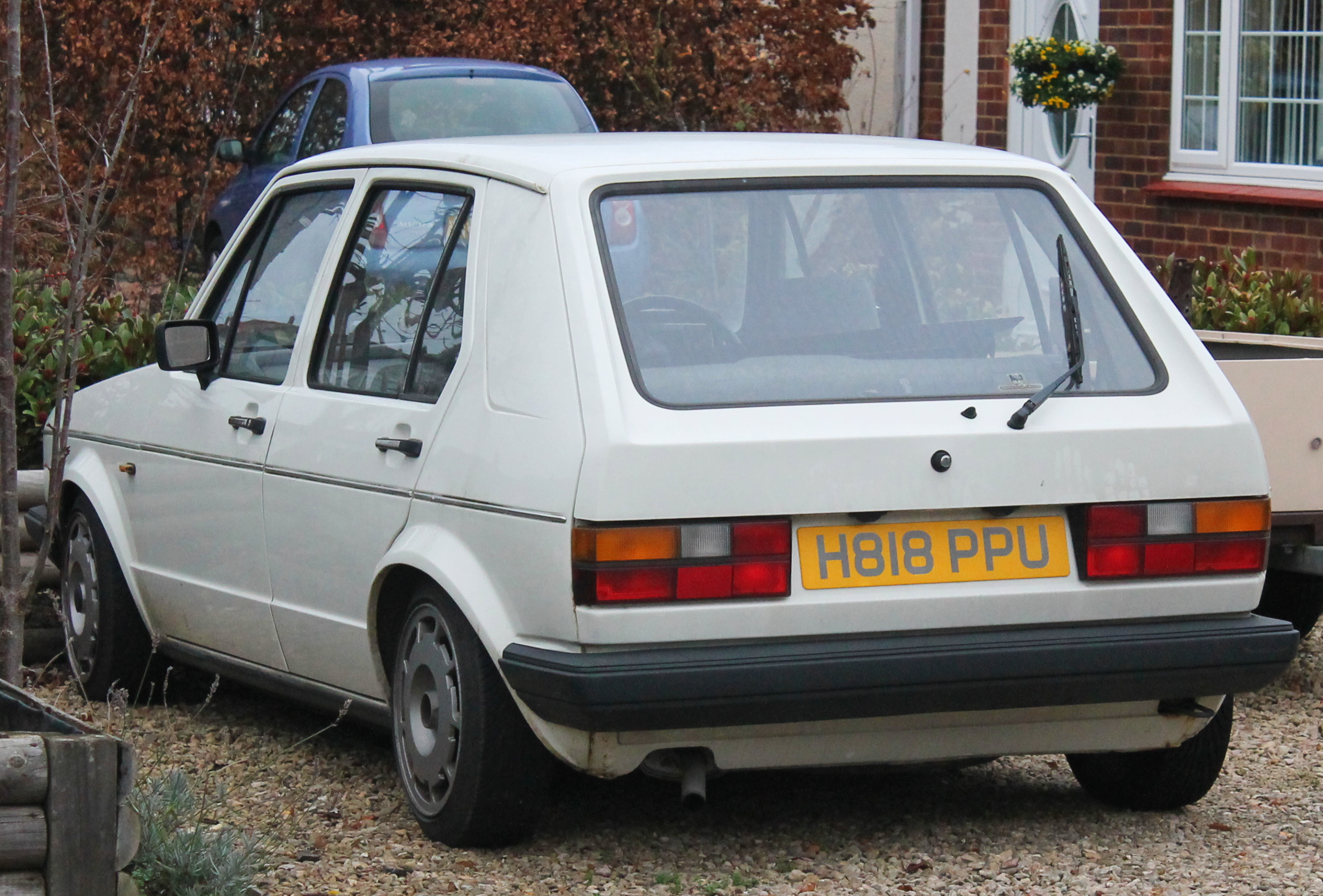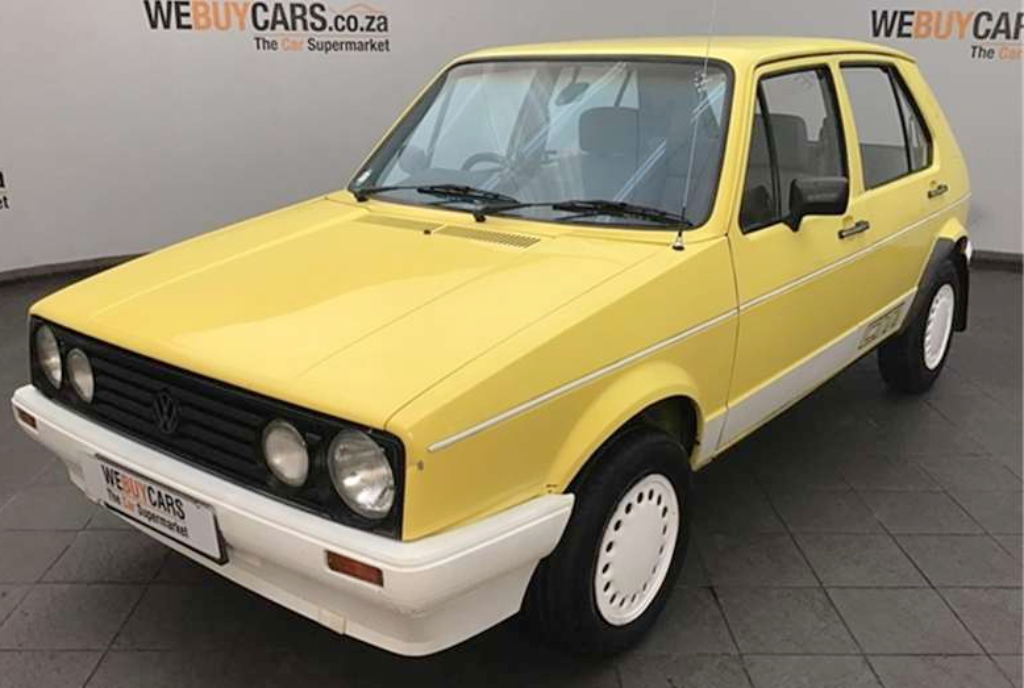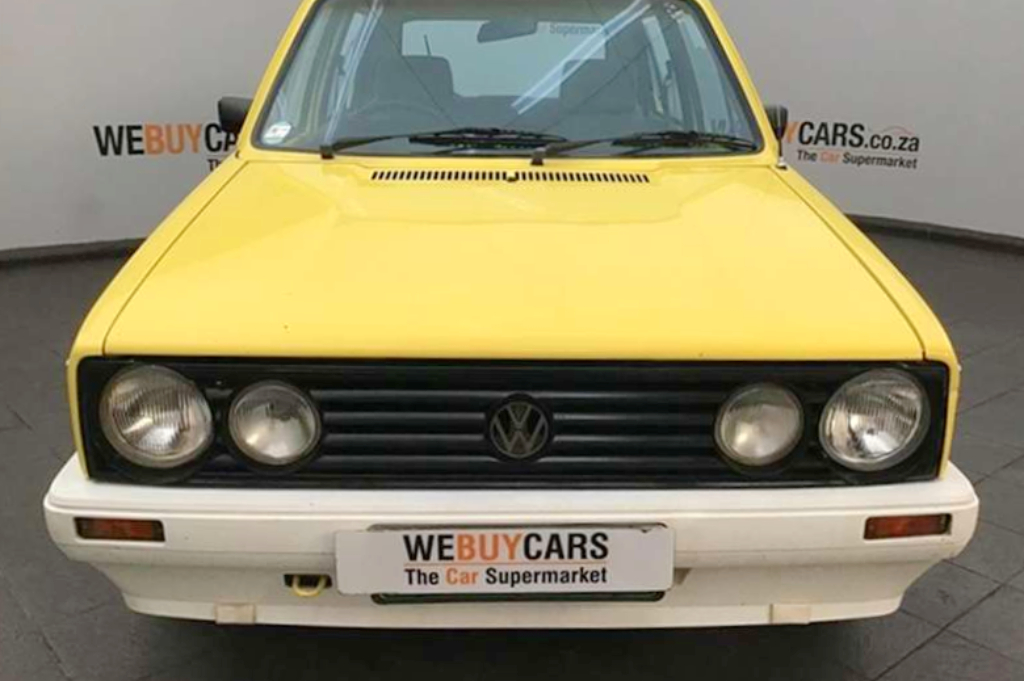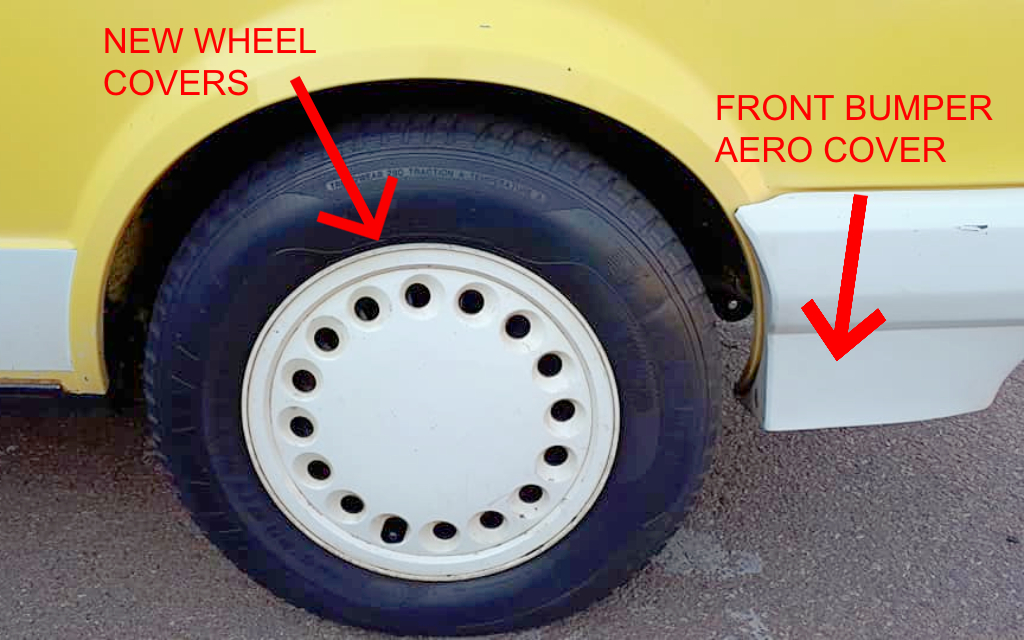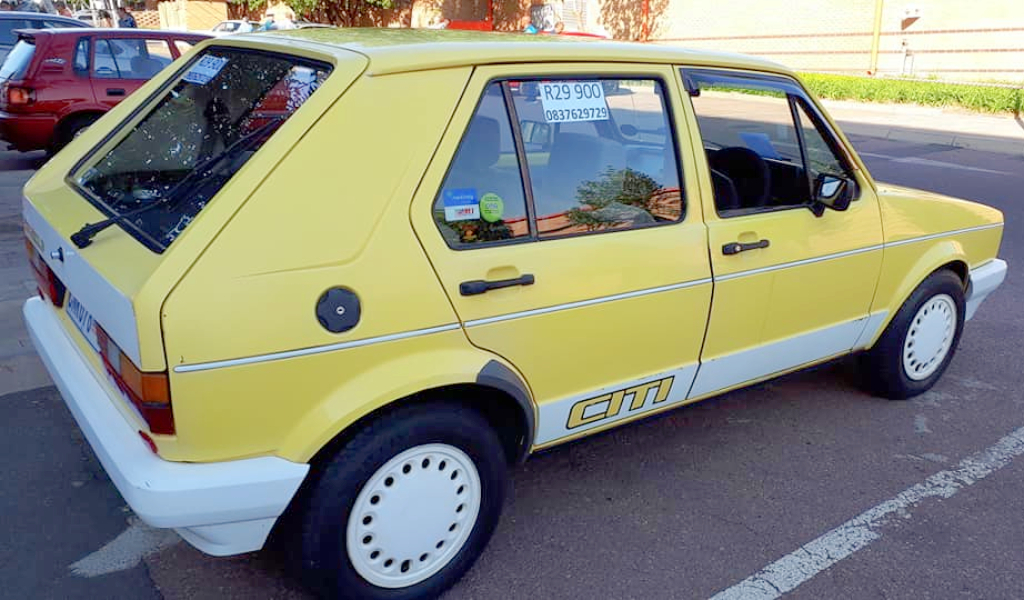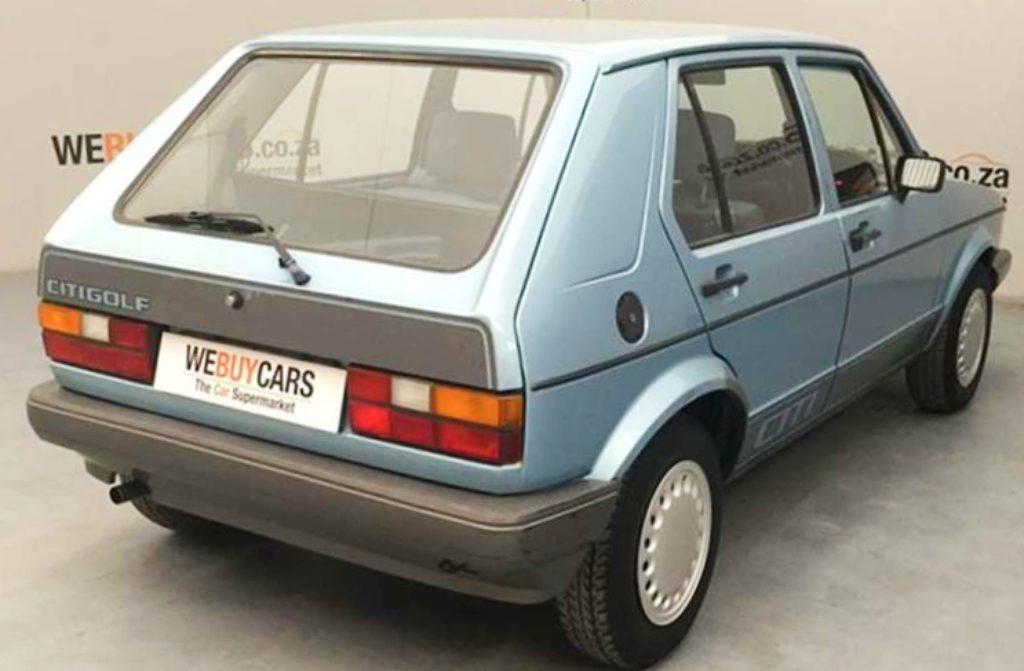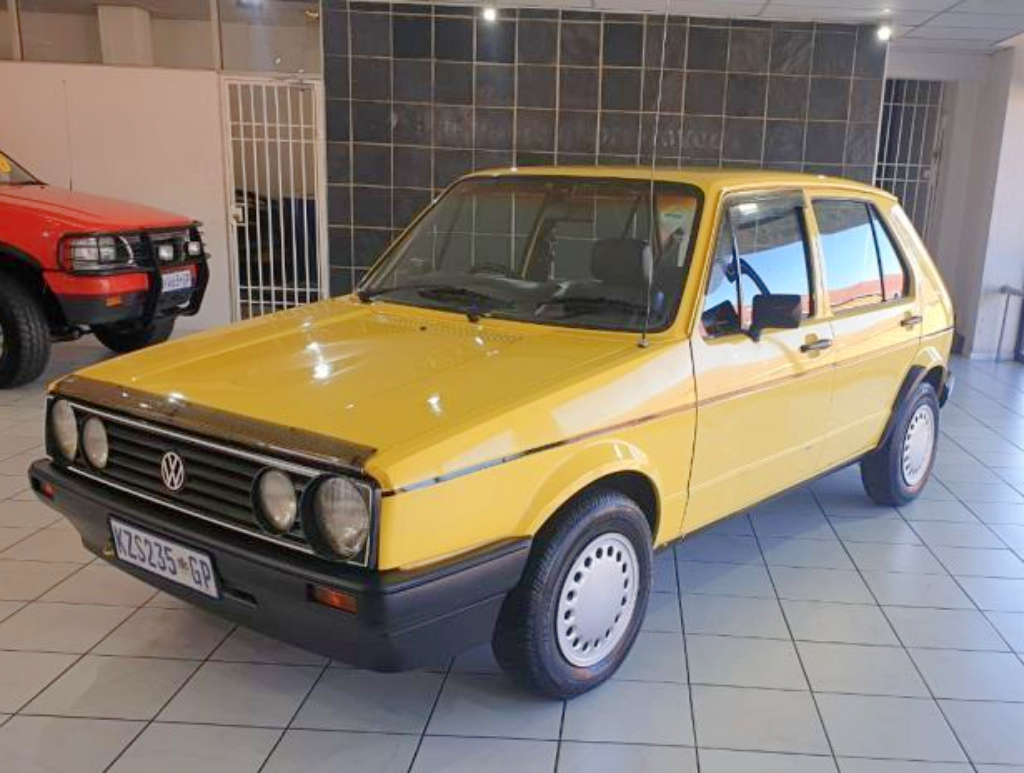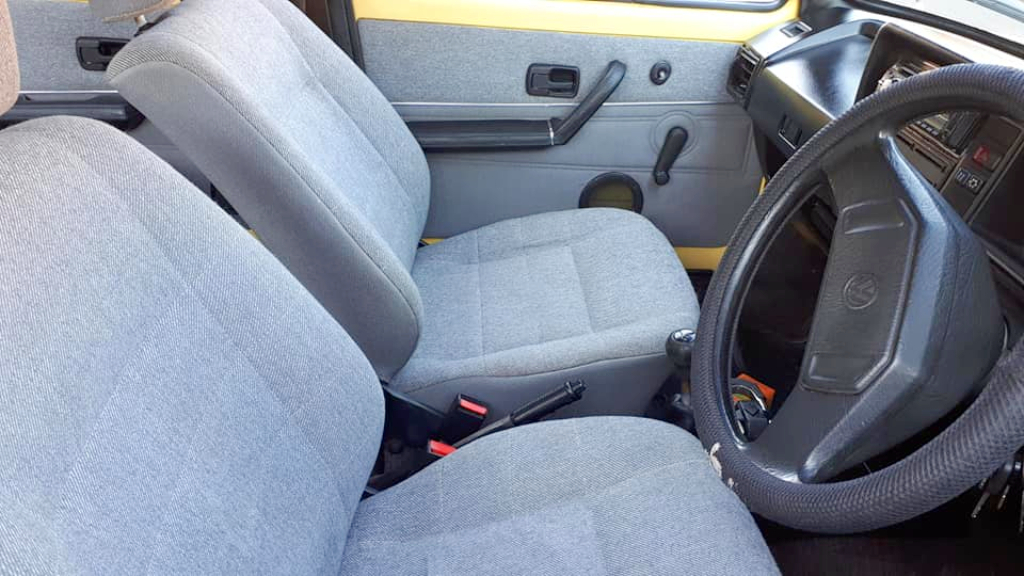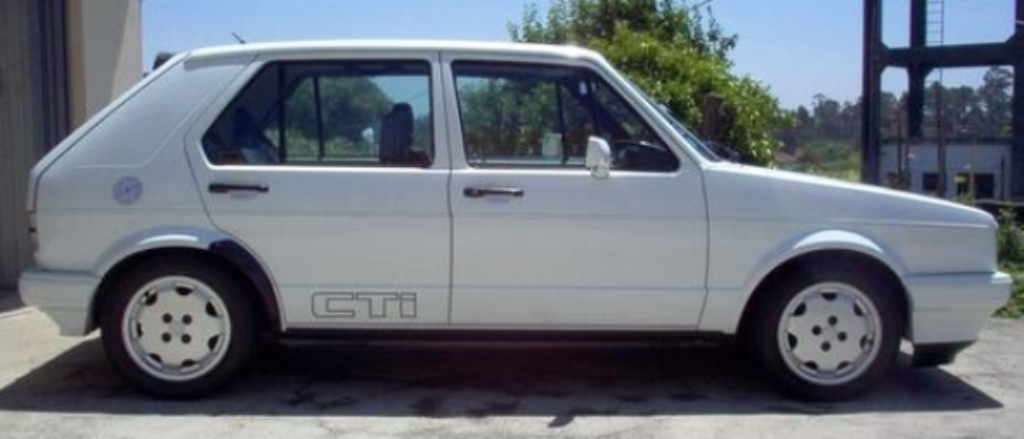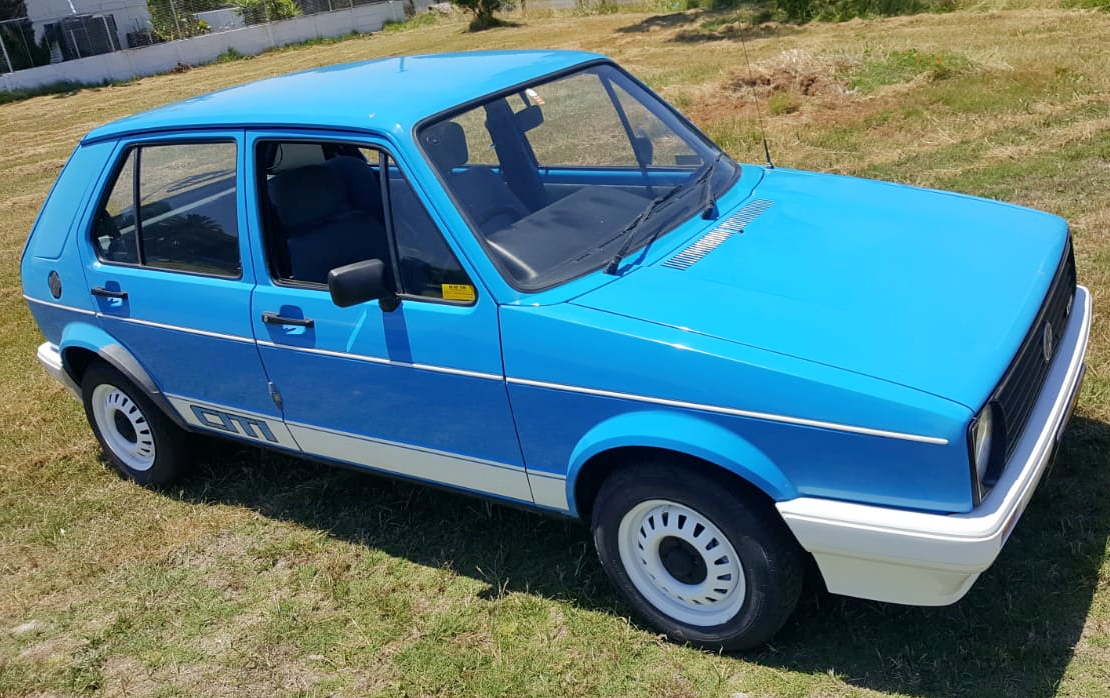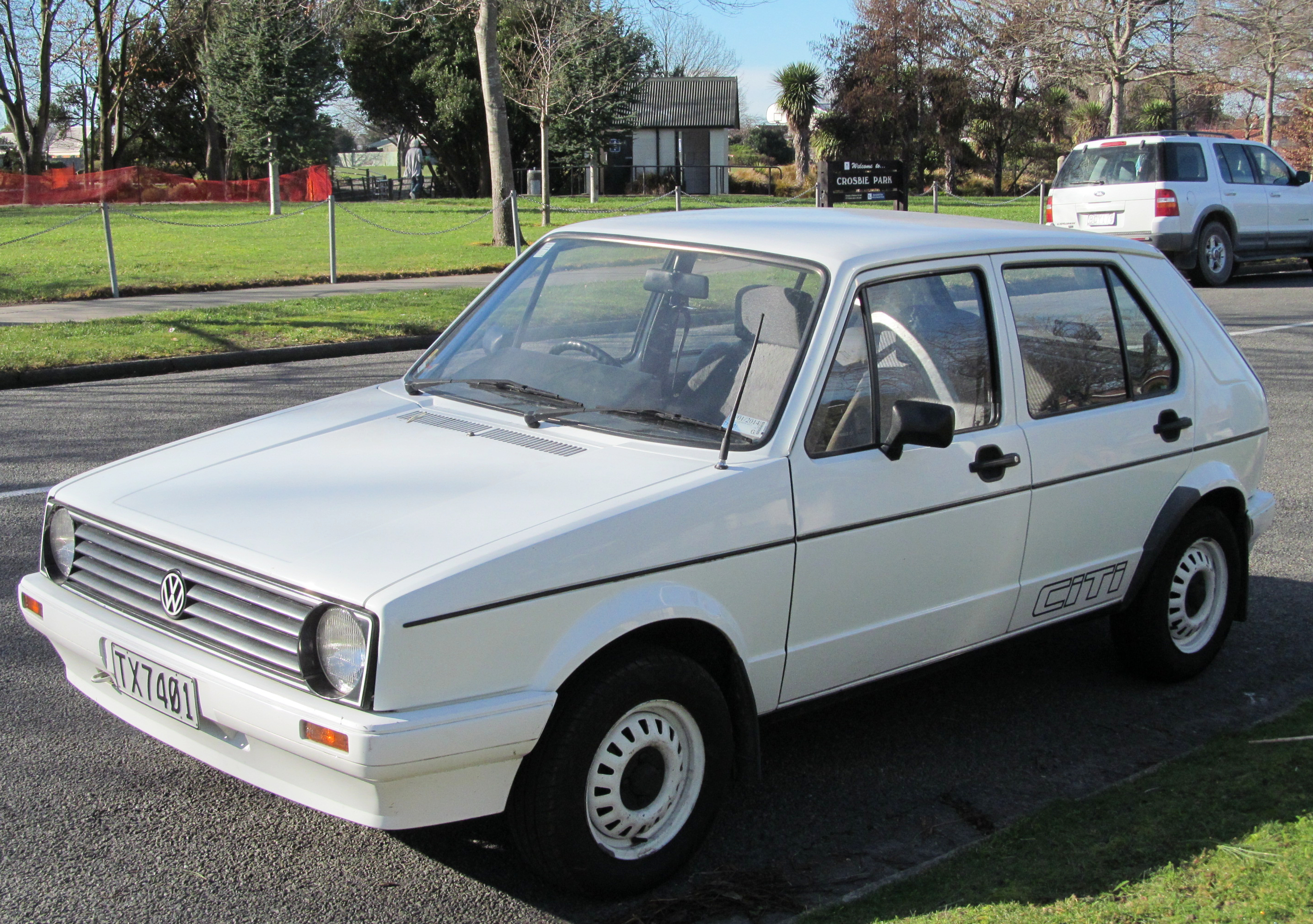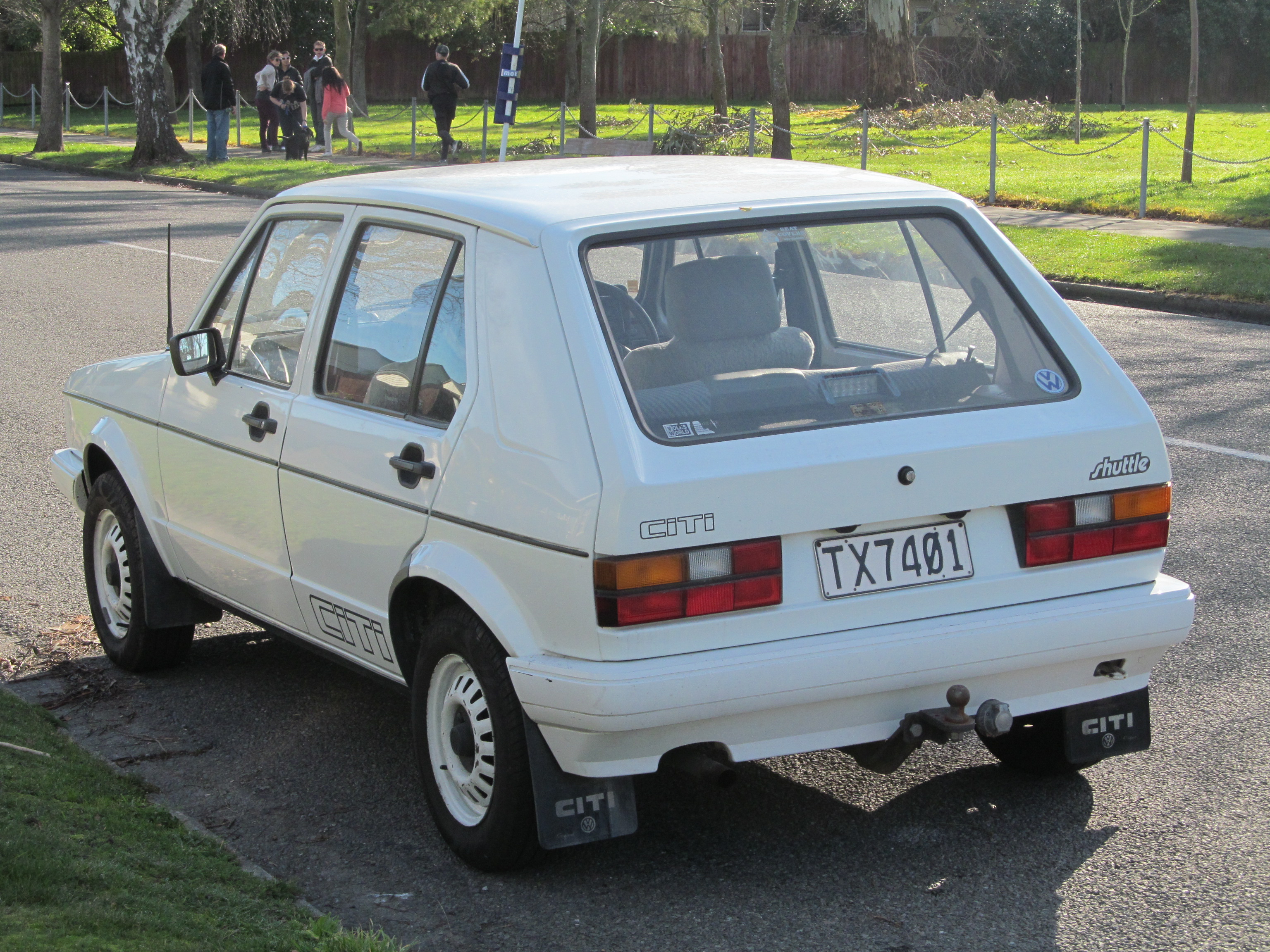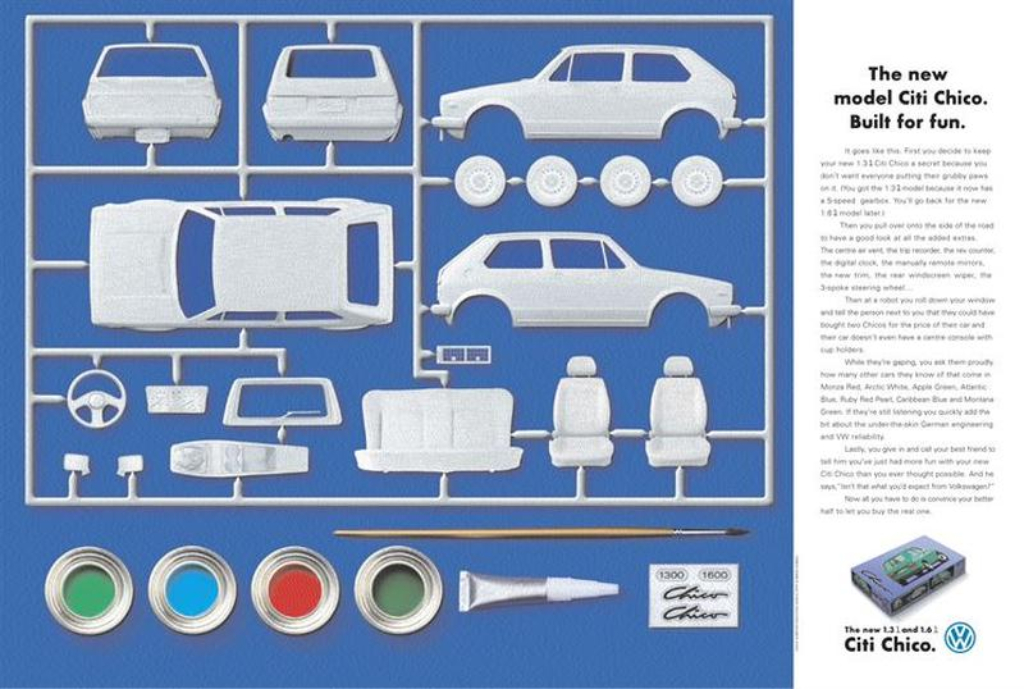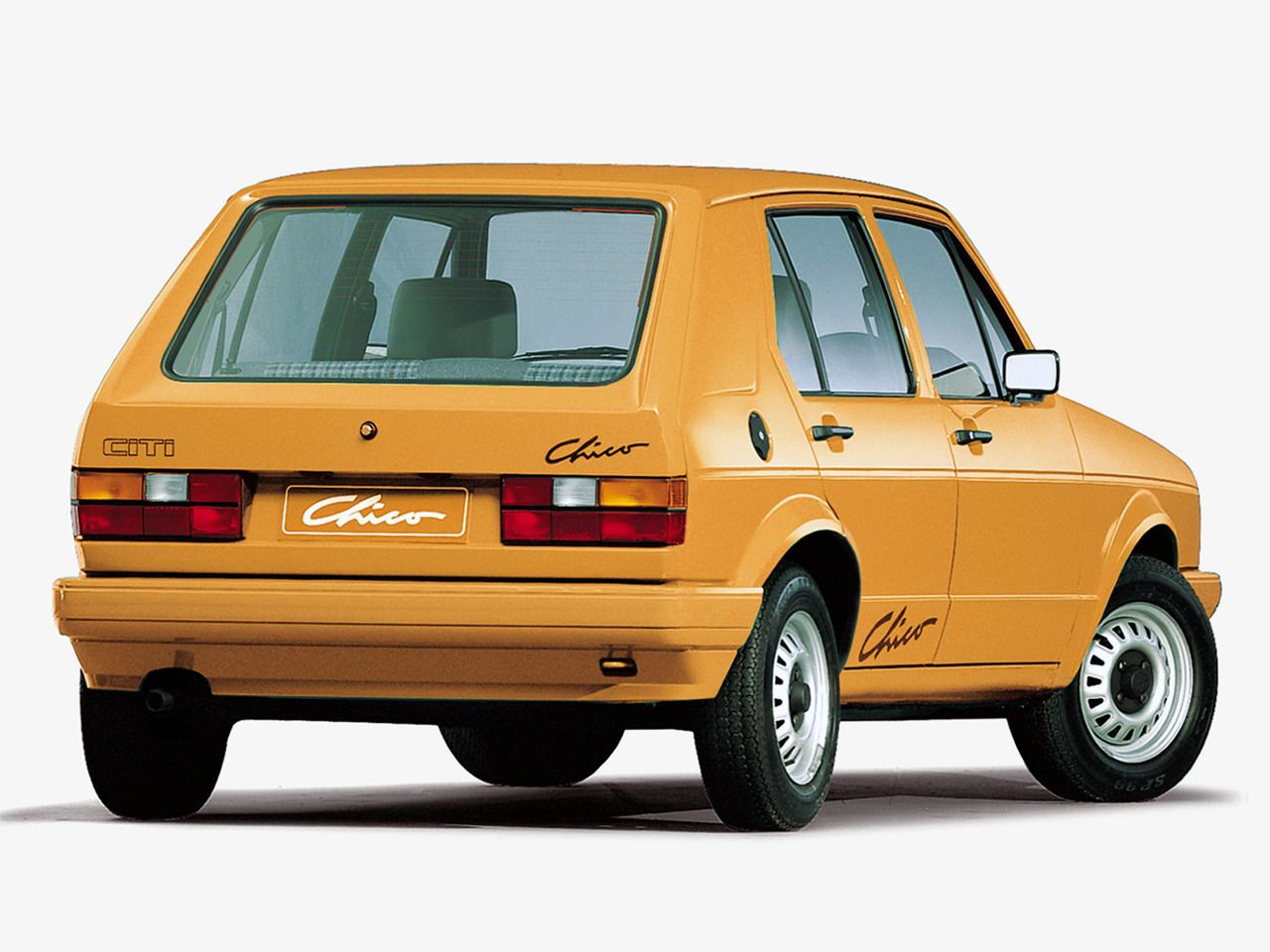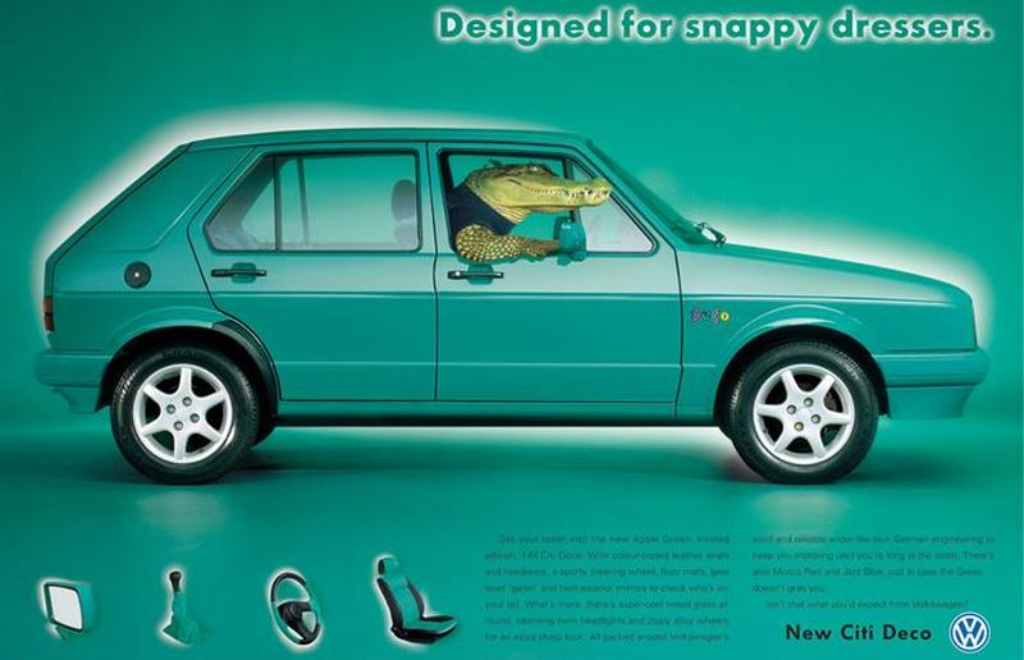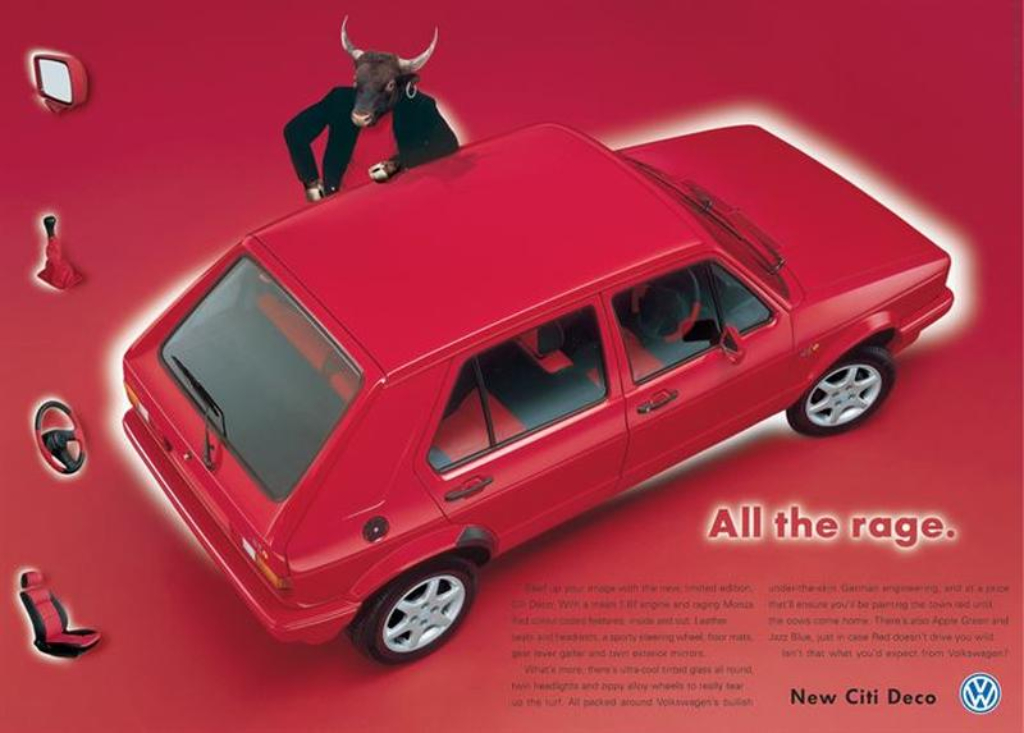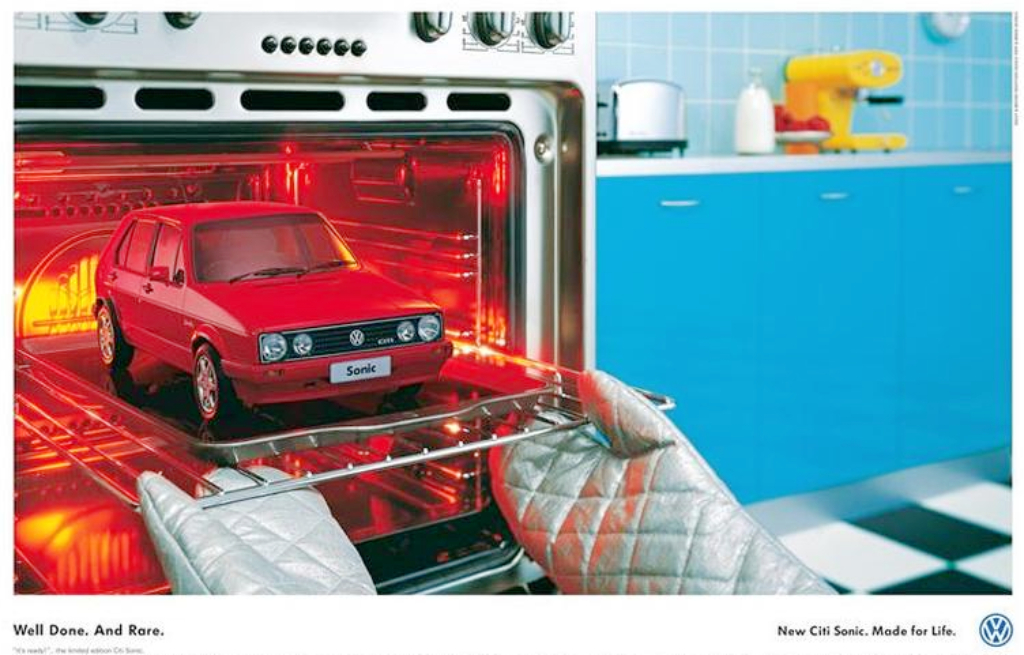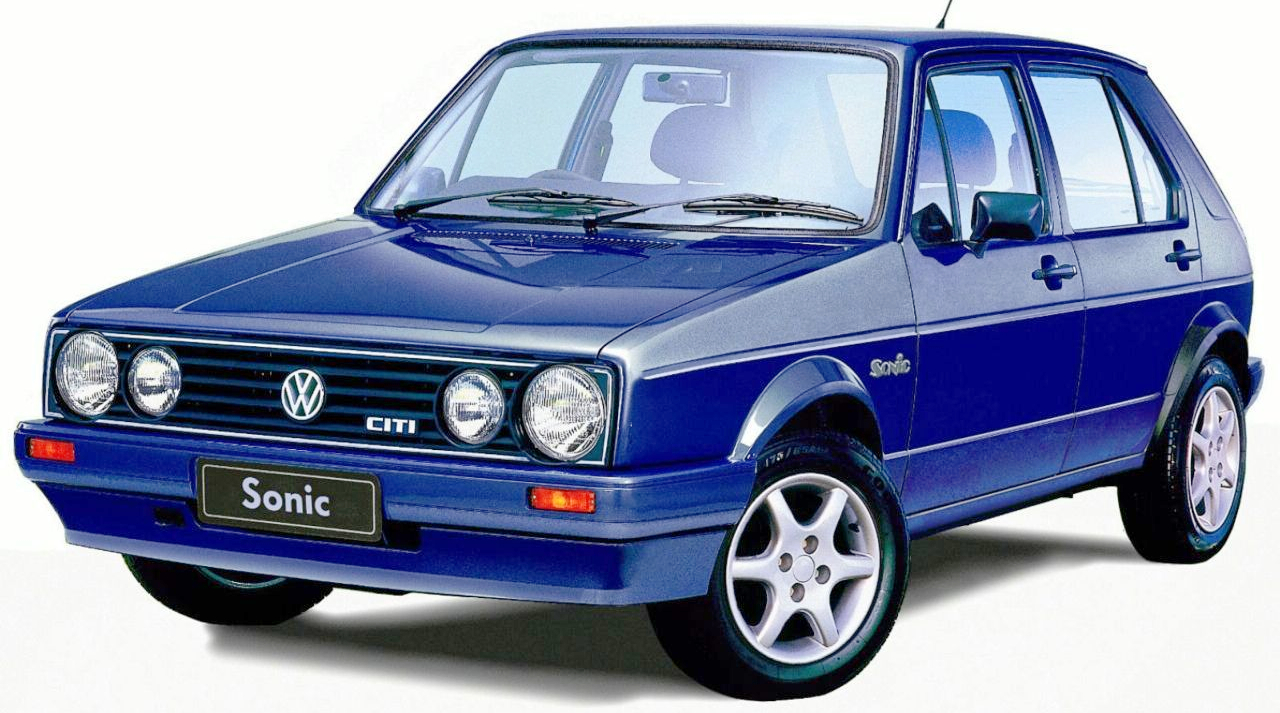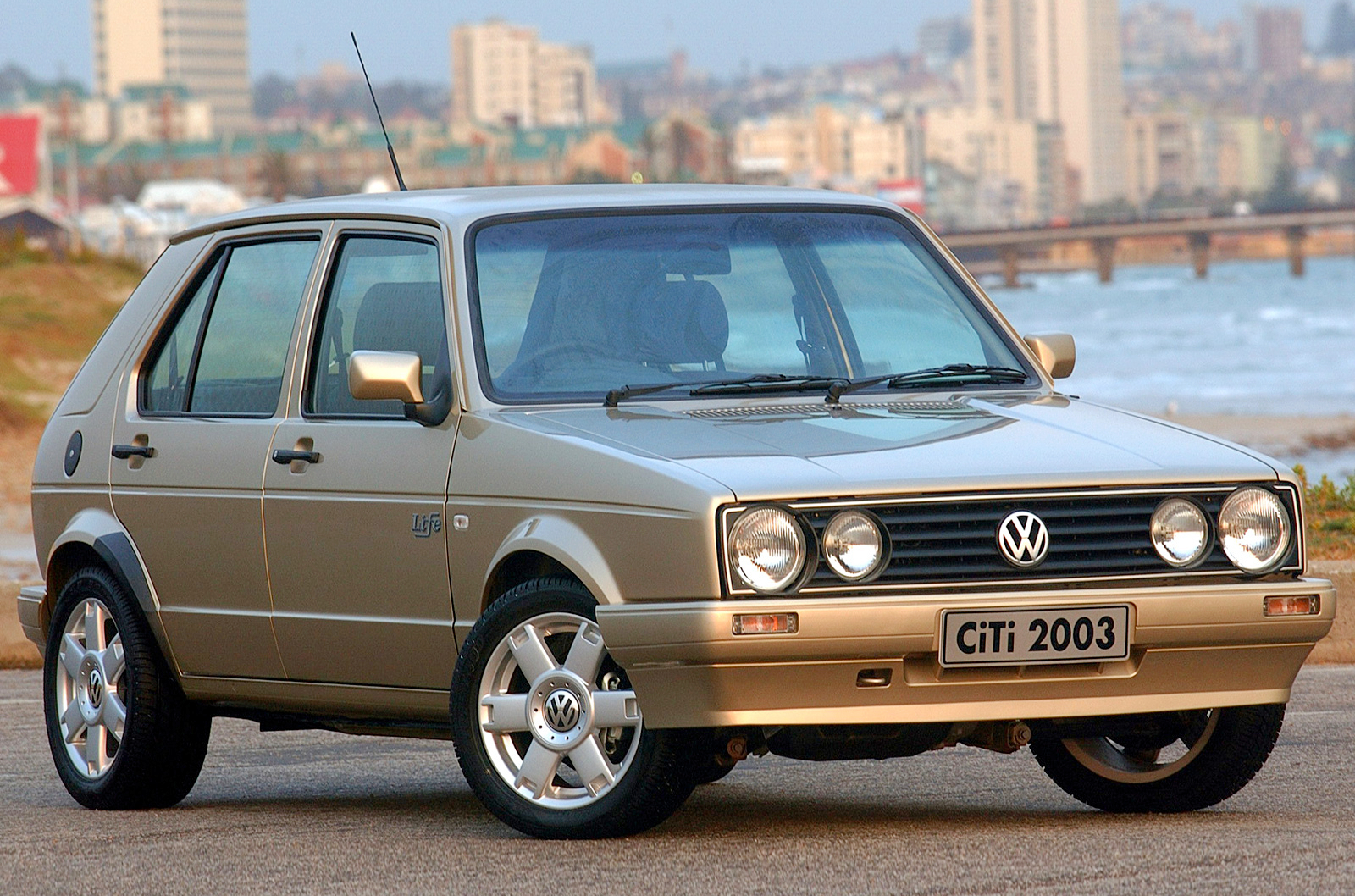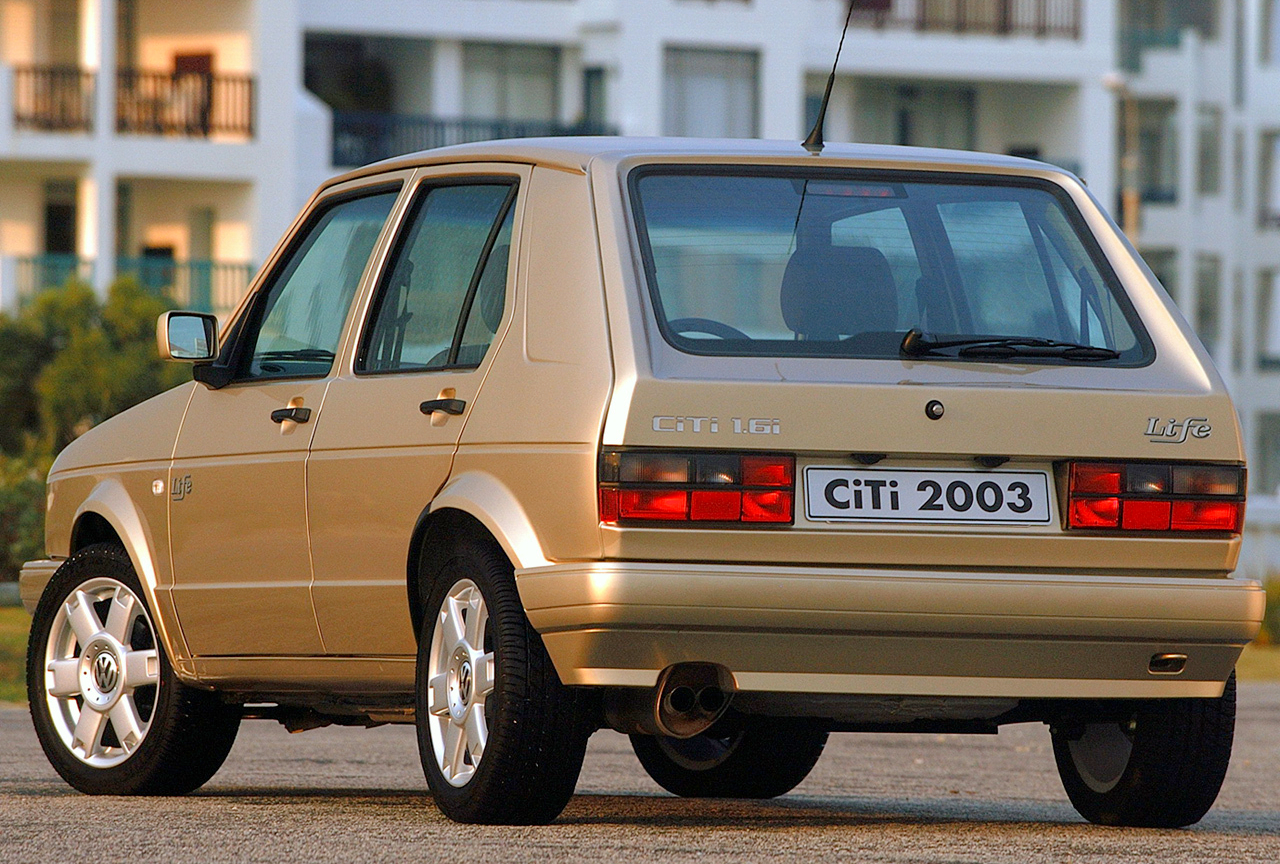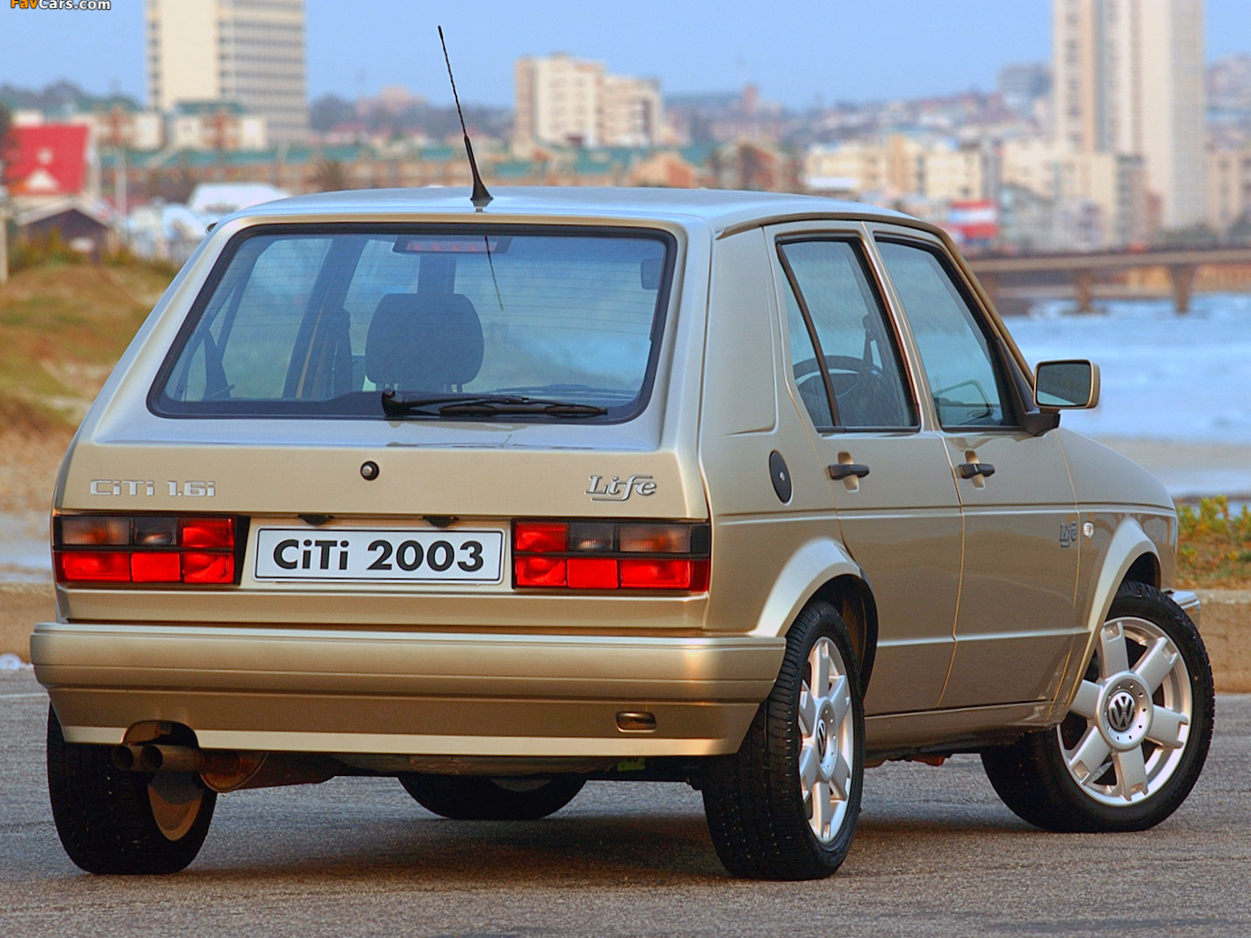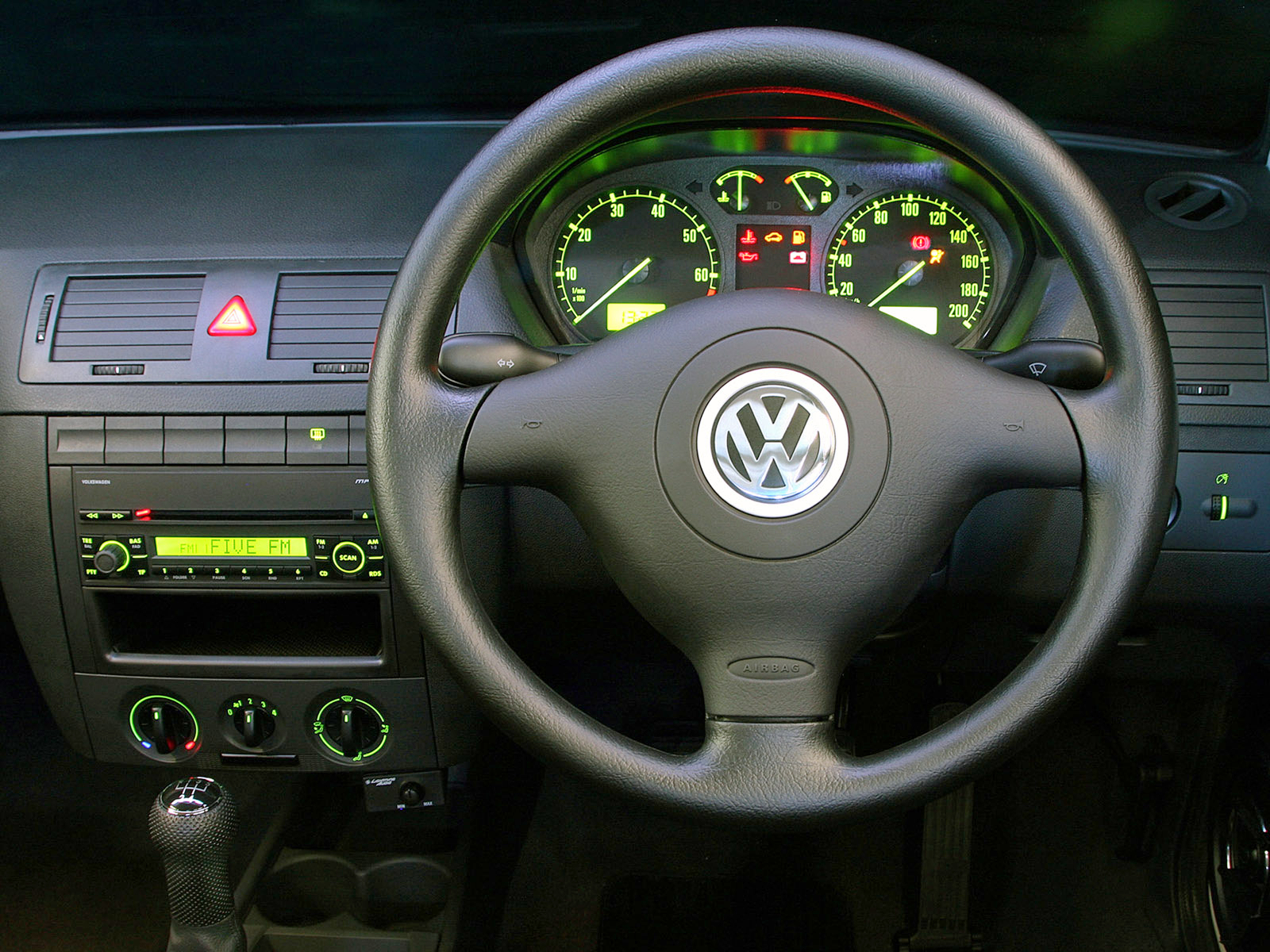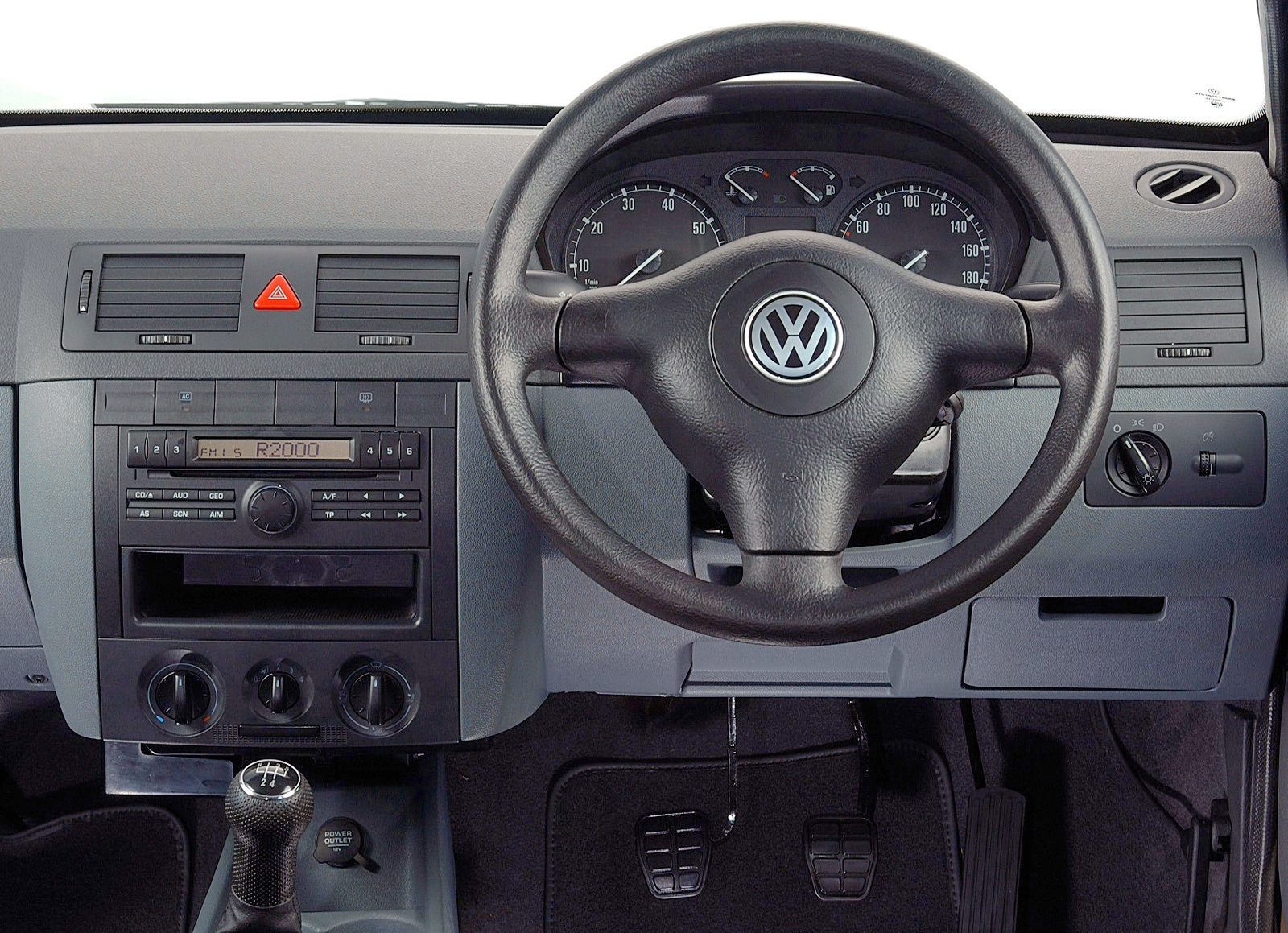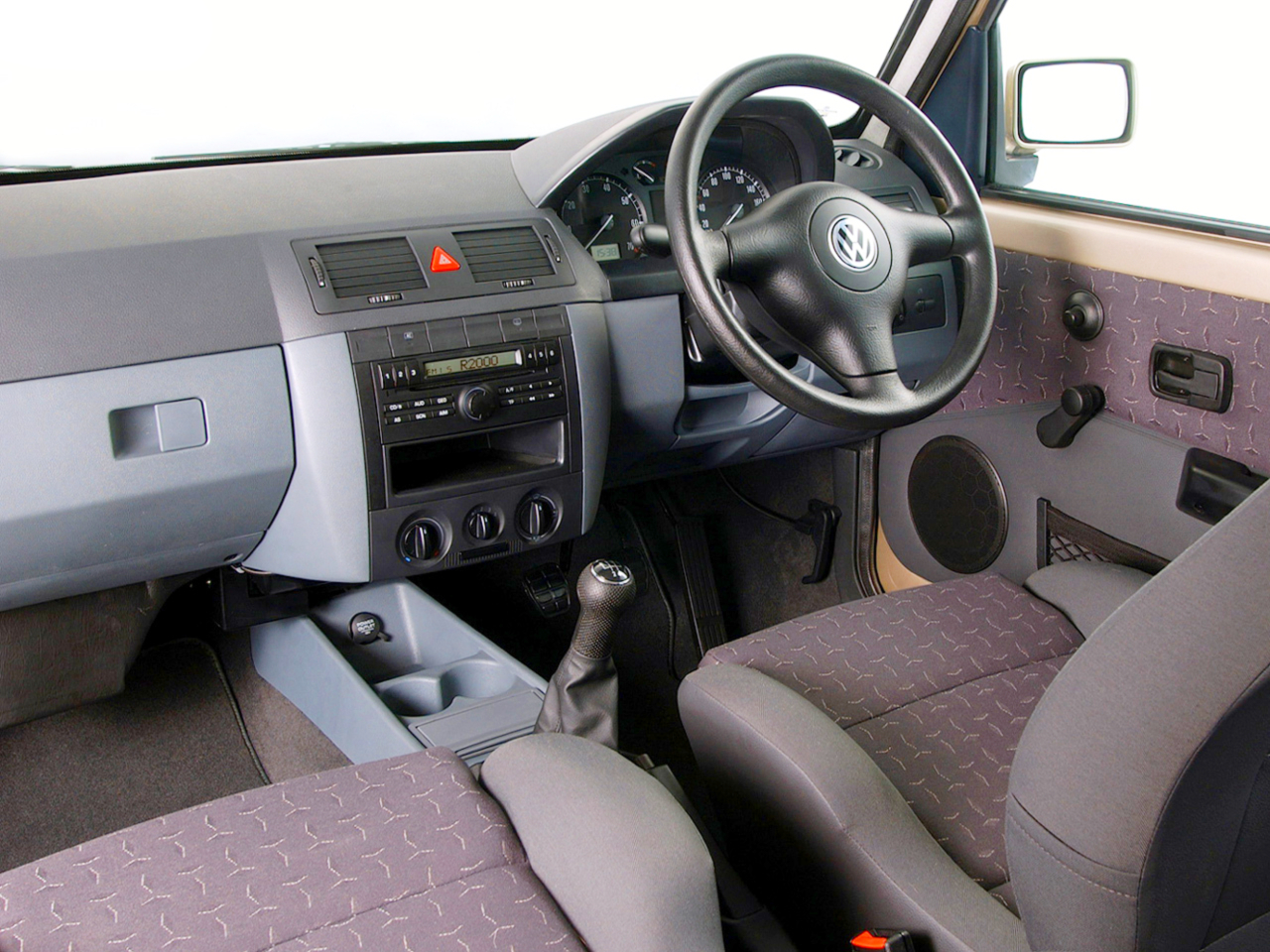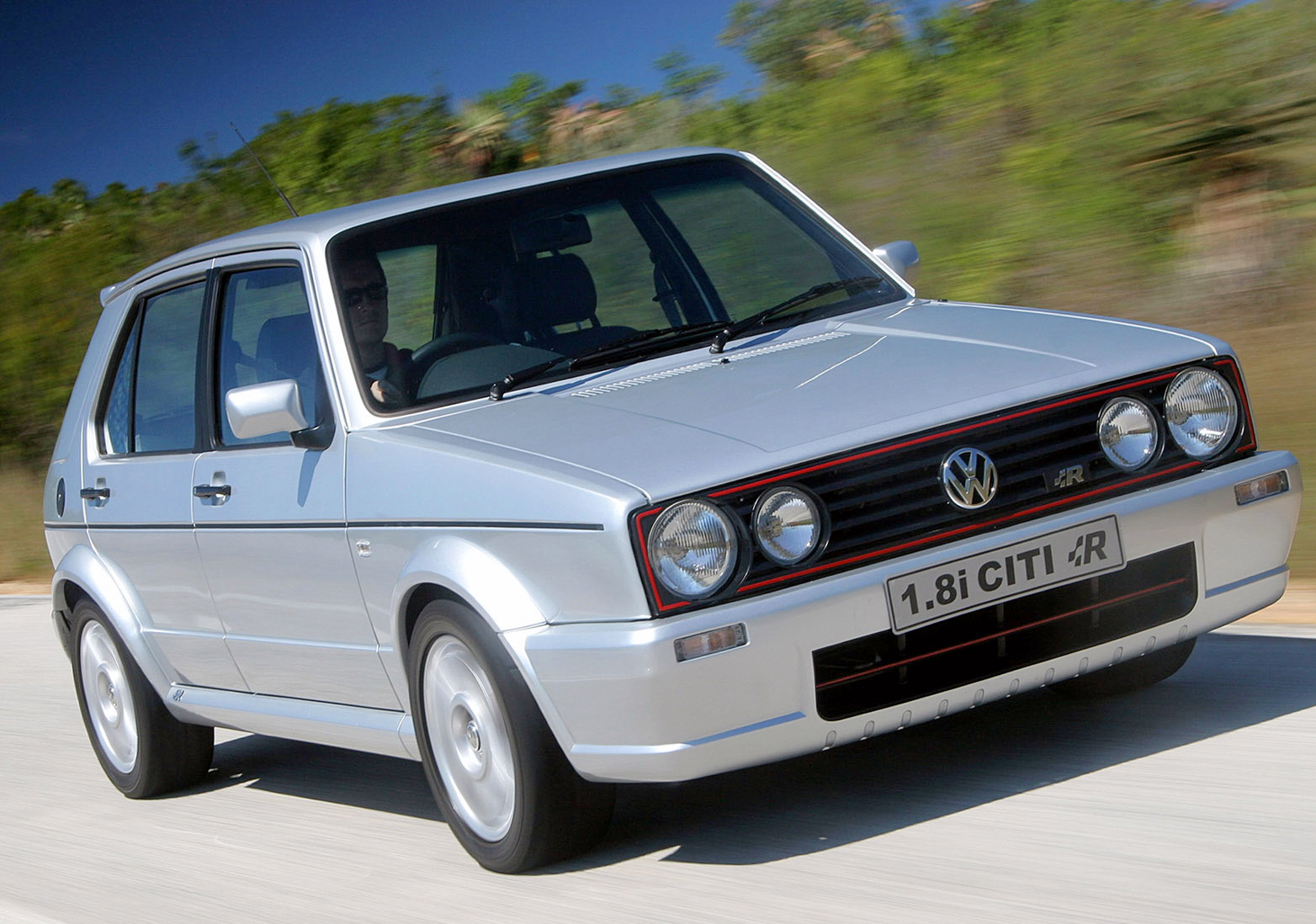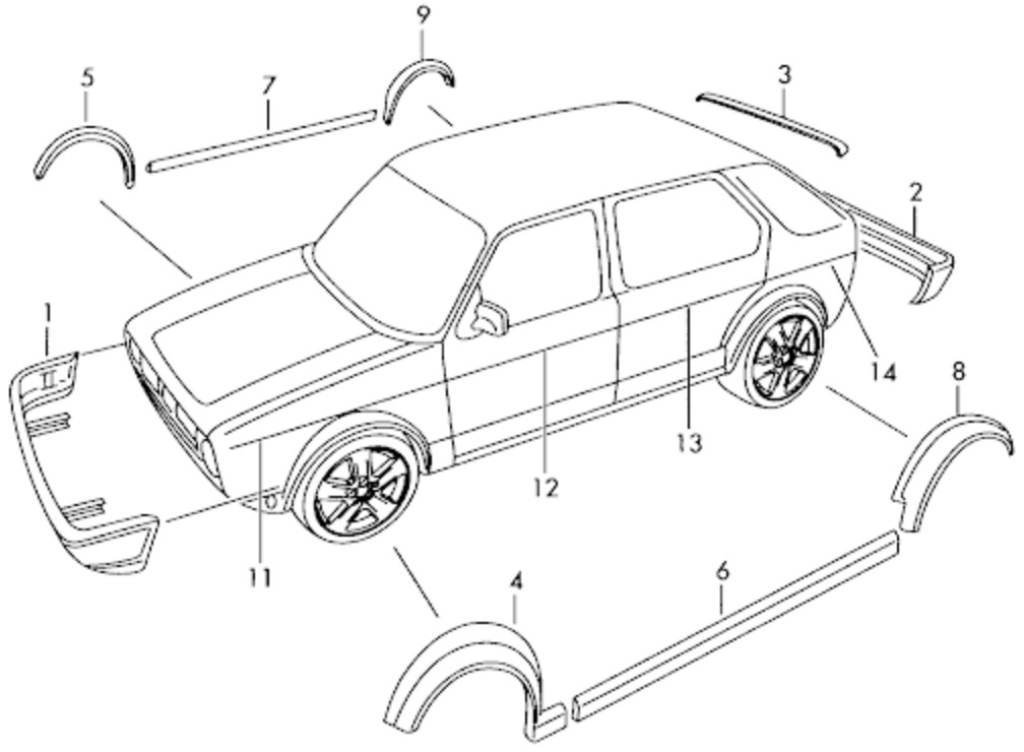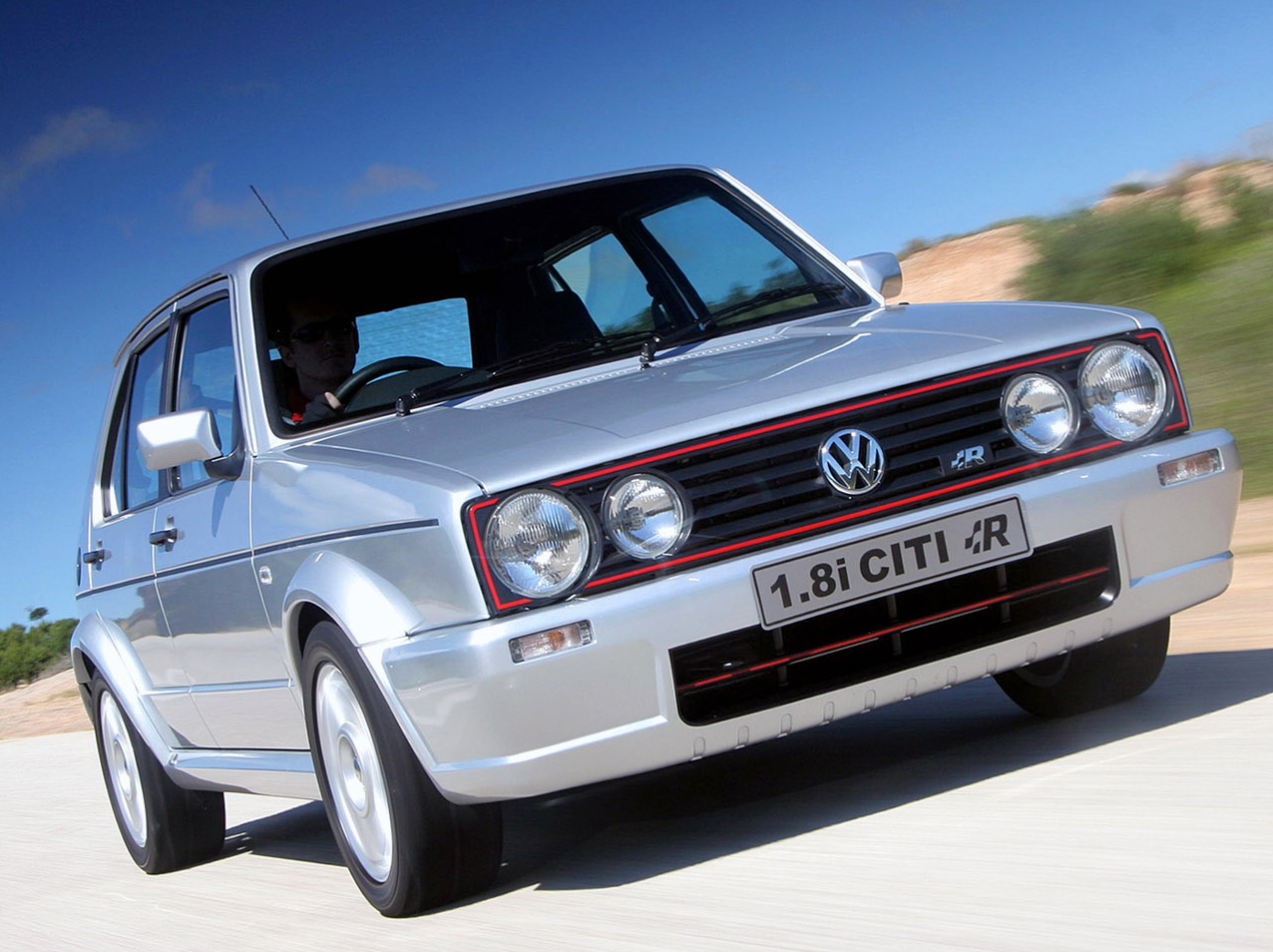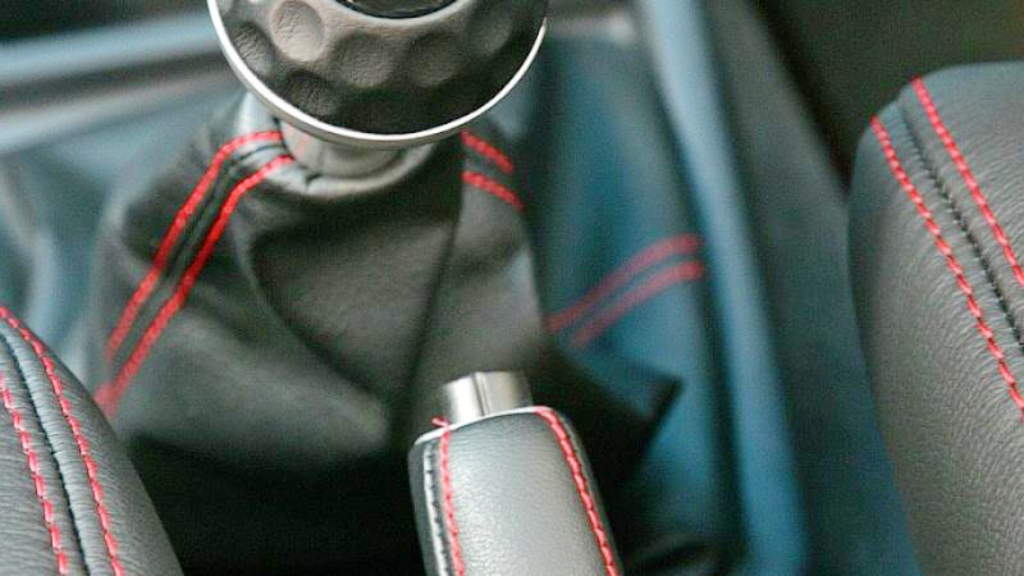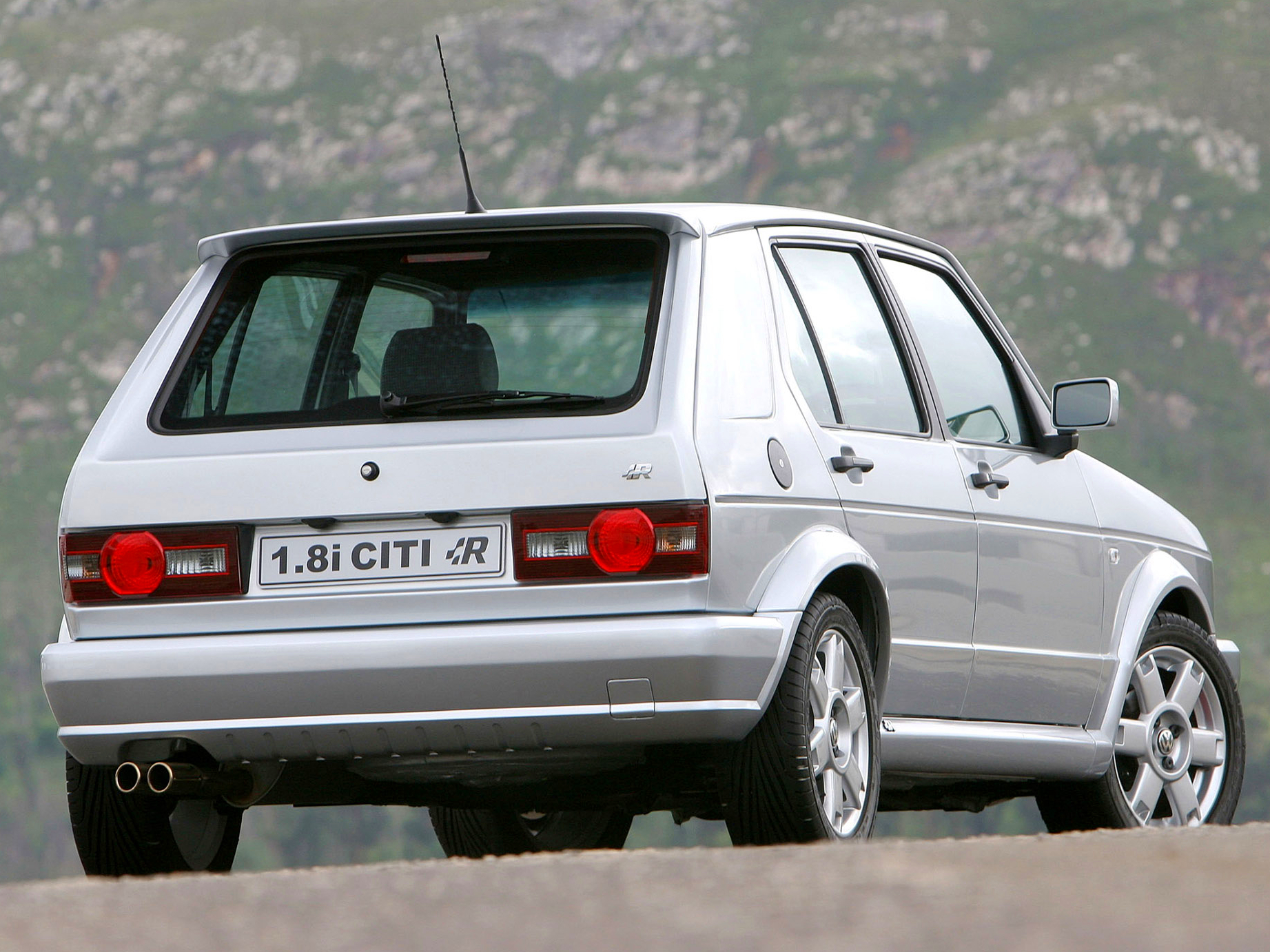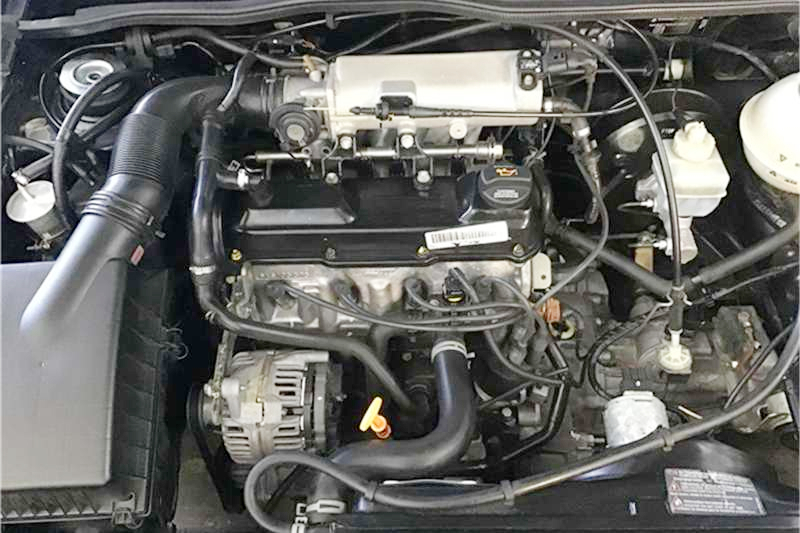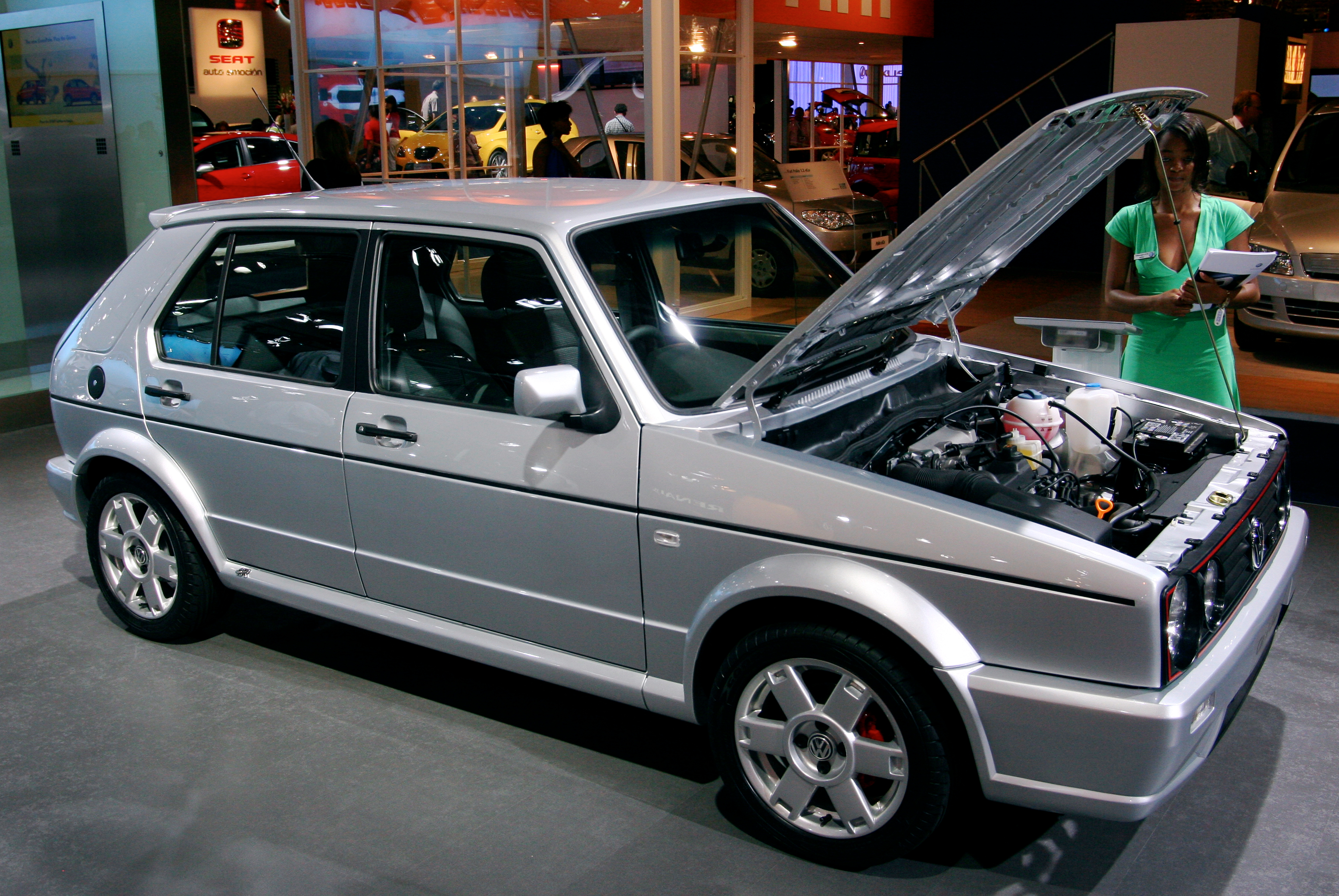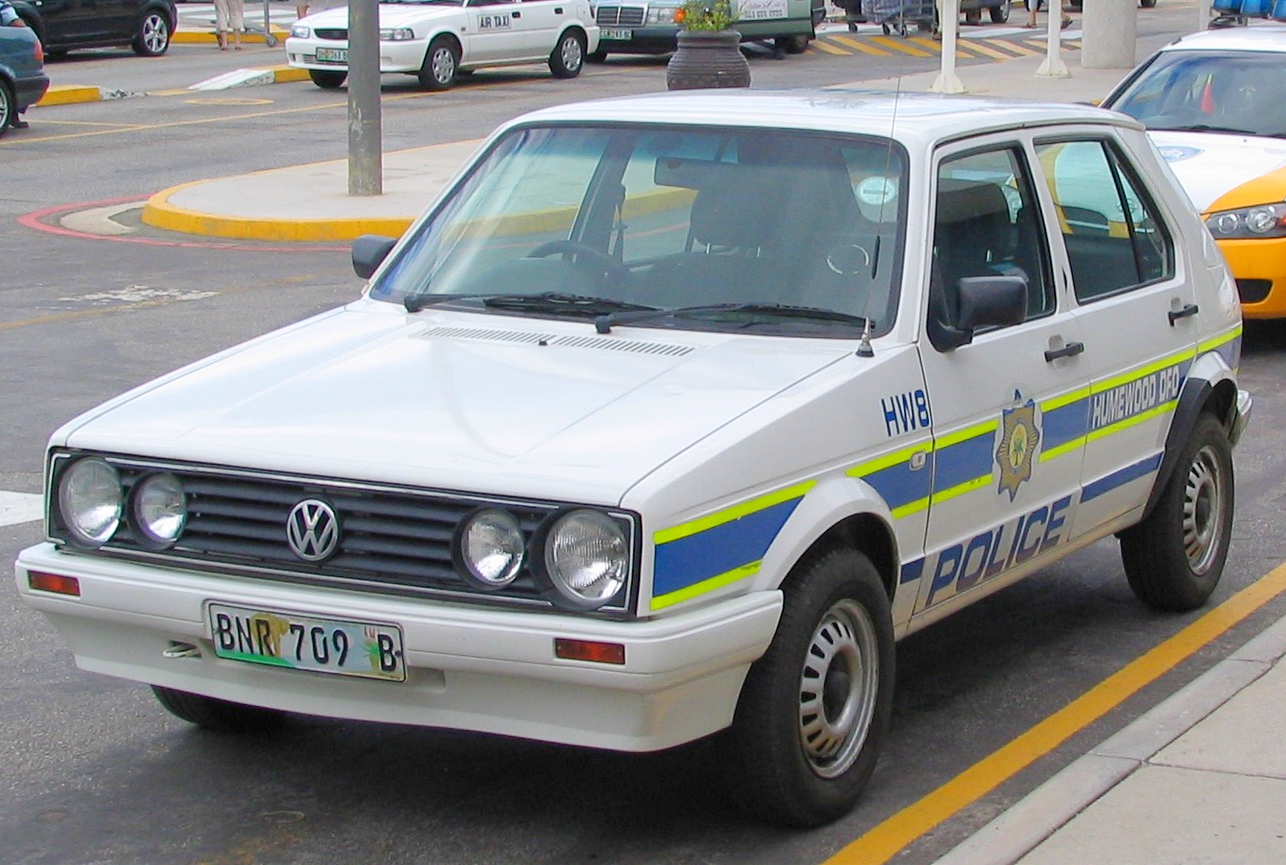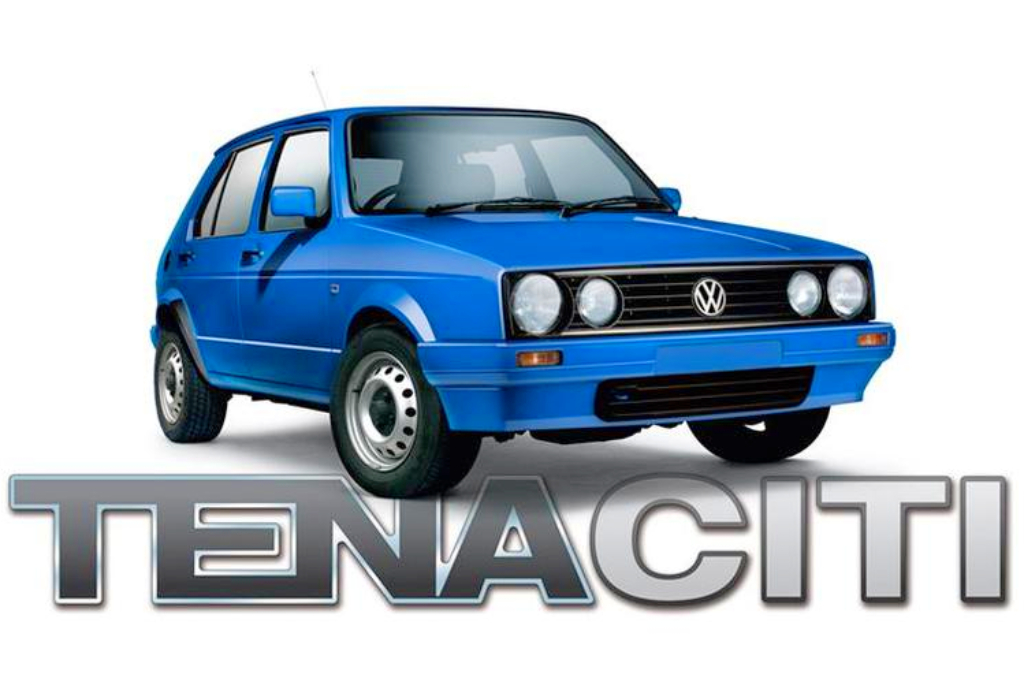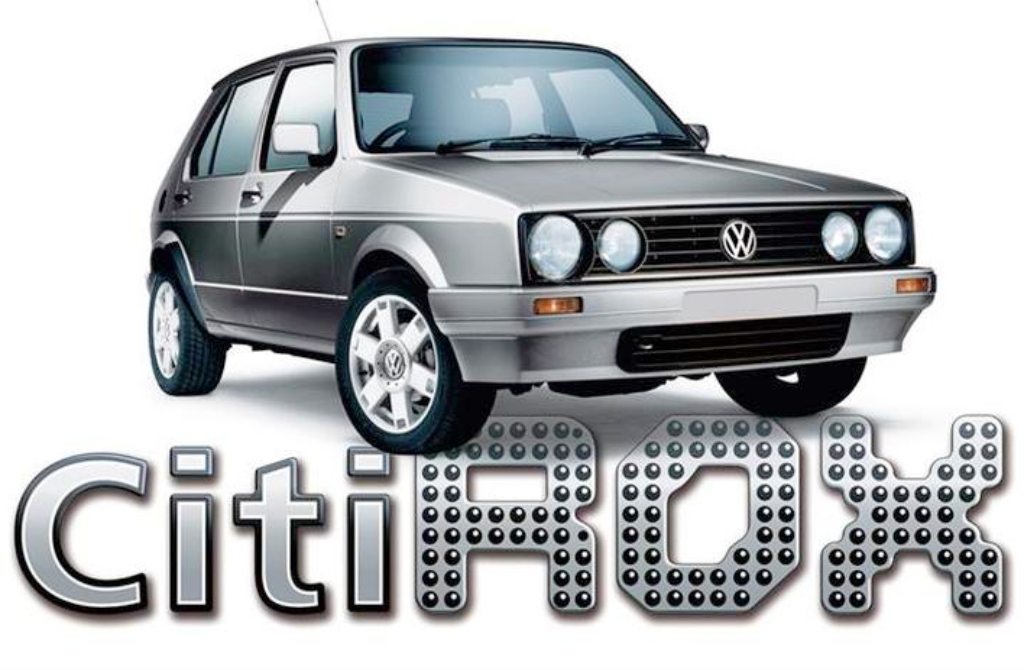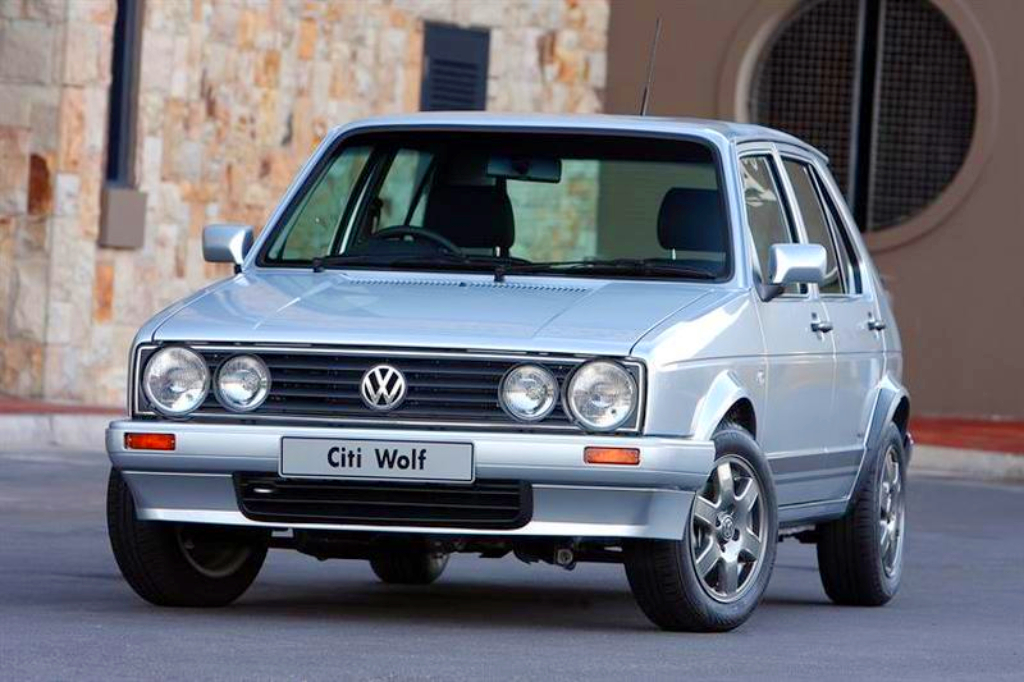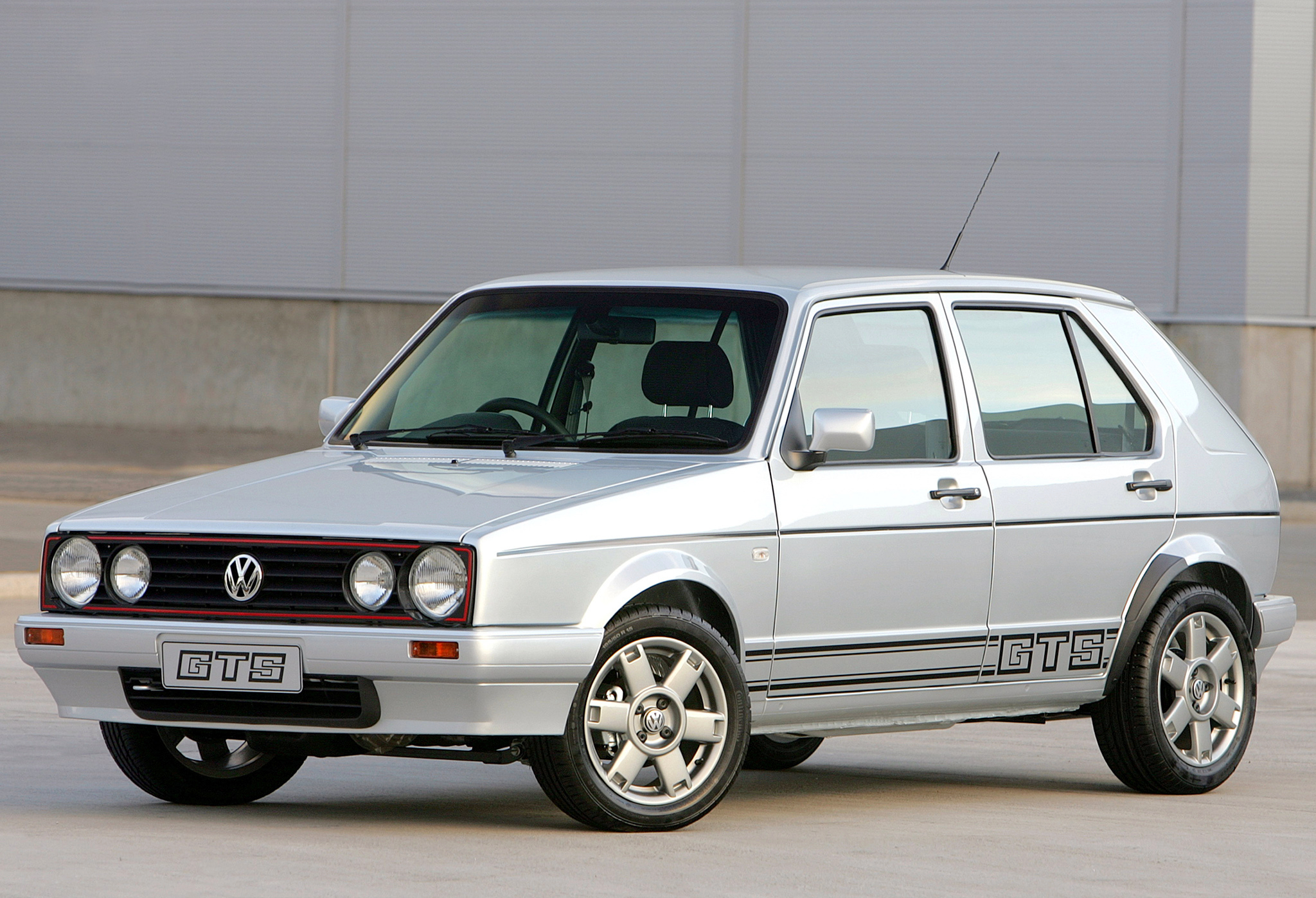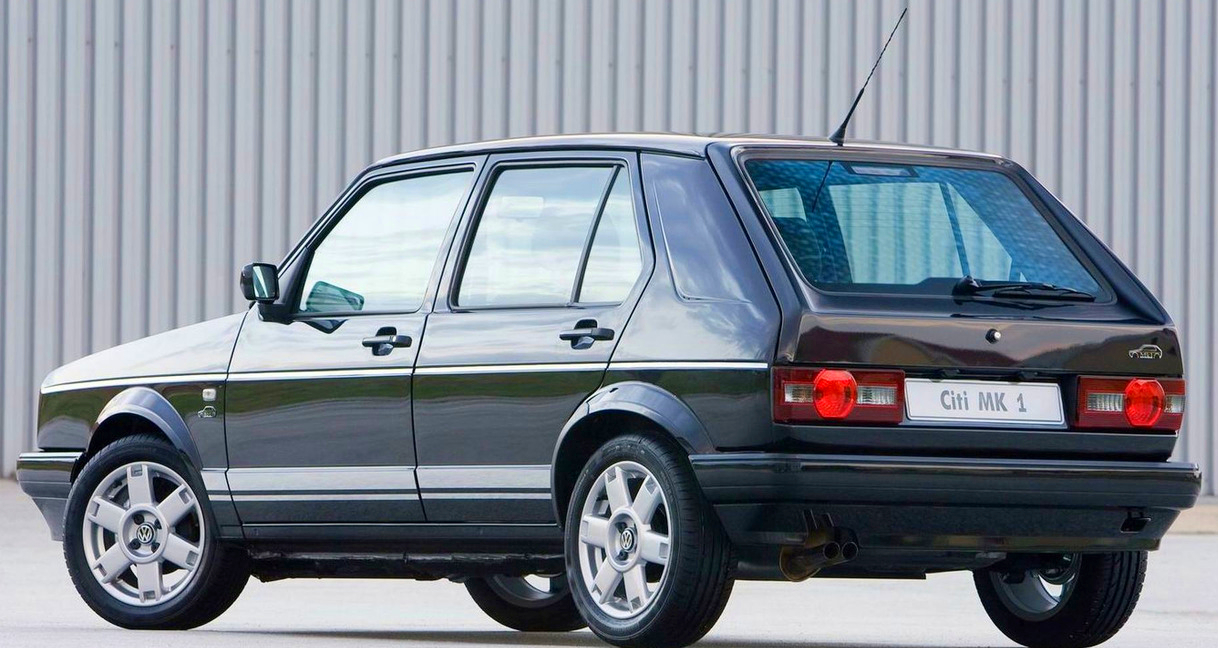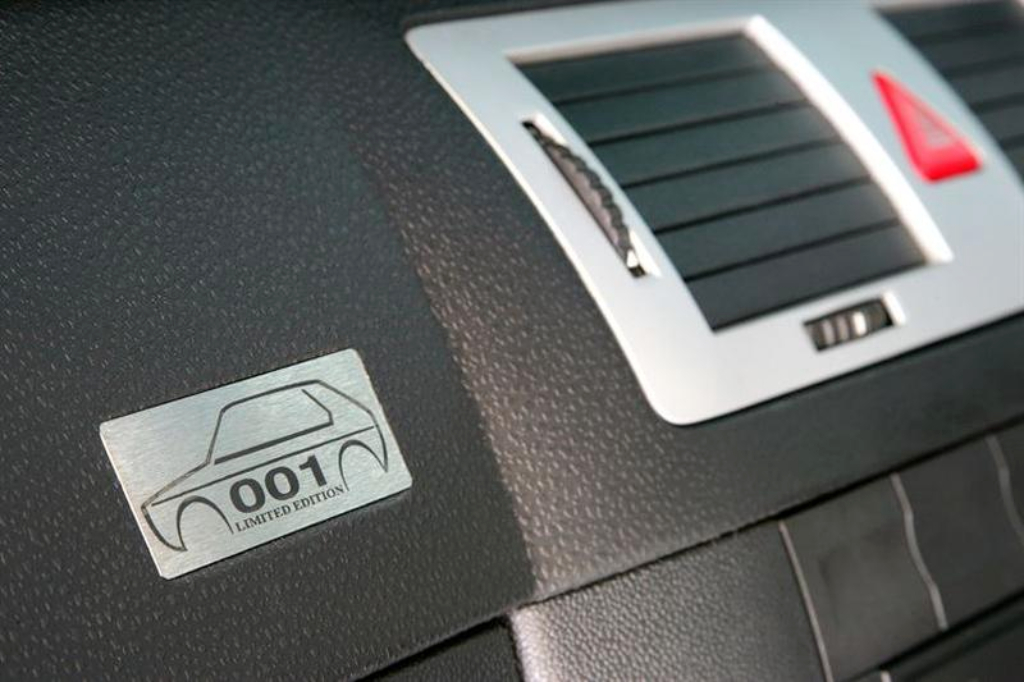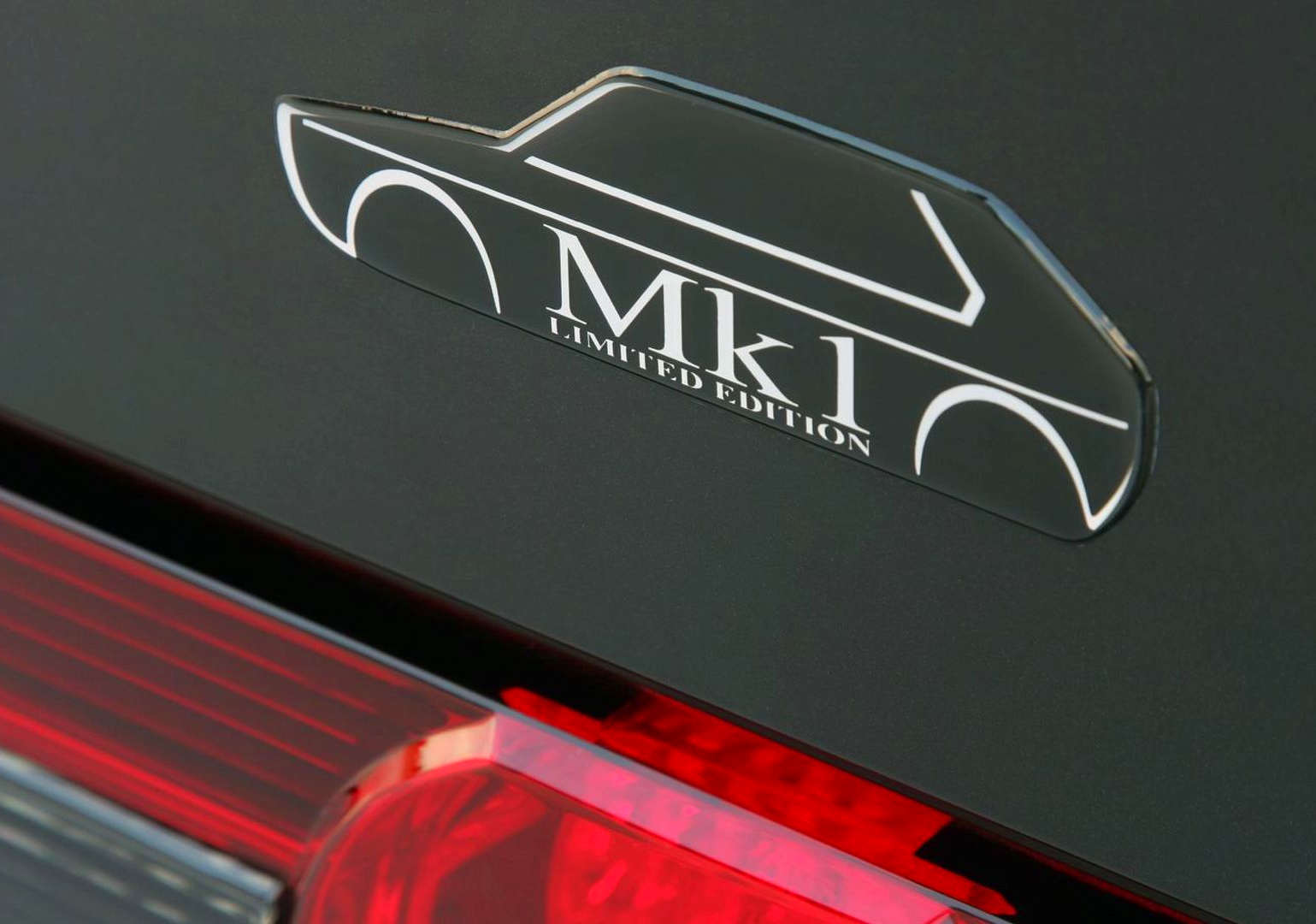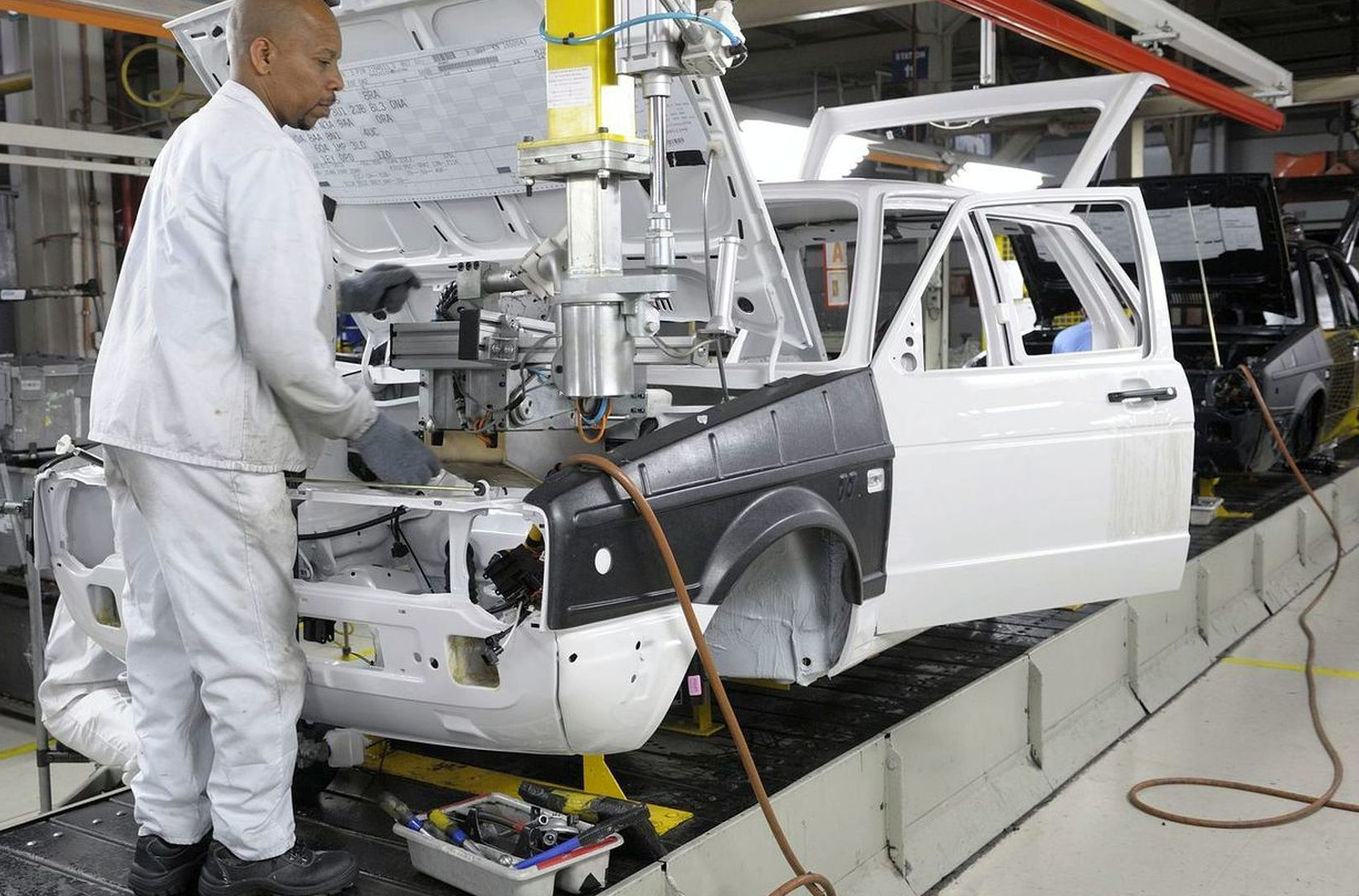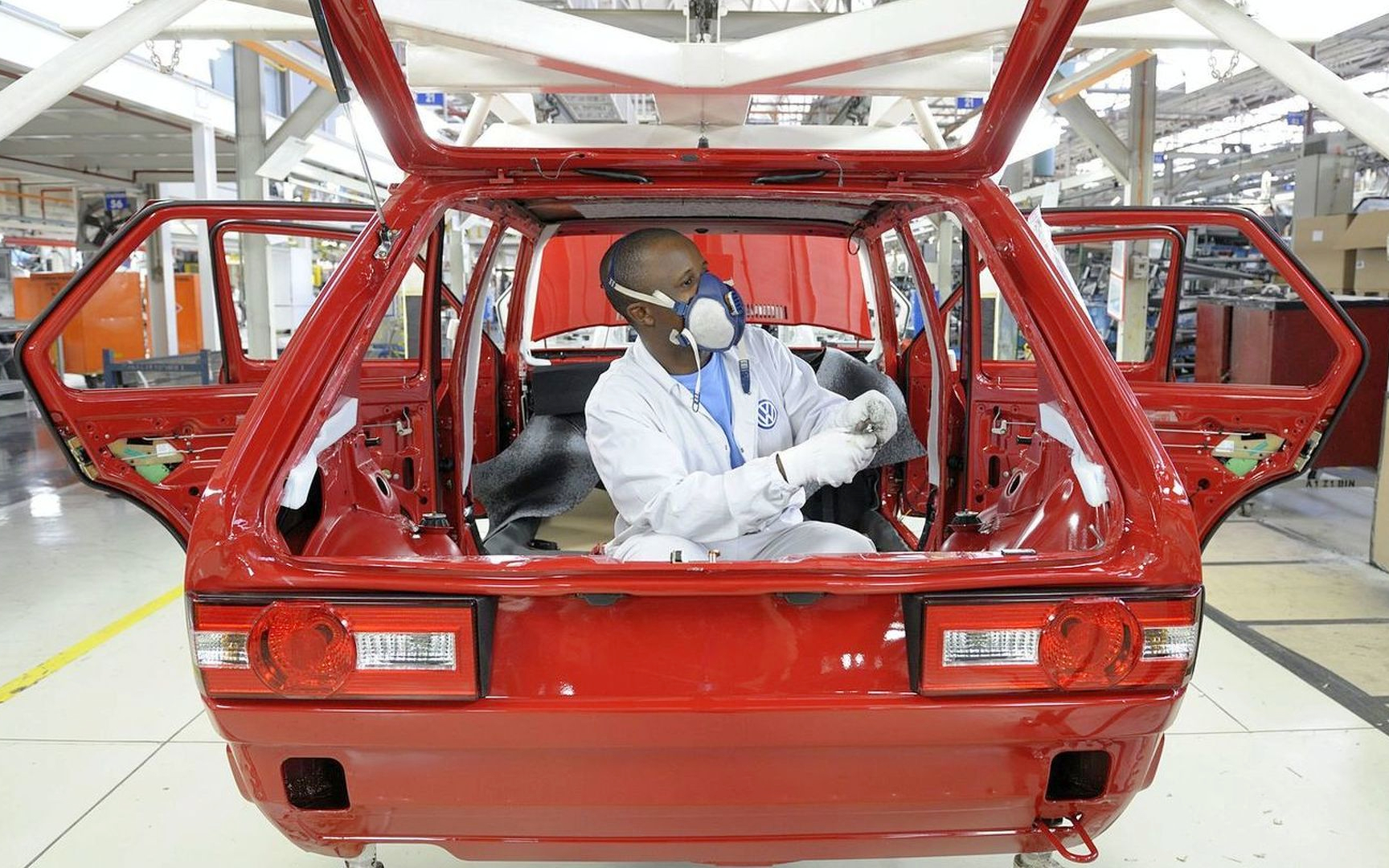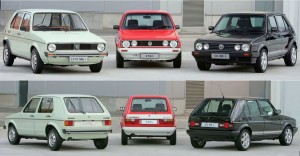
From left to right: a 1975 Golf, 1985 Citi Golf Sport, and 2009 Citi Golf “Mark 1” final commemorative edition.
Volkswagen’s Golf model, named after the wind (Golf is German for Gulf Stream), was first introduced for the 1975 model year to serve as a modern replacement for the aging Beetle and related models. Sold in the United States as the Rabbit, the first-generation Golf was a huge seller around the world during its decade-long production run which ended in 1984.
For 1985, the original Rabbit (and derivative model Jetta) were replaced by a second-generation model that grew in size, power, and price. Interestingly, the first-generation Golf was kept in production in South Africa as the “Citi Golf” for 25 more years – with 377,484 units being build through the end of the 2009 model year. Here, we’ll examine the details of these Citi Golf models along with year-to-year changes. We may also use the German term “Mark 1” when referring to this first-generation Golf platform. At the bottom of this article is a picture album with a range of Citi Golf pictures worth looking through.
Brief history of the first-generation Golf (a.k.a. Rabbit)
Losing sales to Ford of Europe and Opel (GM of Europe) in their home markets during the 1960s, Volkswagen decided it was time to develop a new range of vehicles that were more modern than its aging rear-engine, air-cooled lineup which included the Beetle, Karman-Ghia, Bus, 411/412 sedans, Squarebacks, and other variations. Front-engine layouts with front-wheel-drive were the future, and VW wanted in on it.
The Beetle replacement quest spurred VW’s purchase of German conglomerate AutoUnion in 1964 from Mercedes-Benz (see our related History of Audi article). Of particular interest to VW, the Audi brand (which was part of AutoUnion) was well along in development of practical front-wheel-drive platforms – something that VW had zero experience with.
In 1967, VW put that Audi engineering to work creating an initial set of front-wheel-drive prototypes designated the EA235 and EA235a, followed by a revised AutoUnion version in 1968 known as the EA276. All of these were small front-wheel-drive hatchbacks with a traditional air-cooled VW engine in the front. When VW director Heinz Nordhoff died in 1968, these initial air-cooled projects were cancelled – although the air-cooled, front engine concept saw later use in variations of the 1981-94 VW Gol (also known as the “Fox”).
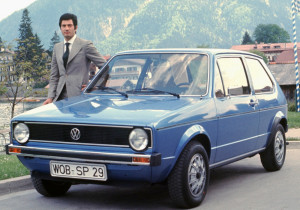 After top Volkswagen executives came to admire various Ferrari and Maserati models penned by Italian designer Giorgetto Giugiaro, they contracted him to start work in January 1970 on what would become the first-generation Golf – named after the German word “golfstrom” signifying Gulf Stream winds. In addition to the Golf, Giugiaro also created final designs for Volkswagen’s 1974-81 Dasher (Passat) and 1975 Scirocco. Interestingly, Giugiaro would later look back on the first-generation Golf and consider it the most important design of his career. That makes sense, considering the total number of years this design was in production unchanged. But we’ll get to that.
After top Volkswagen executives came to admire various Ferrari and Maserati models penned by Italian designer Giorgetto Giugiaro, they contracted him to start work in January 1970 on what would become the first-generation Golf – named after the German word “golfstrom” signifying Gulf Stream winds. In addition to the Golf, Giugiaro also created final designs for Volkswagen’s 1974-81 Dasher (Passat) and 1975 Scirocco. Interestingly, Giugiaro would later look back on the first-generation Golf and consider it the most important design of his career. That makes sense, considering the total number of years this design was in production unchanged. But we’ll get to that.
1985 – THE “CITI GOLF” IS BORN
When the second generation Golf (“Mark 2”) was launched as a 1985 model, Volkswagen of South Africa (which had been building the Mark 1 since 1978) found that the new iteration’s larger size and price made it unmarketable as an affordable entry-level car in the region. For this reason, they opted to keep the Mark 1 in production using their existing tooling in the Uitenhage, Eastern Cape plant. Additional tooling was later imported from the VW assembly works in Westmoreland, Pennsylvania in 1988 after extended Mark 1 production for South American markets ceased there.
Since VW South Africa was also charged with producing the new Mark 2 Golf, their limited manufacturing capacity meant only enough factory space existed for one version of the Citi Golf. Since it was popular as a family car, the 4-door body style was retained and the 2-door was dropped.
First Concepts for the “new” Mark 1.
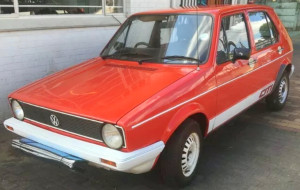 Because the 1985 Mark 2 was now taking over the standard Golf nameplate, the revised version of the Mark 1 needed to have a different yet relatable name. The first concept proposed was the “EconoGolf” – a bare-bones stripper model that resembled the dated look of the earliest 1970s Mark 1 so much, it tested poorly and was scrapped.
Because the 1985 Mark 2 was now taking over the standard Golf nameplate, the revised version of the Mark 1 needed to have a different yet relatable name. The first concept proposed was the “EconoGolf” – a bare-bones stripper model that resembled the dated look of the earliest 1970s Mark 1 so much, it tested poorly and was scrapped.
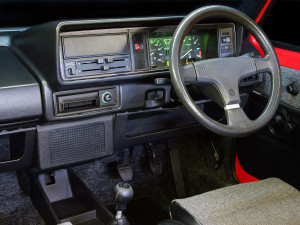 After further market research, product planners determined that sprucing up the decade-old design with bright colors and 2-tone paint treatments tested a lot better for minimal cost. That led to red, yellow, and blue production colors with white paint applied to wheels, bumpers, and lower body areas along with “CITI” decals. A slightly more powerful version of the standard 1.3-litre engine was fitted. Click here to watch an original 1985 VW Citi Golf introduction commercial on youtube.
After further market research, product planners determined that sprucing up the decade-old design with bright colors and 2-tone paint treatments tested a lot better for minimal cost. That led to red, yellow, and blue production colors with white paint applied to wheels, bumpers, and lower body areas along with “CITI” decals. A slightly more powerful version of the standard 1.3-litre engine was fitted. Click here to watch an original 1985 VW Citi Golf introduction commercial on youtube.
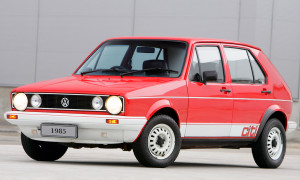 In mid 1985, a new, high performance Citi Golf Sport variation was launched with a 1.6-liter carbureted 4-cylinder engine, 5-speed manual, 4 round headlights, tachometer, wider tires, sport seats, and ad tagline “The new Citigolf Sport. Drive it home, Sport, drive it home”. Sport models could be had in the original 3 colors or a new black. The new sport model featured a bonus look of quad headlights instead of two – a fitment that was used from this point on in order to distinguish higher models from base versions.
In mid 1985, a new, high performance Citi Golf Sport variation was launched with a 1.6-liter carbureted 4-cylinder engine, 5-speed manual, 4 round headlights, tachometer, wider tires, sport seats, and ad tagline “The new Citigolf Sport. Drive it home, Sport, drive it home”. Sport models could be had in the original 3 colors or a new black. The new sport model featured a bonus look of quad headlights instead of two – a fitment that was used from this point on in order to distinguish higher models from base versions.
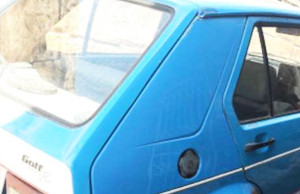 1988 – On 1985-87 models, bodywork was a continuation of how it had been through 1984. But the 1988 model year saw the addition of a hockey-shaped crease stamped into the C-pillars. This was primarily done to make stamping processes easier, but was billed publicly as a visual tension cue. A 3-speed automatic transmission was added as an option, and was a carryover from previous Mark 1s sold elsewhere.
1988 – On 1985-87 models, bodywork was a continuation of how it had been through 1984. But the 1988 model year saw the addition of a hockey-shaped crease stamped into the C-pillars. This was primarily done to make stamping processes easier, but was billed publicly as a visual tension cue. A 3-speed automatic transmission was added as an option, and was a carryover from previous Mark 1s sold elsewhere.
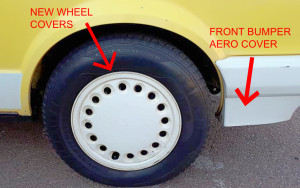 1989 – For the 1989 model year, more modern-looking bumper covers with aerodynamic lower aprons were fitted to the front and rear of all models to match those introduced on the (Mark 1) 1988 Cabriolets still sold in the United States. On base and lower-trim models, the plastic bumper covers were unpainted black.
1989 – For the 1989 model year, more modern-looking bumper covers with aerodynamic lower aprons were fitted to the front and rear of all models to match those introduced on the (Mark 1) 1988 Cabriolets still sold in the United States. On base and lower-trim models, the plastic bumper covers were unpainted black.
New aero wheel covers were offered on higher trim models.
Grilles were revised, and front fender profiles were slightly modified to accommodate them. Citi Sport models received the larger 1.8 liter engine and 5-speed manual gearbox already in use on the Golf Mark 2 GTS.
1990 – For the 1990 model year, VW of South Africa reintroduced the 1983-84 GTI sold around the world in Mark 1 form as the Citi CTi model – the first Citi Golf with fuel injection. Under the CTi’s hood was the same 1.8-liter K-Jetronic fuel-injected engine as the 1984 GTI original, making it the fastest Citi Golf to date with a top speed of just over 110 miles per hour. This sold well to younger performance-seekers who couldn’t afford the Mark 2 Golf GTI 16-valve. The CTi also featured twin exhaust pipe openings and “mushroom” design alloy wheels.
Higher models equipped with quad headlamps also got a rear window wiper-washer system and fender-mounted turn signal lights standard. Click here to see an original commercial introducing these fuel-injected Citi Golfs.
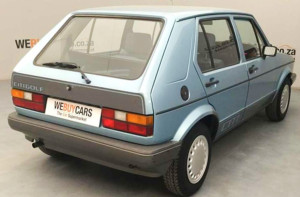 1991-1992 – For 1991 through 1992, a Designa edition was added to the rest of the lineup which included of a 1.3-liter base version, 1.6 (manual or auto), 1.8 Sport, and 1.8i CTi.
1991-1992 – For 1991 through 1992, a Designa edition was added to the rest of the lineup which included of a 1.3-liter base version, 1.6 (manual or auto), 1.8 Sport, and 1.8i CTi.
The Designa was available with a 1.6- or 1.8-liter engine along with some design elements from the CTi such as its alloy wheels, sport seats, 3-spoke steering wheel, color-coded bumpers and exterior mirrors. Designa was offered in five colours – Black Magic, Artic White, Diamond Silver, Monza Red and Sapphire Blue.
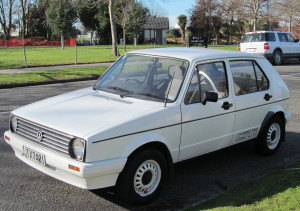 1992 – The base model became known as the Citi Shuttle, and featured an extremely affordable price point with only the bare essentials. The sole engine choice was the 1.3-liter carbureted 4-cylinder. It was succeeded by the equally-thrifty Chico in 1995.
1992 – The base model became known as the Citi Shuttle, and featured an extremely affordable price point with only the bare essentials. The sole engine choice was the 1.3-liter carbureted 4-cylinder. It was succeeded by the equally-thrifty Chico in 1995.
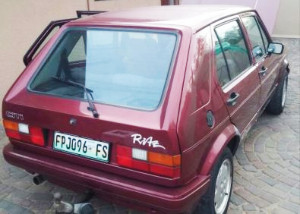 1994 – VW introduced a 3-year new car warranty and anti-rust warranty across the entire Citi Golf range. The Citi Golf Ritz model was launched with a 1.6-liter engine and upscale trim to celebrate the 10th anniversary of the Citi Golf, something noone in the company had predicted.
1994 – VW introduced a 3-year new car warranty and anti-rust warranty across the entire Citi Golf range. The Citi Golf Ritz model was launched with a 1.6-liter engine and upscale trim to celebrate the 10th anniversary of the Citi Golf, something noone in the company had predicted.
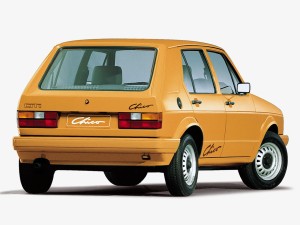 1995 -Replacing the lowest-priced “Shuttle” edition was a different cut-price “Chico” model, which had the same 1.3-liter engine initially along with new colors such as apple green and peach. Also new was a “Blues” edition with new trim, an AM/FM cassette radio, and roof-mounted aerial – features that would trickle down to other trim levels.
1995 -Replacing the lowest-priced “Shuttle” edition was a different cut-price “Chico” model, which had the same 1.3-liter engine initially along with new colors such as apple green and peach. Also new was a “Blues” edition with new trim, an AM/FM cassette radio, and roof-mounted aerial – features that would trickle down to other trim levels.
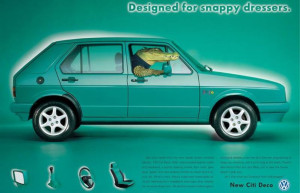 1996 – The “Deco” edition is introduced in Apple Green, Jazz Blue and Monza Red with matching seats, steering wheel, door panels, and shift lever. The base Chico gains additional standard features such as a 5-speed manual, tachometer, rear wiper, and digital clock with trip counter.
1996 – The “Deco” edition is introduced in Apple Green, Jazz Blue and Monza Red with matching seats, steering wheel, door panels, and shift lever. The base Chico gains additional standard features such as a 5-speed manual, tachometer, rear wiper, and digital clock with trip counter.
Other, more expensive models in the range also received upgrades such as a new center console, sportier 3-spoke steering wheel, and the preferable quad headlights.
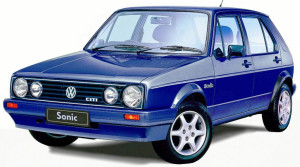 1997 – This year sees a new “Sonic” edition with a choice of 1.3 or 1.6 engine, alloy wheels, lowered suspension, third brake light, roof-mounted aerial, silver dials, and a cassette radio.
1997 – This year sees a new “Sonic” edition with a choice of 1.3 or 1.6 engine, alloy wheels, lowered suspension, third brake light, roof-mounted aerial, silver dials, and a cassette radio.
1998 – The 1.3-liter engine is replaced by a 1.4-liter carbureted engine for the base model Chico. A limited run of 800 Bafana Bafana editions are produced in honor of the football team by the same name.
1999 – Mechanical improvements were introduced in the form of better brakes and a freer-flowing exhaust system. New fuel-injected 1.4-liter and 1.6-liter engines are brought over from VW’s own Polo model to replace older carbureted ones in the middle of the lineup. For the lowest-priced Chico model, the carbureted 1.4-liter introduced for 1998 is still the cheapest offering, but the fuel-injected 1.4 is optional.
The “Citi Life” edition arrives with the 1.6-liter fuel injected engine and sporty appearance items such as 5-spoke aluminum wheels, sport seats, and a CD player radio.
2000 – Paying tribute to the “dot com” fever sweeping the world at the turn of the millennium, VW introduces a “Citi.com” edition on the internet. Buyers could order the car online, and features of this model included the desirable quad headlights and front side marker lights.
2001 – More improvements arrive in the shape of new alloy wheels, central locking, new covers for fuel-injected engines, updated trim, new front wipers and more cabin storage.
 2003 – In 2003, the Citi Golf received a significant facelift that included larger front side windows along with a modern-looking corporate dashboard. Separate no-draft type front windows that had always been present were eliminated in favor of larger roll-down glass pieces, and side view mirrors were repositioned accordingly.
2003 – In 2003, the Citi Golf received a significant facelift that included larger front side windows along with a modern-looking corporate dashboard. Separate no-draft type front windows that had always been present were eliminated in favor of larger roll-down glass pieces, and side view mirrors were repositioned accordingly.
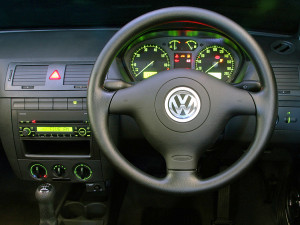 The rear wiper-washer combination was also moved into the glass of the (now standard) heated rear window to give the car a sleeker appearance. Along with this modification, the rear window was curved in such a way that it resembled a sort of “bubble”-like appearance, presumably to eliminate the annoying reflection of sunlight from the flat, steeply sloped window into the eyes of other drivers following behind.
The rear wiper-washer combination was also moved into the glass of the (now standard) heated rear window to give the car a sleeker appearance. Along with this modification, the rear window was curved in such a way that it resembled a sort of “bubble”-like appearance, presumably to eliminate the annoying reflection of sunlight from the flat, steeply sloped window into the eyes of other drivers following behind.
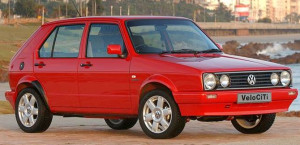 2005 – A new upscale VeloCiTi edition, available with 1.4- or 1.6-liter fuel injected engines, replaces Citi.com and Citi Life models. Inside, seats were leather, high-grade cloth, and silver accents on vents, gear shift levers, gauges, seatbelts, and pedals.
2005 – A new upscale VeloCiTi edition, available with 1.4- or 1.6-liter fuel injected engines, replaces Citi.com and Citi Life models. Inside, seats were leather, high-grade cloth, and silver accents on vents, gear shift levers, gauges, seatbelts, and pedals.
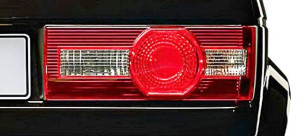 2006 – A notable facelift saw modifications to the front bumper apron which added new air intake holes. For the first time since the 1981 model year, taillights were redesigned to feature a circular inset taillight–brakelight combination.
2006 – A notable facelift saw modifications to the front bumper apron which added new air intake holes. For the first time since the 1981 model year, taillights were redesigned to feature a circular inset taillight–brakelight combination.
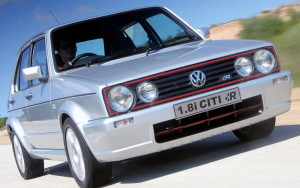 Late 2006 – Mirroring the look of VW’s own recently-introduced Golf Mark 5 GTI, the Citi Golf added a sporty R edition model with red accents around grilles, red stitching around leather seats, gearshift lever, and emergency brake boot. Brake calipers were also painted red.
Late 2006 – Mirroring the look of VW’s own recently-introduced Golf Mark 5 GTI, the Citi Golf added a sporty R edition model with red accents around grilles, red stitching around leather seats, gearshift lever, and emergency brake boot. Brake calipers were also painted red.
R-line introduced new levels of sportier handling with lowered ride height, firmer shocks & springs, new 15-inch alloy wheels, and a new aero body kit to differentiate it visibly. The R’s engine was a more powerful version of the fuel-inected 1.8-liter which resulted in a 0-60 time of 8.4 seconds. Because of its higher price, only 375 units were built from late 2006 through 2008.
2008 – The Citi’s time was starting to run out as newer vehicles from competitors had gradually surpassed it with better safety features and equipment that would have been impossible to adapt to the existing platform.
Volkswagen adapted emissions to comply with EU2 emissions regulations South Africa was now mandating. For this reason, all 2008-later Citi Golfs were fuel injected. Unfortunately, the R-Line was dropped because the costs of adapting this particular model would not have been been cost effective in limited production.
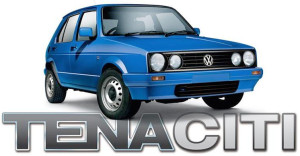 During the year, a new “TenaCiti” model replaces the entry-level Chico. From bottom to top, the model lineup now consisted of the TenaCiti (1.4-liter), CitiStorm (1.4-liter), CitiRox (1.4- and 1.6-liter), and the CitiSport (1.6-liter). Top line models were available with a CD-player radio, remote central locking, and an alarm system.
During the year, a new “TenaCiti” model replaces the entry-level Chico. From bottom to top, the model lineup now consisted of the TenaCiti (1.4-liter), CitiStorm (1.4-liter), CitiRox (1.4- and 1.6-liter), and the CitiSport (1.6-liter). Top line models were available with a CD-player radio, remote central locking, and an alarm system.
Towards the end of 2008, a Citi Golf “Wolf” is introduced with sporty suspension and appearance features of the CitiSport 1.6, but with the less expensive 1.4-liter liter engine.
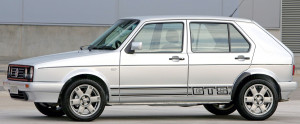 2009 models – VW made a last-ditch to be more aligned with competitors by fitting 2009 models with a driver-side airbag – notably the first ever for a Golf Mark 1. Special models added were the Citi Golf Xcite with a powerful Lightning Audio sound system and the Citi Golf Billabong, a decorative package based on Billabong surf equipment logos and colors.
2009 models – VW made a last-ditch to be more aligned with competitors by fitting 2009 models with a driver-side airbag – notably the first ever for a Golf Mark 1. Special models added were the Citi Golf Xcite with a powerful Lightning Audio sound system and the Citi Golf Billabong, a decorative package based on Billabong surf equipment logos and colors.
Another legendary Golf badge, the GTS, is added with a 1.4-liter engine and the full sport treatment of sport suspension & seats, 15-inch aluminum wheels, red grille surround, and color-coded bumpers. Available in 6 colors, a limited run of 375 units were manufactured.
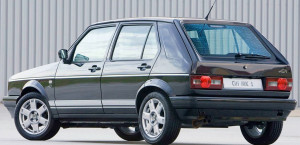 Ultimately, time ran out for the Citi Golf when production ended on August 21, 2009. To commemorate the final run, 1000 “Citi Mk1” (1.6 liter) models were made in black pearl and shadow blue. These were equipped with GTS suspensions, 15-inch wheels, tinted windows, leather sport steering wheels, and chrome side stripes.
Ultimately, time ran out for the Citi Golf when production ended on August 21, 2009. To commemorate the final run, 1000 “Citi Mk1” (1.6 liter) models were made in black pearl and shadow blue. These were equipped with GTS suspensions, 15-inch wheels, tinted windows, leather sport steering wheels, and chrome side stripes.
In 2010, John Voelcker of Green Car Reports wrote about his experience of renting a then-new Citi Golf with 19,000 miles on it when visiting South Africa. Like this writer, Voelcker once owned a 1979 Rabbit along with a 1980 model – so I appreciated his take on driving an “almost-brand-new, 35-year-old, 1975 Volkswagen Rabbit”. I imagine that, if given the chance to get behind the wheel of a new Citi Golf, I would have felt similarly. It’s worth a read here.
CLICK ON ANY OF THE PICTURES BELOW TO EXPAND TO FULL SIZE. USE THE SMALL ARROWS UNDERNEATH PICTURES TO SCROLL BACKWARD OR FORWARD.
- In 1967, VW put their newly acquired Audi division to work on developing a front-wheel-drive vehicle. This version is known as the EA235, and featured an air-cooled VW engine up front.
- This second 1967 front-wheel-drive prototype was known as the EA235a, also with an air-cooled engine in the front.
- In 1968, VW did another round of front-wheel-drive prototype designs. This is known as the EA276.
- A frontal view of VW’s early front-wheel-drive 1968 EA276. This one also featured a traditional air-cooled VW engine.
- In this 1970 rendering, styling began to lean toward the Mark 1 Golf we know today.
- After the previous 1967-68 air-cooled protypes were cancelled, VW began working on water-cooled engines. This 1970 prototype was an almost-final design.
- Here, the initial prototype with composite flush headlight assemblies (left) is seen next to the finalized production version (right).
- Final designs for the first-generation Golf were cemented in 1973 for production beginning April, 1974.
- Of course, the sliding door on this prototype never saw production.
- Here, the lead designer of the Golf 1, Giorgetto Giugiaro, stands with an early pre-production model.
- Giugiaro would later look back on the first-generation Golf and consider it the most important design of his career.
- 1975 was the first model year for the Golf Mark 1 around the world. As seen here in this ad, versions sold in the United States featured “Rabbit” nameplates.
- Fans of early Mark 1 Golfs note that 1975 and some 1976 models featured creases on the rear panels described as “swallow tails”. During the 1976 model year, these disappeared.
- In European markets, the GTI was offered in 2- and 4-door form.
- The United States would not see a Mark 1 GTI version until the 1983 model year.
- 1976 GTIs featured a 1.6-liter fuel-injected engine that produced 108 horsepower, impressive for the day.
- An interesting note: For the 1977 model year, the U.S. Rabbit offered a “lean” running engine that met EPA pollution regulations without the use of a catalytic converter. However, this version was short-lived and dropped soon after.
- This delivery picture offers a look at the square headlights and front end look that were unique to U.S. 1979-80 Rabbits.
- A picture of the 1979 VW Rabbit “C” this writer owned from 1985 to 1988. With fuel injection and a 5-speed manual, it offered respectable pep.
- This 1981 VW ad introduces a redesigned front end for U.S.-market Rabbits. Turbine wheel covers seen here were equipped on high-end models from 1979-84.
- A 1981 VW Rabbit LS. In the United States, the LS was the highest-trim level from 1981-84.
- Visible on this 1982 U.S. Rabbit LS are tail lights that all Golf Mark 1s received from 1981-84. 1982 LS versions were equipped with black fender flares.
- Beginning with the 1981 model year, Euro Golf GTIs received this new front end treatment with quad headlights. This look would continue through 2009.
- For the 1985 model year, a redesigned Golf Mark 2 generation grew in size and price. To remain competitive, Mark 1 production continued as the “Citi Golf”.
- Partway through the 1985 model year, a Citi Golf Sport model debuted with quad headlights and more power.
- As this 1985 factory promo picture shows, Citi Golfs were introduced in 3 splashy colors with white paint along bottom sections and bumpers.
- Note that lower model Citi Golfs only had 2 headlights – a trend that would continue through the 2002 model year.
- A closer look at the 1985 VW Citi Golf rear.
- Front view of the 1985 Citi Golf Sport, distinguished visibly by quad headlights.
- 1985 Citi Golf Sport models debuted with this interior.
- All Citi Golfs through the 1987 model year featured manual transmissions.
- This 1987 Citi Golf is an example of how some higher trim levels featured the Sport treatment of quad headlights and lower airdam spoilers, without the splashy paint treatment.
- This 1988 model year Citi Golf allows a look at new hockey stick-shaped creases stamped into the C-pillar panels. These would continue through 2009.
- Front view of a higher-trim 1988 Citi Golf.
- For 1988, a 3-speed automatic transmission became available on Citi Golf models. The trans itself and all related equipment was carried over from previous 1975-84 Mark 1s.
- Like many Citi Golfs, this 1988 model has been customized with lower-riding suspension components. Note the absence of any kind of rear bumper cover or air dam.
- For the 1989 model year, more modern-looking bumper covers with aerodynamic lower aprons were fitted to the front and rear of all models.
- A closer look at the front bumper cover with integrated airdam introduced on 1989 models.
- Also new for 1989 were these plastic wheel covers.
- A look at the rear bumper cover which debuted for 1989.
- On lower-trim models, plastic bumper covers were unpainted. 1991 model shown.
- A look at an unpainted front plastic bumper cover. 1992 Citi Golf shown.
- A typical interior of a standard trim Citi Golf.
- For the 1990 model year, the CTi model was introduced – the first Citi Golf with fuel injection. Under the CTi’s hood was the same 1.8-liter K-Jetronic fuel-injected engine as the last Mark1 GTI (1984), making it the fastest Citi Golf to date with a top speed of just over 110 mph.
- 1992 VW Citi Golf base model with Sport paint package.
- The base model became known as the Citi Shuttle, and featured an extremely affordable price point with only the bare essentials.
- The VW Citi Golf Shuttle featured a sole engine choice of a 1.3-liter carbureted 4-cylinder.
- Replacing the lowest-priced “Shuttle” edition was a different cut-price “Chico” model for 1995.
- A rear view of a 1995 Citi Golf Chico.
- The “Deco” edition is introduced in Apple Green, Jazz Blue and Monza Red with matching seats, steering wheel, door panels, and shift lever.
- 1996 VW Chico Golf Deco advertisement.
- For 1997, a new “Sonic” edition offered a choice of 1.3 or 1.6-liter engines.
- The Citi Golf Sonic was relatively well-equipped with alloy wheels, lowered suspension, third brake light, roof-mounted aerial, silver dials, and a cassette radio.
- For 2003, the Citi Golf received a significant facelift that included larger front side windows. Separate no-draft type front windows that had always been present were eliminated in favor of larger roll-down glass pieces, and side view mirrors were repositioned accordingly.
- For 2003, the rear wiper-washer combination was also moved into the glass of the (now standard) heated rear window to give the car a sleeker appearance.
- Along with this modification, the rear window glass now had a slightly curved shape.
- All Citi Golfs received upgraded, more modern interiors for 2003 also.
- 2003 VW Citi Golf interior.
- 2003 VW Citi Golf interior.
- Mirroring the look of VW’s own recently-introduced Golf Mark 5 GTI, the Citi Golf added a sporty R edition model late in 2006.
- Diagrammed here are the factory body kit pieces unique to the Citi Golf R.
- The R-line introduced new levels of sportier handling with lowered ride height, firmer shocks & springs, new 15-inch alloy wheels.
- Interiors feature red stitching around leather seats, the gearshift lever, and emergency brake boot.
- For 2006, taillights were redesigned to feature a circular inset taillight–brakelight combination.
- The R series engine was a more powerful version of the 1.8-liter fuel-injected engine.
- Because of the R’s higher price, only 375 units were built from late 2006 through 2008.
- A later-vintage VW Citi Golf in service as a police car.
- During the 2008 model year, a new “TenaCiti” model replaced the entry-level Chico.
- The 2008 VW Citi Golf Rox edition.
- Towards the end of 2008, a Citi Golf “Wolf” is introduced with sporty suspension and appearance features of the CitiSport 1.6, but with the less expensive 1.4-liter liter engine.
- For 2009, the GTS is added with a 1.4-liter engine and the full sport treatment of sport suspension & seats, 15-inch aluminum wheels, red grille surround, and color-coded bumpers.
- To commemorate the end of Citi Golf production, 1000 “Citi Mk1” (1.6 liter) models were made in black pearl and shadow blue.
- “MK1” edition models received interior plaques with the production number showing its build sequence in the 1,000 that were made.
- 2009 “MK1” edition models also got special badging on the trunklid.
- After 25 years of production, 377,484 Citi Golf units were built.

